








How to Join
How to Join
Eat out at any restaurant in Illinois and order at least one beef item off the menu and send in a copy of your receipt to the Illinois Beef Association
Club Member Perks
Club Member Perks
Every Beef Eaters Club member gets the annual Beef Eaters Club sticker! Ten lucky members will be selected to win a Summer Grilling Basket, three will be selected to win gift certificates to a listing on the IBA Local Beef Directory, and one member will win the Ultimate Grilling Prize!
Official Rules & Regulations








The popular CattleFax Outlook Seminar, held as part of CattleCon 2025 in San Antonio, Texas, shared expert market and weather analysis today.
February 2025 brought IBA staff and Illinois cattle folks down to San Antonio for a grand time of fellowship, growth in knowledge of current issues and even a bit of Texas-sized fun at CattleCon.

The National Cattlemen’s Beef Association’s Executive Committee approved the organization’s policy priorities at CattleCon 2025.


Will there be a new Farm Bill in 2025?

The annual beef event for Illinois exhibitors and premier sales was once a gain a
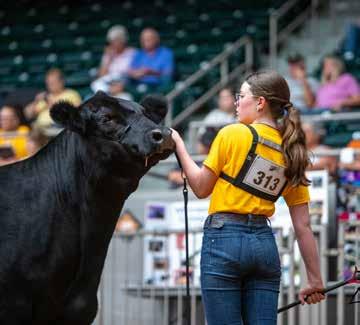



Illinois
Dave Duzan, Lexington President
IBA Board of Governors
Email: duzanagy@mtco.com


Directors
Chair: Justin Rahn
Vice Chair: Ted Prehn
Secretary/Treasurer: Scott Wetzell
District 1
Justin Rahn, Mt. Carroll, justinrahn@hotmail.com
1st term expires: 2025 | 2nd term expires: 2028 District 2
Jake Perino, Deer Grove, twinrailsoverp@gmail.com
1st term expires: 2022 | 2nd term expires: 2025
District 3
Doug Hanson, Danforth, dough@proharvestseeds.com
1st term expires: 2026 | 2nd term expires: 2029
District 4
Cody Lowderman, Macomb, codylowderman@yahoo.com
1st term expires: 2024 | 2nd term expires: 2027
District 5
Joan Harrison, Minier, joan.harrison16@yahoo.com
1st term expires: 2027 | 2nd term expires: 20230
District 6
Matt Witte, Heyworth, matthewcwitte@gmail.com
1st term expires: 2022 | 2nd term expires: 2025 District 7
Kevin Rose, Salem, krr1998@hotmail.com
1st term expires: 2024 | 2nd term expires: 2027
At Large Directors
Scott Wetzell, Tampico, sdwetz@gmail.com
1st term expires: 2026 | 2nd term expires: 2029
Jake Fidler, Fairview, salebarn@mymctc.net
1st term expires: 2022 | 2nd term expires: 2025
Bruce Betzold, Nokomis, betzoldfarms@yahoo.com
1st term expires: 2022 | 2nd term expires: 2025
Larisa Willrett, Malta, lwillrett1313@gmail.com
1st term expires: 2022 | 2nd term expires: 2025
Rick Dean, Le Roy, deanfarm4@gmail.com
1st term expires: 2024 | 2nd term expires: 2027
Ted Prehn, Jerseyville, tedprehn@gmail.com
1st term expires: 2026 | 2nd term expires: 2029
Executive Vice President
Financial Officer
Programs & Services Manager
Membership & Communications Manager
Publications & Business Operations Manager
Directors
Chair: Thaddeus Tharp
Vice Chair: Jamie Martz
Shannon Welsh, Blandinsville Vice President
IBA Board of Governors
Email: cowdynasty@yahoo.com
Secretary/Treasurer: Betsy Pech
District 1
Anna Flikkema, Lanark, flikkema.anna@gmail.com
1st term expires: 2025 | 2nd term expires: 2028
Lou Lamoreux, Lanark, unclelou49@gmail.com
1st term expires: 2023 | 2nd term expires: 2026
District 2
OPEN
District 3
Jamie Martz, Maple Park, jamiemartz85@gmail.com
1st term expires: 2024 | 2nd term expires: 2027
Kip Harms, Cullom, harms2@frontiernet.com
1st term expires: 2026 | 2nd term expires: 2029
District 4
Carol Lock, Avon, clock7857@gmail.com
1st term expires: 2025 | 2nd term expires: 2028
Thad Tharp, Monmouth, tthaddeus88@gmail.com
1st term expires: 2023 | 2nd term expires: 2026
District 5
Betsy Pech, Lincoln, bpech55@gmail.com
1st term expires: 2027 | 2nd term expires: 2030
Darin Smith, Alexander, simmybreeder68@hotmail.com
1st term expires: 2023 | 2nd term expires: 2026
District 6
OPEN
Wendell Alwardt, Altamont, walwardt1@yahoo.com
1st term expires: 2023 | 2nd term expires: 2026
District 7
Garrett Mattox, Anna, bigmcattle@hotmail.com
1st term expires: 2025 | 2nd term expires: 2028
Ryan DeWitt, Cobden, rdewitt93@gmail.com
1st term expires: 2026 | 2nd term expires: 2029
Josh St. Peters, josh@illinoisbeef.com
Mary Faber, accounting@illinoisbeef.com
Annie Schoetmer, annie@illinoisbeef.com
Devin Bollman, devin@illinoisbeef.com
Olivia Hoots, olivia@illinoisbeef.com
Dr. Paul Walker
Travis Meteer
Dr. Teresa Steckler
Dr. Jennifer Earing
Past President
U of I Extension
U of I Extension
Illinois State University

Field Advisor hosts monthly webinars providing independent, unbiased information on agronomic and production challenges for Illinois farmers. CCA credits are offered.
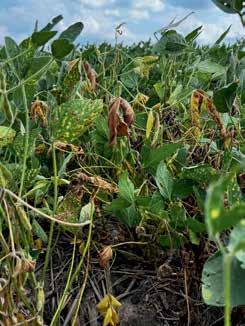
Red Crown Rot Disease Update in IL

Implementing the EPA Herbicide Strategy Biologicals: Barrier or a Game Changer?
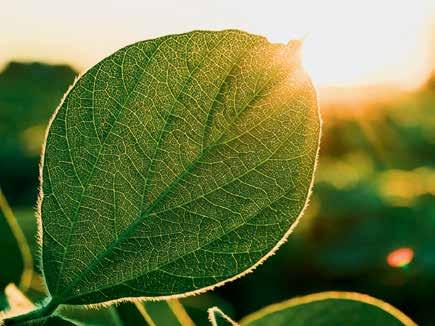
Topics above are an example of the webinars we offer. These webinars are currently available to view on Field Advisor’s YouTube channel.
Watch the webinar replays and subscribe to Field Advisor to be notified of

Dave Duzan, Illinois Beef Association President
The beginning of every year for the Illinois Beef Association is chock full of activities to keep our board and staff busy. We have had one productive board meeting so far, where most had to tune-in via video chat because of the wintery conditions.
Next was our annual trip to CattleCon and NCBA Tradeshow – learn more about all we did later in this issue. I once again got to catch up on current industry issues and spend time with other Illinois cattlemen discussing them in detail. My wife, Kellie, and I also had a nice time in San Antonio.
After returning home our staff got busy putting the finishing touches on the Illinois Beef Expo event. Sales and show results are thoroughly detailed in this issue too. Your IBA staff and board had a presence across the event, from sales, to the ring, and into the tradeshow, we were there. This is an event that serves purebred producers with the strong presence of breed associations, and all other producers too with the extensive resources that can be learned about in the tradeshow.
On into the spring our current presence at the Illinois Capitol will continue. There have already been some proposed bills we are working hard to kill or amend so our
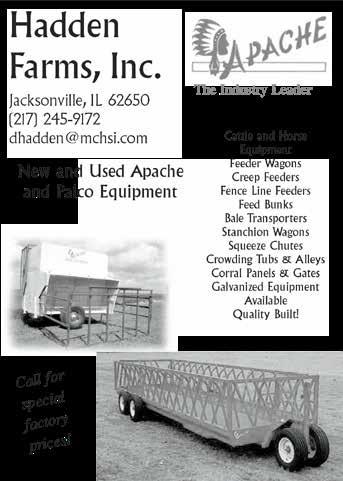
producers can continue to raise the best beef possible. Thank you for again becoming a member in 2025 so we can continue this extremely important work.
If you have yet to renew your membership for the current year, make sure to get it done! Send in the form to our office – 2501 N 8th Street, Springfield, IL 62702. We cannot do the work we do to serve producers without these contributions. I hope each of our members knows how grateful we are to be doing such an important work.
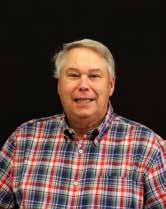
Also, regarding membership, make sure to get in those member nominations (see facing page). Every year we have the privilege of awarding six worthy members that YOU select. If you know a producer in your area – no matter the sector of the industry – doing an exemplary job, say something, NOMINATE THEM! All you need to do is visit illinoisbeef.com/membership/awards.
Well, that is all for now. Reach out to Josh or the ladies in the office if you have any concerns, needs or questions. We have a staff always ready to help out!

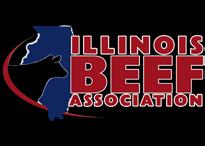
Your nominations for the IBA member awards are critical to recognize those individuals who "give their all" to make our industry the best it can be. This is an opportunity to recognize them both personally and professionally.
All awards nominations are due by March 28, 2025. Nominations can be made at illinoisbeef.com/membership/awards


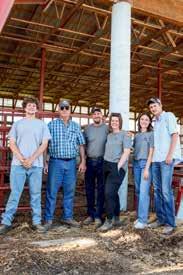


A beef producer family in Illinois who has done an outstanding job in the production and promotion of beef and exemplified leadership skills on the county and state level.
A member of IBA who continually goes above and beyond to support the efforts of the association, and demonstrates a commitment to the Illinois cattle industry, and its people.
A beef producer in Illinois who exemplifies integrity, leadership and success in the production and promotion of the commercial cattle industry.
A beef producer in Illinois who exemplifies integrity, leadership and success in the production and promotion of the purebred cattle industry.
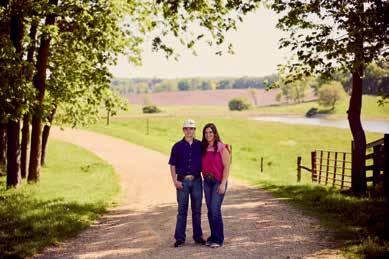
A beef producer in Illinois whose natural resource stewardship practices protect the environment and contribute to productivity and profitability.
A member of the Illinois Junior Beef Association who exemplifies integrity, leadership and commitment to being active in Illinois' beef cattle industry.
Josh St. Peters, Illinois Beef Association Executive Vice President
The March/April issue of this magazine is traditionally one of our largest publications of the year, and the 2025 edition is no exception. As you will see, we have packed the book full of featured content on a variety of topics important to our state’s cattle industry. Primarily, this spring issue is our ode to the Junior exhibitors, though, with our extensive coverage of the Illinois Beef Expo. This year’s four-day cattle jamboree in Springfield was a unique experience in the weather department – we started Expo with temperatures around 5 degrees, and by Sunday we were loading out show cattle in 50-degree temps. But the shows were outstanding, the trade show was packed full of great exhibits, and the sales were hot – records were set.
Illinois Beef Expo is an important program for our industry, as it provides us with three valuable outlets: a venue to celebrate and promote the next generation of Illinois’ beef producers, a public relations opportunity to engage media and the general public to talk about beef production and family farms across our state, and a chance to come together in a family-reunion of sorts, among our IBA membership, as well as the other cattle organizations that make up our industry throughout Illinois.
Thank you to all of you who made the trip to Springfield this February to take part in the 2025 Illinois Beef Expo.
The event would not be possible if it were not for the dozens of sponsors and trade show partners who invest their marketing and promotional dollars to affiliate their brands with the Expo. We were blessed with several new partners this year, and it was great to see so many familiar faces back again at the 2025 event. The sponsors also support our ability to put on the sales and the junior events, like the shows, livestock judging competition and the skillathon.
Expo is led by a committee of volunteers. The size and scale of the event requires the group to be working a year out, so plans are already in motion for next February’s Expo. The board of IBE recently revised their by-laws, building out plans for adding new directors to their ranks – including representatives from more breed organizations, as well as at-large directors to represent the industry.

Dr. Wes Keller served on the board of directors for Expo for several years, as Chairman of the event for several consecutive Expos. He wrapped up his term at the end of 2024, and his leadership was very impactful on many of the upgrades that were made to IBE; he was instrumental in bringing the all-breed heifer sale to Expo, as well as developing the frozen genetics sale, as well. Thank you, Wes, for your leadership and ideas that helped build Expo back to its successful track record.
With Dr. Keller’s completed term, a new chairperson was elected to serve Expo. Kim Carney-Rhodes has been a longtime fixture on the board, representing the Illinois Hereford Association. She was chosen as the new chair in 2025, along side vice chairman Chris Cassady, who represents the Illinois Angus Association on IBE’s committee. The two of them helped shape a great Expo for this year and are working to enhance it even more for next year.
Regarding leaders making plans, your Illinois Beef Association Board of Governors is fresh off of a strategic planning session that kicked off earlier this month in

Champaign. The board came together as part of a two-day gathering, in conjunction with the Illinois Beef Quality Showcase open house, to spend some time looking at how we can grow and strengthen this association over the next several years.
There was a lot of discussion about how we have grown the organization in the last five years, and what can be done to maintain this momentum for the next five years. Membership has grown during this time, up by nearly onethird. We continue to see a commitment to IBA through annual renewals, and our work to recruit new members is helping us expand our footprint across the state. But we want to keep growing. Illinois is home to more than 14,000 family farms with cattle on feed. We have a lot of room to increase membership, and we know that it comes from bringing services and benefits that create value for your operation.
The board spent time looking at goals from the association’s five-year plan, evaluating what is working well and where we can improve. They noted that our legislative presence is having a positive impact on Illinois’ cattle industry and see that as a critical need to continue strengthening in the years to come. They also identified communications tools and information as extremely valuable to our membership – through this magazine, for example, as well as online with our social media presence and in our Cattle Concepts e-mail newsletter. The planning session also looked at our growth with more local programs throughout the state, and the desire to expand upon that outreach with new programs and more funds designated to helping local beef affiliates promote product and their membership in their home counties.
We are always looking for member feedback to help shape our program plans, and this process highlights the importance of our grassroots model. Local cattlemen are who drive this organization, and we need your input and influence to keep fueling the plans and priorities that staff focus on each day. If you have ideas or suggestions about things you would like to see IBA delivering in your neck of the woods or on behalf of your farm, please reach out to me at the office,
or contact one of our board leaders to share your perspective. Their contact information is listed here in the magazine, and they enjoy hearing from members.
I will end on the topic of legislative outreach, as we are in the season of policy work both in our state capital and in our nation’s capital. As we all are seeing, it is a very politically charged year thus far. But politics aside, a lot of important policy work is underway. On the federal level, we are continuing to engage with Congress and our legislative staff at NCBA to push for a Farm Bill that brings value and reduced regulation to the cattle farm. I am hopeful we can see some progress in Washington later this spring, once the President’s administration is fully in place, with Cabinet members seated and agencies staffed to work on this critically important piece of farm legislation. USDA Secretary Rollins is a friend of the beef producer – and I am optimistic that she is going to be a great ally for our industry on Capitol Hill.
In Springfield we are working through the spring legislative session with an increasing pace. The General Assembly came to town at the beginning of the year and brought with them a massive pile of ideas, in the form of more than 6,000 bills introduced at the beginning of session. We have reached the point in the process where that must be whittled down, extensively, as there is only so much bandwidth and so many hours to debate and address state policy proposals. Leaders in both Chambers have been working to help their members in the House and the Senate prioritize what bills are advancing, and by the end of May they will wrap up their work for spring. Budgets are tighter this year, and that has been a force in discussions. IBA has been working to defend our members by staving off measures that would create new, more burdensome regulations on livestock production. Meanwhile, we are also working to promote a set of bills that would reform, and reduce, estate tax provisions here in Illinois, which are currently very detrimental to succession planning in our industry.
As always, if you have questions or need information, please do not hesitate to contact me directly or reach out to a member of the staff here at IBA.
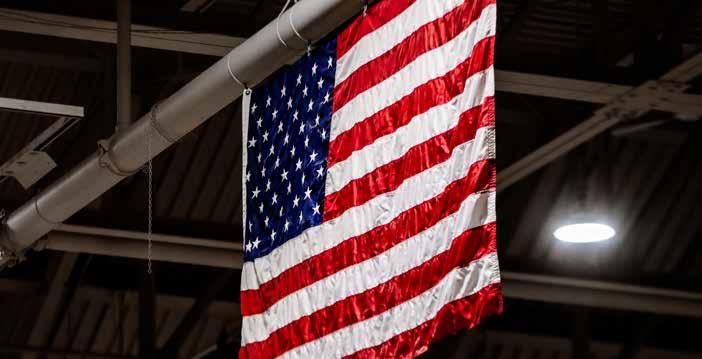
Travis Meteer, University of Illinois Extension Beef Specialist
Observation and reflection seem to be a lost art in a world dominated by phone screens, data sets, and short attention spans. As we enter the grazing season, I challenge you to observe and reflect when watching cows graze. Below are just a few of many observations that I have made when watching cows graze in the spring/summer grazing season.
Cattle selectively graze. Cattle rarely mow the paddock at a certain height like a mower. They prefer tender, leafy plants over stemmy, mature growth. Cattle are largely path of least resistance eaters. They prefer what is easy to eat, such as tender, immature plants. Also, immature plants are higher in nutritive value compared to a mature plant. Unless we stock cattle at high density, they will selectively graze.
I have also observed spots in the pasture that are ungrazed adjacent to areas that are heavily grazed. Many times the areas that are left ungrazed were inhabited by a manure patty or a spiny weed. Sometimes, they are less desirable plant species like endophyte-infected fescue. Thus, dung beetles and soil microbes are important to cycle manure. Control of spiny, irritating weeds is warranted. Selecting and managing for desirable plants species helps increase pasture utilization. Distance from water influences grazing pressure. If cattle are required to trail a long distance to water, they will not graze acreage evenly. This is especially true in the summer. Undoubtedly, cattle will apply more grazing pressure to the plants near the water.
When planning a grazing system, water is likely the

biggest influencer. Locating the waterer within 700-800 feet of the farthest area in the paddock will help keep grazing uniform. Obviously, this isn’t always economical, so having the ability to take water to different areas of the pasture can help increase pasture utilization. Pastures or paddocks that are greater distance from a water source may be best utilized in the fall or when cattle are more comfortable to leave the water.
Fly pressure makes cows huddle up and stop grazing. Cows will stand in water or mud to limit surface area exposure to flies. This results in less time grazing and resting. Ultimately, lower feed intake and more energy expenditure results in poorer performance. A good fly control program will help your cows spend more time grazing.
Accurate and thorough observation can quickly identify problems and pitfalls. Close observation and thoughtful reflection can also answer and solve many problems. Today with so many distractions, mainly a cell phone, many fail to observe. This can be a costly mistake in my opinion. Observe your cattle. Observe the environment. Not only is it relaxing to watch cows grazing in a pasture, but thorough observation is one of the most valuable components to effective herd management.


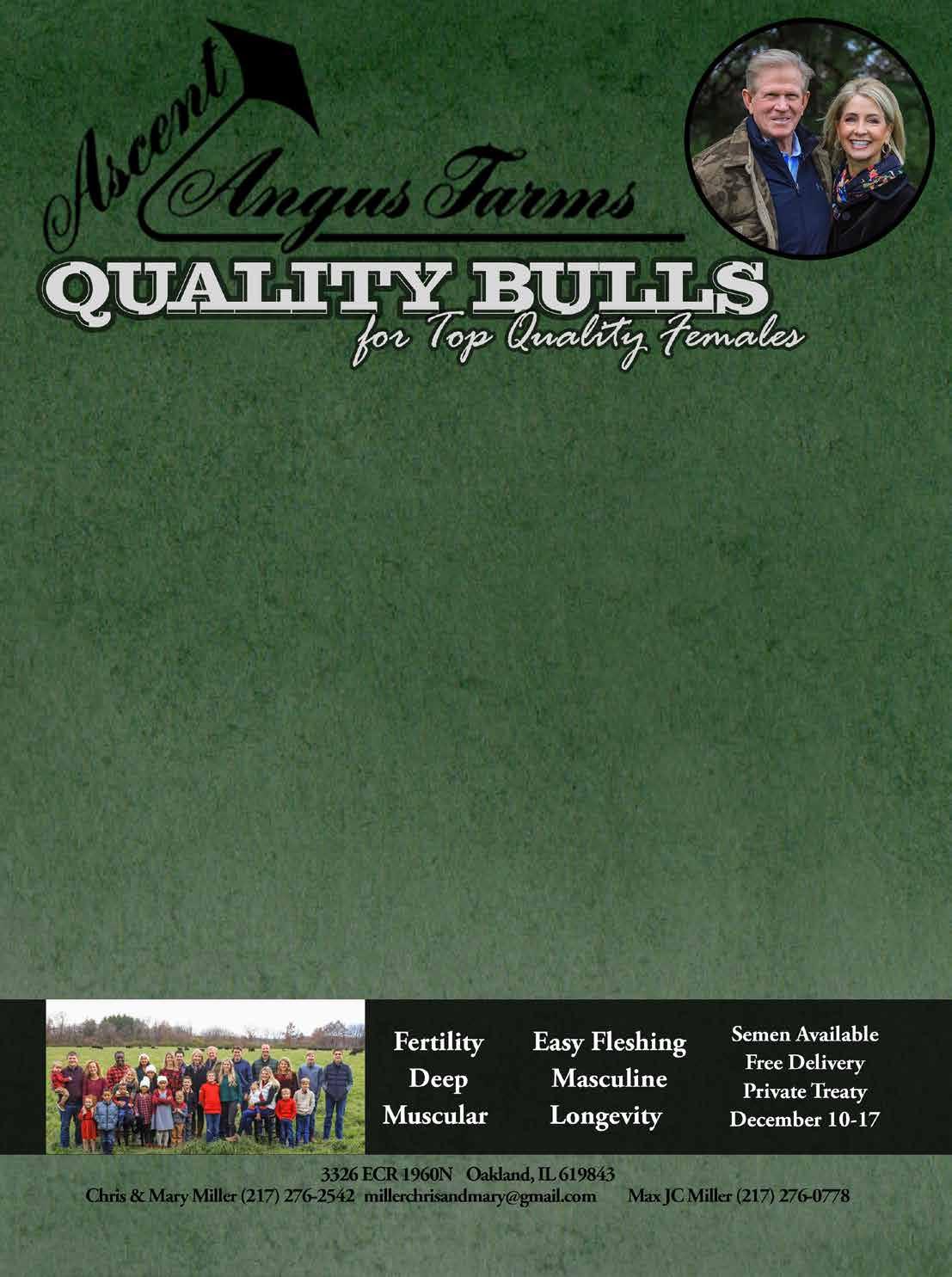
Paul Walker, Professor Emeritus, DI Walker Consulting
Recently some cattle industry opinion influencers have touted the rhetoric that carcass weights are getting too large. Before I go any further, I offer a history lesson and a fact. As the saying goes , “whatever happens in the cattle industry happens in the swine industry first”, i.e. changes in the cattle industry follow the same changes in the swine industry and change occurs faster within the swine industry than within the cattle industry. The latter makes sense as the generation interval is shorter in swine than cattle, swine have two + litters per year and swine have multiple piglets per litter compared to cattle that typically give birth to one offspring per year.
As background, I remember sitting in Swine Production class way back in 1970. The guest lecturer was a renown swine expert who told us the industry was getting market hogs too large, making the hams too large for the “modern” housewife. I ask ,how wrong was that opinion influencer? For this expert, 240-pound market hogs were too large. His reasoning was that “large” market hogs had bone-in hams that were too large for the housewife to use effectively. Fast forward to today. Market hogs’ weigh 280-300 lbs. Bonein hams are primarily sold on a limited basis around the holidays. The rest of the year hams are ground, processed, molded and sold as “can ham” in any size from 3 lbs. to 20 lbs.
Don Close, Senior Animal Protein Analyst for Terrain, wrote an excellent article published in the February 20, 2025, NCBA National Cattlemen on the subject of cattle market weight size. The title of his article was “Cattle are

to Get Bigger”. The accompanying table was taken from that article. From a broad perspective, cattle carcass weights have increased an average of 4 lbs. per year since 1960 in a fairly linear progression with some ups and downs. This increase in carcass weight has occurred despite changes in frame score, i.e. as frame size increased in the 1970’s and 1980’s and as frame size moderated in the 1990’s and early 2000’s. Today’s carcass weights of 825 lbs. – 960 lbs. do exceed the live weights of cattle marketed in the 1960’s and early 1970’s. And, when cattle frame size and market weight notably increased in the 1980’s , the industry experts warned that carcass weights were getting so big that the primal and retail cuts were not going to “fit the box”. Over the years the industry has had several national symposiums regarding cattle frame size, ideal market weight and appropriate carcass weight In the early 1980’s the ideal market steer supposedly weighed 1,295 lbs. In 2000 the ideal market weight was supposedly 1,340 lbs. The packing industry has blown by those figures.
Another argument against heavier carcass weights is that portion size is too large, and consumers are going to reject the product. Just like the “hams are too large philosophy of the early 1970’s”, the ribeye size is getting too large argument, also, holds little water. As example, a couple of years ago Margaret and I were eating at an upscale beef restaurant in Omaha, Nebraska. Margaret ordered a 4 oz ribeye, and I ordered a 12 oz ribeye. Margaret’s ribeye was shaped as
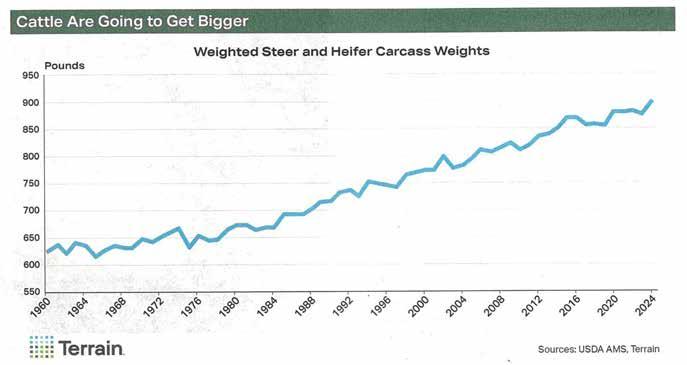
though it was cut from a 16 oz ribeye and my ribeye was either an actual 12 oz ribeye or was cut from the same 16 oz ribeye that yielded the 4 oz ribeye.
The point is, instead of arguing that carcasses are too heavy and that cattle weights are getting too big, it is time to start concentrating on how to manage heavier market weight cattle and what their carcasses produce. If cattle chutes are not wide enough for cattle to pass through, make them wider. If transport trailers cause bruises as cattle pass up and down the ramps, modify the trailers. If wholesale cuts are too large, make the retail cuts smaller. Packers will tell the industry when carcass weights are too large by discounting heavy weight cattle; just as packers are discounting select grade cattle in the marketplace now. A limiting factor preventing carcasses from getting heavier is the increase in yield grade 4 carcasses. However, many times, for high grading carcasses the discount for yield grade 4 is less than the discount for select carcasses which encourages heavier weight cattle, often resulting in higher grading carcass production. If packers increase the discount for yield grade 4 carcasses relative to any incentive for higher quality grades (prime), feeders will limit producing heavier weight market cattle. The market will determine how heavy carcass weights become.
Do not misinterpret what I am saying. I am not advocating for heavier carcass weights. I do believe carcasses are approaching weights too large to handle with current packing plant equipment, but the packer will determine if the industry can handle larger carcasses or not, going forward. The feeder will either be rewarded or discounted as carcasses get heavier. It will be interesting to watch – history says carcasses may continue to get heavier, especially if the numbers of market cattle do not increase.
Have a great day. Doc.





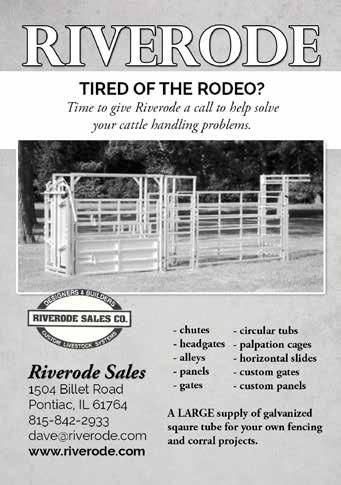
Teresa L Steckler, University of Illinois Extension
There are many challenges to profitable beef production and one of the most expensive is internal and/or external parasitism. External parasites or ectoparasites and parasiteborne diseases negatively affect cattle through reduced body weight, milk production, and ability to give birth to healthy calves. Certain diseases can also influence the marketing and trade (national or international) of animals and food products.
As a result, beef cattle producers lose billions of dollars in the value of their herds each year due to parasitism. Preventing and treating parasites is an important step in increasing the farmers’ ability to raise healthy beef cattle, make a profit and meet the world’s need for sustainable protein and other cattle products.
To control ectoparasites, one should understand the life cycles of ectoparasites because the life cycles are varied and control methods can also vary greatly.
There are many species of Diptera (two-winged insects, or true flies) that are ectoparasites. They bite to feed on blood (hematophagous) or cause nuisance to the animals during the adult stage, cause parasitic infection of fly larvae in tissues (myiasis), invade living soft tissue, or transmit pathogens to cattle as biological or mechanical vectors. The “true flies” undergo complete metamorphosis, but life-cycle characteristics (nutritional requirements, larval development sites) vary widely and can be used to reduce their populations.
Horn Flies (Haematobia irritans) are about half the size of house flies and dark gray. They are blood-sucking flies that stay on the shoulders and backs of cattle almost continuously but may seek shelter on the underside during extremely hot weather or when it rains.
When disturbed, horn flies will fly up in a swarm but return to the animals almost immediately. A horn fly leaves the back of a cow or calf only to lay eggs in fresh manure. Individual flies pierce the skin with their short, tube-like mouthparts 20 to 30 times per day to ingest a small amount of blood. Irritations from the bites annoy animals and occasionally, the wounds may become infected.
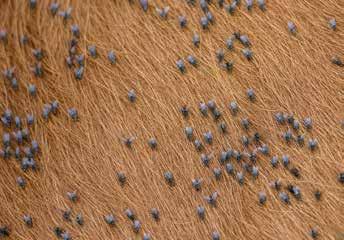
Studies have shown that horn flies have their greatest effect on growing animals. Weaning weights of calves with an average of 200 or more horn flies during the summer are about 15 pounds less than those that are protected from horn flies. The same type of impact has been seen on yearling cattle. In addition, horn flies can spread summer mastitis, which affects the mammary glands of nonlactating cows, and they have been implicated in the spread of anaplasmosis.

There are many effective options to keep horn fly numbers below the 100 fly per animal treatment threshold. Cost, convenience, and herd management practices, such as grazing rotation, can be considered when designing a control program that fits best. Several insecticide application options are available: insecticide impregnated ear tags, dust bags, concentrated pour-ons, animal sprays, and oral larvicides available in minerals and feed supplements. Ear tags and forced use dust bags have consistently give the best control but other methods can be effective, too. The choice can be made based on what works best with pasture layouts and herd management practices.
Face Flies (Musca autumnalis) closely resemble house flies. Face flies cluster on the faces of cattle and feed on secretions from the mucus membranes of the eyes, nose, and lips. Face flies do not suck blood. They do irritate the surface of the eyeball and play a role in the transmission of Moraxella bovis, the principal causal agent of bovine pinkeye or infectious bovine keratoconjunctivitis. This disease is a highly contagious inflammation of the cornea and conjunctiva of cattle.
Most of the time face flies are resting on plants, fence posts, or other objects which makes their control more difficult than horn flies. Much effort has been made using various insecticides and application techniques, such as dust bags, mist sprays, and wipe-on formulations. Also, insecticides and insect growth regulators are used as feed additives. However, results are usually less than satisfactory. The introduction

of insecticide-impregnated ear tags has provided somewhat better control, but generally, seasonal face fly reduction of only 70-80% has been achieved, even with 2 tags (1 in each ear) per animal.
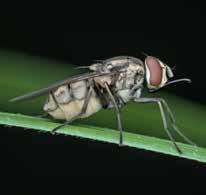
Stable flies (Stomoxys calcitrans) are sometimes called biting house flies. The stable fly looks like the housefly and horn fly, but it is considerably larger. Also, unlike the housefly and horn fly, the mouthparts of a stable fly resemble a bayonet that can be easily seen protruding from its head. The stable fly also resembles the deer fly and horse fly. However, stable flies primarily attack the legs of livestock; these other flies do not. Stable flies are pests of cattle because of their bloodsucking activities. The mouth parts penetrate the skin allowing them to engorge on blood two to three times a day depending on the weather. Once full they move to a resting place, usually in the shade, to digest the blood meal. In addition to the blood loss, they annoy animals and interfere with their normal feeding behavior. All this results in weight loss or reduced weight gain and increased susceptibility to certain diseases. Stable flies also transmit several diseases such as equine infectious anemia and anaplasmosis.
The stable fly has a complete life cycle that involves egg, larva, pupa and adult. Eggs are laid in manure, spilled feed, hay and decaying vegetation, and this is the medium in which larvae develop. The larvae feed exclusively on decaying vegetation. Stable flies often breed in hay dropped by cattle while feeding from large hay bales. This hay becomes an ideal medium when mixed with manure, urine and rain. Remember that stable flies require a moist manure-and-soil or organic matter and soil mixture 4 inches to a foot deep. To reduce fly populations these areas and all pens need to be cleaned completely every spring. Manure should either be spread on the land to dry out or be piled and covered with plastic tarps for later disposal.
Mosquitoes (various species) are probably the best known of the blood-sucking insects. While blood is a crucial resource for female mosquitoes for egg development, both male and female mosquitoes rely on sugar-rich sources, such as nectar, to meet their needs. Female mosquitos can transmit disease causing agents such as anaplasmosis, but requires two bites; one to acquire the agent from an infected host and a second to transmit the agent to an uninfected animal
Mosquito larvae develop in many aquatic environments including ditches, ponds, open containers, tree holes, and flood-irrigated pastures. Adults of various species are active throughout the day, although individual species may only be active for specific periods, such as dawn and dusk. Depending on the species, eggs may be deposited singly or in rafts in sites as diverse as soil, above the waterline of tree holes, or on the water. Eggs may undergo installment hatching or diapause, but once they hatch, the larvae must complete all four larval instars and the pupal stage in water.
Removing standing waters where mosquitoes could lay eggs, laravacides can be used to treat larger bodies of water

to prevent larvae buildup of local mosquito populations, and ectoparasiticides with repellent activity can be used to protect cattle from mosquito bites
Horse (genera Tabanus and Hybomitra) and deer (genus Chrysops) flies belong to the family of Tabanidae. Since eggs of horse and deer flies are deposited in vegetation of wetlands and the larvae spend nearly a year feeding in an aquatic or semiaquatic environment, control can be very difficult. The larvae move to drier areas for pupation, and the adults emerge as large insects (10 to 30 mm for horse flies and 6 to 10 mm for deer flies). Adults are most abundant in open areas along the edge of woods and only the females seek blood meals. The bite of Tabanidae flies is painful due to the action of their mouthparts. After the fly has completed the meal, the wound often continues to bleed, attracting face flies. Adult tabanids live only a few weeks. Reports of horse fly problems for an entire summer indicate a series of different species emerging at intervals through the season. Both groups prefer shaded pasture areas, but deer flies are often found deeper in the woods.
Most other fly control techniques have been attempted for tabanids, but, unfortunately, they are mostly ineffective. Some recommendations include remove cattle from marshy pastures and keep trees to a minimum and providing small buildings. Chemical controls need frequent application and often do not kill the female until after it has completed its blood meal. Horse fly traps have proven effective in killing several hundred to thousands of flies and reducing their numbers in subsequent years.
When making decisions about fly control it is important to realize that there are many effective programs. Producers should develop a program for their operations which is cost effective and most convenient.
Here are several tips to keep in mind for fly control and pesticide use: 1) Plan ahead for insecticide and ear tag purchases; fly season always comes, even if delayed by cool weather or rain; 2) Consult with your herd veterinarian regarding active ingredient(s) in products and their record of effectiveness in your area; 3) Always follow instructions, warnings, and precautions: these products can be toxic to you, your children, pets, and others working with them around the chute; and 4) Follow label withdrawal times and keep records of treatment dates, products and lot numbers
1References will be provided upon request.
Mark Eisele, 2025 NCBA PastPresident
It is with immense gratitude that I write this final column as NCBA president. Serving as your leader and representative — regionally, nationally and internationally — has been an honor and privilege I approached with the utmost respect for everything you do. Together, we have faced challenges, celebrated victories and worked to secure the future of our industry.
As I reflect on this past year, I am profoundly thankful for the volunteer leaders who devote countless hours away from home to advance our industry. Their commitment, alongside the steadfast support of you, as members, and the broader supply chain, makes everything we accomplish possible. I am equally humbled by the tireless work of NCBA’s staff. They consistently rise to meet the challenges we face, armed with knowledge, preparation and dedication. Their presence in crucial arenas ensures our voice is heard, even when we, as producers, cannot always be there.
I am also proud of how we use science, data and grassroots collaboration to educate and influence both those within and beyond our industry. This approach strengthens our collective efforts and ensures our message resonates far and wide.
One of the most inspiring aspects of my tenure has been witnessing the resilience, faith and community spirit of cattle producers. Across diverse landscapes you adapt, improvise and overcome. I have seen you face wildfires, floods, droughts, blizzards, tornadoes and personal tragedies with unyielding determination. Despite these challenges, you raise your families, care for your herds, and pass down values and knowledge to future generations.
Traveling to your farms, ranches and businesses has been a privilege. You welcomed me into your lives and shared stories that deeply inspired me. While I am often reminded of the difficulties you face, I am equally inspired to improve my own operation and to collaborate more closely with my family and neighbors. Our shared vision to confront challenges and move forward is the foundation of this industry.
As I’ve often said, “There is strength in numbers.”
When we unite, we are truly unstoppable. Though there are those who seek to divide us, I remain hopeful, knowing the next generation of leaders is ready to carry this organization forward.
Some of my most treasured experiences have come from connecting with producers recognized for their excellence, like the ESAP award winners. These individuals exemplify the values and dedication of our industry.

One event that left a lasting impression was participating in the Governor’s Steer Show and charity auction for the Ronald McDonald House at the Iowa State Fair. I was paired with a young man whose younger brother was severely injured in an ATV accident. His purpose in raising and auctioning the steer was to support the Ronald McDonald House, which had provided his family a home during his brother’s recovery. Witnessing his dedication and the generosity of the Moore family and the Iowa Cattlemen’s Association was truly humbling.
It has been exciting to see more young producers and families attending conventions and meetings. These emerging leaders are actively engaging in policy discussions and agency actions that affect their futures. Many have become influential advocates, sharing powerful stories and promoting the benefits of beef.
As a young producer, I faced hurdles I wasn’t sure I could overcome. Thanks to my state association and NCBA, I gained the tools and knowledge to navigate challenges and thrive. Networking with other producers and participating in NCBA activities has been invaluable, and I know many of you share this experience. Your involvement matters, and it underscores the grassroots nature of our organization.
NCBA has faced many challenges, from tax changes and water rights to environmental and animal rights extremists. We have also had some great wins! Some of our court cases, such as Waters of the U.S. and the Chevron deference decision set a good course for us to navigate these challenges. Hopefully, this change of administration will also give us the ability to decide our own future and not leave it in the hands of bureaucrats.
I have been honored to fight the good fight on taxes, water rights, environmental and animal extremists, government and NGO agendas that would bring an end to our industry and its independence.
From the bottom of my heart, thank you for the trust and support you’ve shown me. I will always be a proud member and advocate for NCBA and the incredible people it represents. This organization, built on the dedication and hard work of its members, remains a cornerstone of our industry’s success.


Powered by Neogen®, providing genomic solutions to seedstock and commercial producers around the globe.
Devin Bollman, Illinois Beef Association Membership and Communications Manager
We were busy kicking off the 2025 Illinois Beef Expo while simultaneously fighting the below freezing temperatures here in Springfield, Illinois. The excitement of what was occurring here on the state fair grounds was enough to keep us going and heated as we pushed through yet another fantastic Illinois Beef Expo.
I am shocked every year at how much we pack into four short days, including the three livestock sales, breed banquets, junior activities, tradeshow, contests and, of course, the three-day junior show — this year bringing in 615 entries.

The Illinois Performance Tested Bull Sale kicked off our expo with an outstanding bull sale. Travis Meteer of University of Illinois Beef Extension does an incredible job putting together a top quality set of bulls from a variety of seedstock producers across the state. The lot average reached a record high with a 40% increase at $7,096/head. I cannot begin to express how proud I am of this sale’s success and what this means for the future of Illinois’ seedstock industry.
Thursday evening we introduced a new feature to the event, a trade show reception highlighting the wide array of vendors and sponsors we host at our event. Parents dropped their kids off at the Kids Korner and walked around chatting with vendors and sponsors, shopping and enjoying a variety of beef hors d’oeuvres catered by Poe’s Catering. This was an exciting addition to our expo and we were thrilled to see such a great turn out.
Friday morning began the plethora of junior activities and events with the livestock judging contest hosted by Black Hawk East’s livestock judging team. This contest is widely attended by 4-H and FFA teams and is always a great success. The Illinois Skill-A-Thon team hosted a skill-a-thon in the afternoon, giving juniors yet another opportunity to hone in on their skills and education for the chance to win. Both events bring in such a huge crowd of young ag and beef enthusiasts.
The Illinois Junior Beef Association hosted it’s winter meeting where they announced the 2024 top ten points show exhibitors for the steer and heifer divisions, the 2025 Illinois Beef Foundation scholarship recipients, and new this year, announced the winners for the IJBA Photography Contest. We were so excited to add this contest to the junior opportunities and thrilled to have nearly 50 entries in this first year. The photography contest gives juniors the opportunity to showcase their talents and creativity from behind the lens, and man do these juniors have talent!
Beyond the junior events, Friday was host to the Illinois Multi Breed Female Sale where yet another set of top quality cattle were put together. Sale attendance was fantastic and the sales report reflects just that along with the quality of the females offered.
After the start of the market animal show in the showring, Friday evening wrapped up with the Illinois Simmental Association and Illinois Shorthorn Association annual banquets here on the fairgrounds. On Saturday evening, the Illinois Hereford Association hosted their annual banquet as well. Every year we are so excited these breed associations host their events in conjunction with the Illinois Beef Expo, which brings the entire seedstock industry here in Illinois together for one outstanding expo.
I cannot begin to express how grateful I am to be a part of an event like this and feel pride knowing what Illinois’ seedstock industry and juniors can accomplish. From contests showcasing the immense talent of our youth, and sales highlighting our elite cattle and genetic opportunities like that in the Collection Sale, to the high quality cattle being shown in the livestock center just above the coveted trade show - it’s truly something remarkable. Though I experience almost all of it from behind my camera lens, I absorb so much and get the opportunity to capture those moments of friendship in the barns, the thrill of raising that bid card, the comradery of vendors and trade show attendees and, of course, the generations of cattlemen and women taking pride in what they have to offer to our industry.
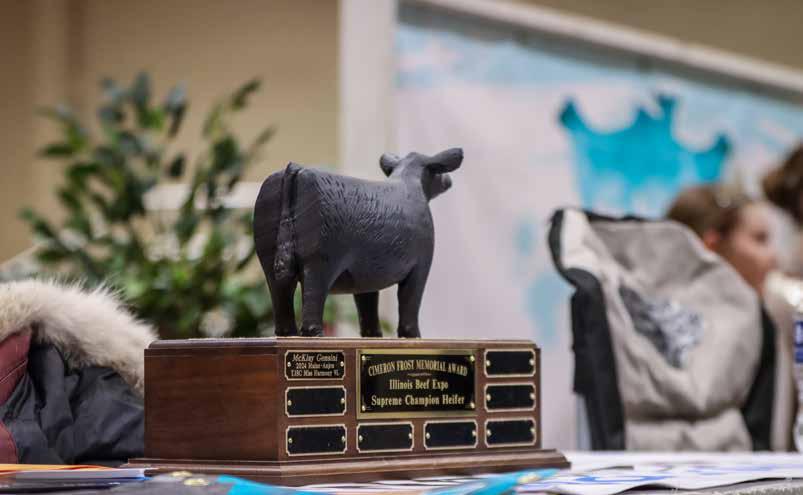



Meat & Processing
Livestock Transportation
Illinois Agriculture
Genetic Potential
Seedstock Operation
Cattle Feeding Operation
Auction Market
Animal Nutrition

• March 19: Monroe County Cattlemen Quarterly Meeting | Hank & Lilly’s Creekside | 6:30 p.m.
• March 22: Henry County Beef Association Banquet | Lavender Crest Winery | 5:00 p.m.
• March 22: Adams County Beef Bonanza | The Ambiance | 5:30 p.m.
Adams County Beef Producers recently had 4-500 people in attendance for their February meeting where IBA President, Dave Duzan, presented state legislative and Beef Checkoff updates to attendees.
Tri-County Cattlemen’s Association hosted their annual banquet on February 8 at The Barn in Biggsville. The night was complete with a social hour, dinner, auction for scholarships and beef promotion and dancing to the Stone Cold Cowboys. The evening’s Keynote Speaker was Shark Farmer. The evening raised over $13 thousand dollars of support from area business and beef community members.
Do you have Affiliate News? Submit information to Annie Schoetmer at annie@illinoisbeef.com or call 217-787-4280. Please notify Annie with changes to affiliate officer teams. We want to be involved in the promotion of your events, and enjoy sharing your stories to celebrate affiliate successes. Do not hesitate to reach out!






Online registration form & Payment options can be found on the Prairie Beef Association Facebook page.
IBA Points Show
Food Stand & Sullivan Supply Trailer available Plan to show off your trailer (bring generators and tents) Camper Spots available ($40)


Clay • Effingham • Fayette • Shelby
Out of all the affiliates that reach 75% renewed or recruited IBA members based on the 2024 membership roster, one will be drawn at random to win an allexpenses-paid trip to the Purina Animal Nutrition Center in Gray Summit, Missouri, for ten of their IBA producer members.
The winning affiliate will be allowed to select their event date from the list of Purina Research Farm event dates for their attendees.
Adams County Beef Producers
Bureau County Cattlemen’s Association
Carroll County Livestock Feeders
Central Illinois Livestock Association
Crossroads Beef Producers
DeKalb-Kane Cattlemen’s Association
Heartland Beef Alliance
Henry County Beef Association
Jo Daviess County Beef Association
Knox County Cattlemen’s Association
Marshall-Putnam-Stark Beef Association
McLean County Beef Association
Northeast Illinois Cattlemen’s Association
Shawnee Beef Association
Southern Illinois Beef Association
Southwest Cattlemen’s Association
Union County Cattlemen’s Association
Woodford County Beef Improvement Association
Purina has partnered with IBA to offer this unique opportunity to IBA’s producer members to see what Purina Animal Nutrition is all about by seeing their 1,200-acre working research farm in Gray Summit, Missouri! While at the farm, producers will learn about topics including cow/calf nutrition, emerging technologies, matching forage resources, and so much more!

For questions about the Top Recruiter Program or IBA Membership, please contact: Devin Bollman, IBA Communications & Membership Manager 217.787.4280 | devin@illinoisbeef.com
Illinois producers mourn loss of four cattlemen
Chuck Bloomberg
Charles “Chuck” G. Bloomberg, 81, of Springfield, passed away peacefully on Sunday, January 19, 2025, from complications of Parkinson’s disease, at home with his family. He was born in Moline on July 21, 1943, to John Arthur and Gunhild Ruth (Swanson) Bloomberg and grew up in rural Lynn Center. He was of the Lutheran faith.
After attending the University of Illinois and participating in the Alpha Gamma Rho fraternity, he embarked on a career in agriculture. Among his roles were Assistant Director of the Illinois Department of Agriculture, the first Executive Vice President of the Illinois Pork Producers, and head of the Illinois Beef Council. In later years, he loved his vocation as a cattle order buyer. He was proud of his Swedish heritage and was a staunch Illini fan.
Warren Hadley
Warren Edward Hadley passed away on Friday, February 14, 2025, at the age of 87.
After marrying his wife, Cathy, Warren returned to the family farm in 1963. With his father, and later his daughter and sonin-law, Warren farmed 540 acres and fed more than 2,000 cattle annually in Henry County. He spent a great deal of time developing and adopting modern ways of feeding and finishing beef cattle in the Midwest. He was a partner and vice president of Empire Equipment, NA, and a member of the Henry County Beef Association, Illinois Beef Association, Illinois Beef Council, National Livestock Feeders Association, and National Cattleman’s Association. Warren was civic-minded, serving as a Director of Geneseo Cooperative Gas and Oil, the State Bank of Osco, and the Hammond Henry Hospital Foundation. He deeply valued education, serving on the Black Hawk Community College Board, Geneseo Board of Education, and was a founding member of the Geneseo Endowment for Excellence in Education. He was a member of the First Presbyterian Church in Geneseo.
Jay Book
Jay Paul Book, age 68, of Sterling, Illinois, passed away peacefully at his farm on March 1, 2025. Jay was born in Sterling on February 22, 1957, to loving parents Gene and Lucille Book. After graduating from the University of Illinois with a Bachelor’s degree in Agriculture Science, Jay returned to Sterling to pursue his dream of building the family farm, Northland Farms. Jay was a dedicated grain and livestock producer and was a pioneer in advancing cattle genetics, being the first to build a complete herd of homozygous polled (genetically horn-free) Simmental cattle. He was recognized for his contributions to breeding and raising Simmental cattle and hosted nine successful Herdbuilder Simmental Production Sales. Jay was a member of the Illinois Beef Association and was also involved with the National Cattlemen’s Beef Association and the American Simmental Association. Throughout his career, he sold cattle across the United States and internationally, from Saskatchewan, Canada, in the north to Colombia, South America, in the south. His commitment to his work and his community was reflected in his leadership roles, including serving as a leader of the Illinois Beef Board, Chairman of the School Board, and the Boy Scouts Troop 72 Committee.
On September 5, 1981, Jay married Cheri Neahring of Sterling, beginning a lifelong journey together. He was a devoted and loving husband to Cheri and a wonderful father to his two children, Adam and Nichole. He cherished the time spent with his four grandchildren, Bethany, Elijah, Josiah, and Noah. Jay saw the value of spending quality time with each family member, both immediate and extended. His favorite activities centered on faith and family. Each morning, he started with coffee and prayer with his wife, Cheri. Jay embraced the simple joys of taking in rural sunsets, husking sweet corn, and checking cattle in the pastures with his loyal yellow Labrador Retriever by his side. Over the years, he had four Labs, each a steadfast companion in their time, with his last and beloved, Ethan, always at his side. Jay’s unwavering faith in God was present in every aspect of his life. He was a man of prayer and trusted God through daily joys and trials. He encouraged others in their faith and lived as an example of continuously seeking and glorifying God.
Danny Stephens
Daniel “Danny” Stephens, 80, of Sharpsburg passed away on Wednesday, February 19, 2025, at 10:17 a.m. at St. John’s Hospital in Springfield. He was born on April 26, 1944, in Taylorville, IL, the son of Howard and Clair Stephens. Danny attended schools in Taylorville and graduated from Taylorville High School with the Class of 1962. He was a farmer who raised crops and cattle. He also sold and serviced trailers through his trailer business. He was a people-person who enjoyed being a vendor at the Beef Expo, the Illinois State Fair, and the Half Century of Progress Show. He was very devoted to his family and loved watching his grandchildren and great-grandchildren grow. He loved spending time in Colorado and watching sports and old westerns on TV. He had served on the Christian County Fair Board and the Edinburg School Board. He was a scorekeeper for Edinburg basketball games for many years and also was a Taylorville FFA Alumni.
The National Cattlemen’s Beef Association (NCBA) welcomed the withdrawal of the U.S. Department of Agriculture’s (USDA) proposed rule entitled “Fair and Competitive Livestock and Poultry Markets,” announced today by Agriculture Secretary Tom Vilsack. This harmful regulation would have dismantled current cattle marketing agreements, reversed decades of innovation in the cattle industry, and threatened producer profitability.
“Under the ‘Bidenomics’ agenda, USDA pushed regulations like this one which would have undermined the free market, harmed hardworking cattle producers, and far exceeded the agency’s authority granted by Congress,” said NCBA Executive Director of Government Affairs Tanner Beymer. “We are pleased that USDA recognized their failed approach and withdrew this rule. NCBA will continue advocating for sound market principles and we look forward to working with the next Administration on enhancing profitability opportunities for America’s cattle farmers and ranchers.”
There were 86.7 million head of cattle and calves on U.S. farms as of Jan. 1, 2025, according to the Cattle report published today by the U.S. Department of Agriculture’s National Agricultural Statistics Service.
Other key findings in the report were:
• Of the 86.7 million head inventory, all cows and heifers that have calved totaled 37.2 million.
• There are 27.9 million beef cows in the United States as of Jan. 1, 2025, down 1% from last year.
• The number of milk cows in the United States increased slightly to 9.35 million.
• U.S. calf crop was estimated at 33.5 million head, down slightly from previous year.
• All cattle on feed were at 14.3 million head, down 1% from 2024.
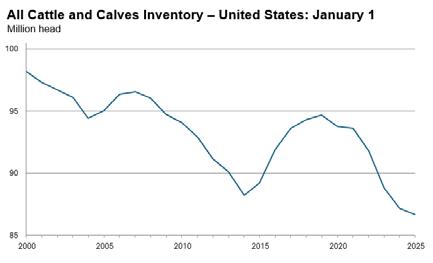
To obtain an accurate measurement of the current state of the U.S. cattle industry, NASS surveyed approximately 36,100 operators across the nation during the first half of January. Surveyed producers were asked to report their cattle inventories as of Jan. 1, 2025, and calf crop for the entire year of 2024 by internet, mail, telephone, or in-person interview.
The Cattle report and all other NASS reports are available online at nass.usda.gov/Publications.
The National Cattlemen’s Beef Association (NCBA) strongly supports the Death Tax Repeal Act, led by Reps. Randy Feenstra (IA) and Sanford Bishop (GA). The Senate companion bill is led by Majority Leader John Thune (SD). Repealing the federal estate tax, also known as the Death Tax, is a top priority this year for NCBA.
“The Death Tax isn’t pro-growth – it’s a death warrant for family businesses. It’s the top threat to the future of family farms and ranches, and U.S. cattle producers need relief from this insidious tax,” said NCBA President and Nebraska cattleman Buck Wehrbein. “Family-owned farms and ranches operate on limited cash flow, with most of their value tied up in land. As farmland and pastureland values rise, more producers will be hit with this punitive tax, forcing them to sell assets or take on debt, sometimes paying the Death Tax multiple times. In a recent NCBA tax survey, 33% of respondents had paid the tax, and 35% of them had paid it more than once. This is not a tax on the rich, it is a boot on the neck of family businesses. NCBA thanks Senate Majority Leader Thune and Reps. Feenstra and Bishop for leading the charge to repeal the Death Tax once and for all.”
Current Death Tax relief is set to expire at the end of 2025, and it is vital that Congress acts soon to provide permanent relief for our family operations. If the federal estate tax exemption reverts to pre-2017 limits, coupled with the rapid inflation of farmland values, many more families will be subject to the Death Tax.
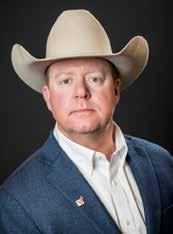
I am truly honored to step into the role of chairman and want to express my gratitude to my fellow officers for their leadership and dedication to the Beef Checkoff. As we look ahead to the coming year, I want to focus on one central theme: unity.
The Beef Checkoff operates at many levels—state, local, federation, and national. While each sector has its own role, we all share the same goal: promoting and defending the beef industry. Now more than ever, we must pull in the same direction, working together to strengthen producer confidence and ensure the Checkoff continues delivering value.
It’s easy to get caught up in internal disagreements, but we can’t afford to lose sight of the bigger picture. The real threats to our industry are not coming from within but from outside forces that want to dismantle not just the Checkoff, but the entire beef industry. We should not waste time and energy working against each other when we have so much work to do
promoting beef, defending our livelihood, and educating consumers.
I want to challenge all of us—state partners, national leaders, and Checkoff stakeholders—to come together with a renewed commitment to collaboration. We have incredible programs and initiatives in place that drive beef demand, support producers, and build trust with consumers. When we work as one, we amplify our impact.
This year, let’s focus on what unites us. Let’s prioritize communication, transparency, and teamwork. Let’s remind ourselves why we are here: to ensure a strong and vibrant future for the beef industry. The Checkoff is a tool to move us forward, but its success depends on us working together.
I’m excited for the year ahead and look forward to what we can accomplish together.
- Ryan Moorhouse, CBB Chair
Annual
Downtown Nashville, Tennessee, will host CattleCon 2026, Feb. 3-5, 2026. The largest cattle industry event of the year will be held in the heart of Music City, home of honky-tonks, history and hearty food. Thousands of cattlemen and women will gather to learn, conduct business, network and enjoy the sights, sounds and flavors in the “songwriting capital of the world.”
“Nashville has always been a popular location for CattleCon, and we are excited to bring everyone downtown to be close to everything the city has to offer,” said Kristin Torres, executive director of meetings and events at the National Cattlemen’s Beef Association. “We are planning several special events including an exclusive evening at the historic Ryman Auditorium.”
CattleCon 2026 will feature popular events such as Cattlemen’s College, CattleFax Outlook Session, D.C. Issues Update, Cattle Feeders Hall of Fame Banquet, Environmental Stewardship Regional Awards, and Beef Quality Assurance Awards, along with a few surprises to be announced.
The award-winning NCBA Trade Show will include acres of displays as well as live cattle handling demonstrations, educational sessions and entertainment. Trade show exhibitors will feature the latest advancements, from equipment and technology to pharmaceuticals and feed supplements, all conveniently located under one roof.
Registration will open in August, and additional information will be available at convention.ncba.org.
During CattleCon 2025 in San Antonio, dates and locations were announced for 2025 Stockmanship & Stewardship events. Event registration will open late spring.
2025 Stockmanship & Stewardship dates and locations:
· June 26-28, Watertown, South Dakota
· Aug. 13-14, Canyon, Texas
· Sept. 4-6, Springfield, Missouri
Stockmanship & Stewardship is a unique educational experience for cattle producers featuring low-stress cattle handling demonstrations, Beef Quality Assurance (BQA) educational sessions, facility design sessions and industry updates. Producers can become BQA certified, network with fellow cattlemen and women, participate in hands-on demonstrations led by animal handling experts including Curt Pate and Dr. Ron Gill, and learn innovative techniques.
Topics including biosecurity and Secure Beef Supply will be discussed, and the Texas program will be feedyard focused and available in Spanish. The program is sponsored by the National Cattlemen’s Beef Association (NCBA), Neogen, and the Beef Checkoff-funded Beef Quality Assurance program.
“Neogen is dedicated to the advancement of human and animal well-being through science and technology,” said Elizabeth Wonsowski, livestock director of marketing at Neogen. “As a leader within the beef industry and proud partner of cattle ranchers and beef production, we recognize the important role that education and resources play in helping the cattle industry continue to grow in a healthy and sustainable way. We are proud to support NCBA and the Beef Checkoff through the Stockmanship & Stewardship program. Together, we can fuel a brighter future of global food security.”
For more information about Stockmanship & Stewardship, visit www.StockmanshipAndStewardship.org. Cattle producers attending a Stockmanship & Stewardship event are eligible for reimbursement through the Rancher Resilience Grant. To apply for a grant to cover registration and hotel costs, visit www.ncba.org/producers/rancher-resilience-grant.
Links to third-party websites should not be considered an endorsement by the Beef Checkoff of the actual website or the company or organization that owns/manages that website.
Nebraska cattle producer and National Cattlemen’s Beef Association (NCBA) President Buck Wehrbein testified before the U.S. Senate Committee on Agriculture, Nutrition, and Forestry to share an update on policy priorities for the American cattle industry.
“The cattle industry is seeing better market conditions, strong consumer demand for beef, and optimism for the future of our industry yet challenges still remain,” said Wehrbein. “Congress must always remember that food security is national security and the policy decisions they make will impact the hardworking cattlemen and women who produce our nation’s food. Passing a Farm Bill, axing the Death Tax, protecting beef in the Dietary Guidelines, rolling back excessive regulations, holding our trade partners accountable, combating the New World screwworm, and protecting the Beef Checkoff are all tangible steps Congress can take to support American farmers and ranchers and protect our food security.”
In his testimony, Wehrbein urged Congress to pass a Farm Bill that supports animal health, voluntary conservation, and risk management tools. He also explained the importance of the Beef Checkoff program, which strengthens beef demand, educates consumers, and funds critical research. The Beef Checkoff has faced renewed attacks from radical animal rights activists and Wehrbein urged Congress to stand with real farmers and ranchers instead of activists.
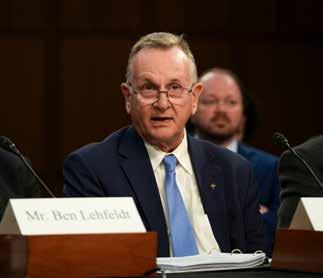
Additionally, Wehrbein asked Congress to protect the cattle industry from the new threat of New World screwworm by investing in sterile fly production facilities that will help eradicate the screwworm. The U.S. has been free of New World screwworms for over 60 years, but the pest is currently in Mexico and could move north. Wehrbein also addressed the importance of passing legislation to lower taxes and eliminate the Death Tax, protecting beef in the Dietary Guidelines for Americans, supporting public lands ranching, and reducing overregulation on American cattle producers.
The Illinois Beef Checkoff program sponsored the 2025 Illinois Association FFA State Meats CDE on March 1 at the University of Illinois Urbana-Champaign. The purpose of this CDE is for students to develope skills needed for careers in the meat animal industry. FFA members evaluated beef carcasses for quality and yield grade, identified various meat cuts, placed carcasses and identified wholesale and retail cuts.
Newton FFA took home first place with 1737 points, and also from Newton the individual who scored highest was Nick Bierman.

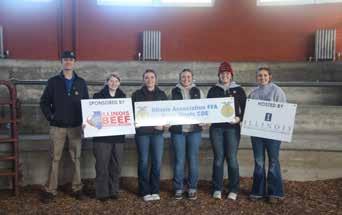
20 25 20 25 20 25





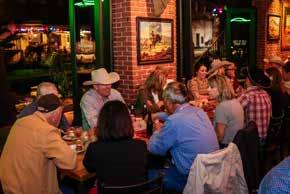
February 2025 brought IBA staff and Illinois cattle folks down to San Antonio where we all pulled on our “business” boots and grabbed our notepads for a grand time of fellowship, growth in knowledge of current issues and even a bit of Texas-sized fun.




Beginning the night before day 1 of the event, Region III (that’s us) had their annual CattleCon meeting lead by Charles Bersher. A warm welcome from the now presidentelect Gene Copenhagen was given where he touted increased profitability for producers. Various states in the region gave updates on their staff happenings, including IBA EVP Josh St. Peters, who shared the encouraging stat that Illinois currently has five IBA members serving as elected officials in the state. Another thing to note from the meeting was the nomination and election of Purina’s own Amy Redunes to serve as the next President of Region III.
trade were discussed by Executive Director of International Trade and Market Access, Kent Baucus. He says the new Trump administration is focused on trade deficits and that “tariffs are the tool of choice for this administration” when it comes to international relations.
Executive Director or Government Affairs, Tanner Beymer, was the last team member to be questioned. He shared the encouragement that there is motivation to get a new Farm Bill by the end of the year and that most new appointees at the United States Department of Agriculture are there for the “right” reasons.







The evening ended on the Riverwalk at County Line BBQ where IBA hosted all Region III associations and councils for a night of fellowship and chatting about successes.
The following morning was kicked off bright and early with the annual D.C. Issues Update where each member of the NCBA D.C. office staff detailed the issues at the fore-front of their mind when it comes to all things cattle politics in our nation’s capital.
In the meeting, NCBA Executive Director of Government Affairs, Allison Rivera, talked about labor and border security, transportation and the Farm Bill — which you can learn more about if you flip forward just a few pages.
NCBA Chief Veterinarian, Kathy Simmons, was prepared to share what is on the forefront of her mind in the current political season, including animal disease, and the incoming issue of New World Screwworm. Imports are effected by this threat but Mexico is prepared to do what they can to eradicate the issue with sterile flies, as was done once before.
NCBA Senior Director of Government Affairs, Sigrid Johannes, is honed in on health-specific topics like the new Secretary of Health and Human Services, Robert F. Kennedy Jr., dietary guidelines, animal rights and lab grown meats.
The Corporate Transparency Act, tax reform and, especially,
Later that day were committee meetings evaluating and discussing current policy, and the Opening General Session began at 3 p.m., where Lieutenant Colonel Dan “Noonan” Rooney delivered an inspirational message about purpose. “You never have to be more than you are, but you must always be all that you are,” says Rooney. He encourages folks to answer three questions when searching for their purpose: What do you love? What are you good at? If both are the same thing, how can you use it to make a difference?

The following morning began with General Session II − Building a Resilient Future for Ag with Shannon Ferrell, who encouraged producers to be ready at all times for the next generation to take over the operation. Some ways to do that include beneficiary designations, health care planning, building a trust, and life insurance, to name a few.
Following this session
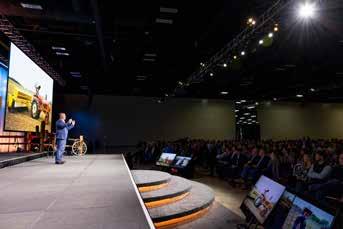
was the Checkoff Highlights Session where various Checkoff-funded projects were detailed by those like the U.S. Cattlemen’s Association, Cattlemen’s Beef Board, US Meat Export Federation and the American Farm Bureau. It is safe to say, your Checkoff dollars are being used in such a variety of ways, it would blow your mind.
That afternoon was busy like it always is with IBA board members and staff scattered across the convention center attending various NCBA Policy Committee meetings and Checkoff Committee Meetings. Notable was IBA Checkoff Division Chair, Jamie Martz, who attended the Checkoff Nutrition and Health Committee meeting where past IBA President, Dr. Paul Walker, was also present as a member of the committee where he serves as a member of the Cattlemen’s Beef Board.
This was Martz’s first time attending CattleCon. She says she has already had the opportunity to reconnect with some of the folks she met. “The industry is going in the right direction,” she says. “There are a lot of people passionate about the industry and good people in the right positions right now who are leading.” She expressed that it was easy for

her to sit in the conversations she did after having previous experience with Checkoff programs Illinois does, such as involvement with Illinois Farm Families. “I feel like I brought home ideas too,” Martz says.

Beef Board member, Dr. Paul
Day two ended with “Big TX Fest” at The Espee where CattleCon attendees enjoyed various BBQ dishes, deserts, drinks and games. IBA Board Members and Staff connected to join in on the fun.

The final day of NCBA convention is always bitter sweet. Though attendees are looking forward to a Friday “siesta,” there is yet a little more business to finish up.
The final General Session, the CattleFax 2025 U.S. & Global Protein & Grain Outlook Seminar, is a favorite among attendees every year.
Meteorologist, Matt Makens, says there will be cool pockets in May-July throughout “corn country” with a dry mid-summer.

He also make producers aware that since 1998, it seems we will continue to have droughts more frequently.
Next to the stage was CattleFax Vice President of Industry Relations, Kevin Good, who says we are still in a liquidation phase in the industry, with a harvest of 1 million less cows in 2024. Good says beef and heifer replacements continue to be historically low, though there are signs this is starting to slow. Heads up though, beef continue to hold the majority of market share compared with the other popular proteins of pork and poultry.
CattleFax Chief Operating Officer, Mike Murphy, says demand is the key, as long as we still have a mission to produce high-quality, sustainable, cattle we will keep that demand.
To finish out the seminar, CattleFax Executive Vice President and Chief Executive Officer, Randy Blach, reminded producers of the historic profitability in the industry right now, and the quality of beef is ever increasing. Last year, beef demand was the second strongest year in 37 years, Blach says. “The only place we get new dollars is through the consumer,” he expresses.
After this final general session wrapped up, other meetings were carried on throughout the afternoon, most notably the NCBA Board of Directors meeting where Illinois was once again well-represented (see photo).
One last festivity is always on CattleCon attendee’s minds, and that’s the final-night event. This year, it was “Cowboy’s Night at the San Antonio Stock Show and Rodeo. Beginning in a “round-up” area, Illinois Cattlemen enjoyed drinks and food and then made their way to the arena. After a full rodeo, country music singer, Scotty McCreery played his hits like “Five More Minutes” and “This Is It.”

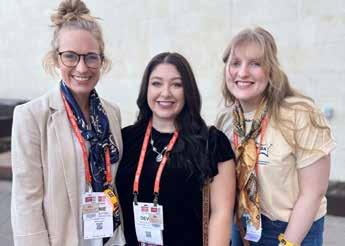








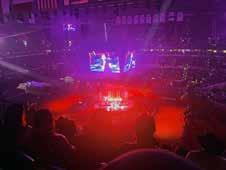
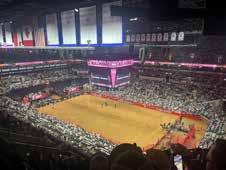
The National Cattlemen’s Beef Association’s Executive Committee approved the organization’s policy priorities at CattleCon 2025. This year the focus will be on engaging with the Trump Administration and Congress to expand opportunities for producer profitability.
“NCBA will continue advocating for passage of a longterm Farm Bill and pushing to extend the critical tax provisions in the 2017 Tax Cuts and Jobs Act, that expire at the end of the year. We will also be continuing to fight for more flexibility for grazing and voluntary conservation work that is vital to preventing catastrophic wildfires that have been raging across the country,” said NCBA President-Elect and Nebraska cattleman Buck Wehrbein. “Over the past few years producers have been increasingly squeezed by onerous regulatory burdens, including unscientific Endangered Species Act listings and the rapidly changing enforcement of the Corporate Transparency Act. This government overreach has prevented meaningful conservation efforts, leaving America’s treasured natural resources in worse condition and has left cattle producers in a position of great uncertainty, with soaring legal and accounting bills. NCBA is laser-
focused on advancing federal policies that will help improve the general business climate and give producers more opportunities moving forward to increase the profitability of their operations.”
Some of NCBA’s 2025 Policy Priorities include:
• Work to retain core wins in the 2024 House Agriculture Committee-passed Farm Bill.
• Preserve family farms and ranches for future generations by advocating for essential tax relief for cattle producers.
• Fight for meaningful long-term relief from the burdensome reporting requirements of the Corporate Transparency Act.
• Enhance wildfire prevention utilizing targeted grazing, controlled burns, and forest management practices to protect grazing lands.
• Keep working lands working by protecting family farms from undue regulatory burdens under the Endangered Species Act, National Environmental Policy Act, and many other key regulations.


NCBA’s policy focus for 2025 is to engage with the Trump Administration and Congress to expand opportunities for producer profitability.
NCBA’s policy focus for 2025 is to engage with the Trump Administration and Congress to expand opportunities for producer profitability.
■ Remove harmful regulations instituted during the Biden Administration that harm cattle producers.
■ Remove harmful regulations instituted during the Biden Administration that harm cattle producers.
■ Roll back climate policies that create unnecessary regulatory burdens.
■ Roll back climate policies that create unnecessary regulatory burdens.
■ Fight to keep beef on the plate and pursue Dietary Guidelines and federal nutrition policies that reflect the excellent nutritional value of our product.
■ Fight to keep beef on the plate and pursue Dietary Guidelines and federal nutrition policies that reflect the excellent nutritional value of our product.
■ Ensure that all labeling requirements for fake meat products are transparent, accurate, and fair.
■ Ensure that all labeling requirements for fake meat products are transparent, accurate, and fair.
■ Protect the U.S. cattle herd from the incursion of foreign animal diseases and support heightened preparedness actions.
■ Protect the U.S. cattle herd from the incursion of foreign animal diseases and support heightened preparedness actions.
■ Ensure access to the use of antimicrobial drugs that will allow veterinarians to prevent, control and treat diseases in cattle.
■ Ensure access to the use of antimicrobial drugs that will allow veterinarians to prevent, control and treat diseases in cattle.
■ Push for further hours-of-service flexibility and continue delaying ELD requirements for livestock haulers.
■ Push for further hours-of-service flexibility and continue delaying ELD requirements for livestock haulers.
■ Fight for meaningful long-term relief from the burdensome reporting requirements of the Corporate Transparency Act.
■ Fight for meaningful long-term relief from the burdensome reporting requirements of the Corporate Transparency Act.
■ Work with USDA to implement the reformed “Product of USA” label to promote voluntary, verified, tradecompliant labeling that returns greater value to producers.
■ Work with USDA to implement the reformed “Product of USA” label to promote voluntary, verified, tradecompliant labeling that returns greater value to producers.
■ Expand market access for U.S. beef exports and ensure equivalent animal health and food safety standards for imported beef.
■ Expand market access for U.S. beef exports and ensure equivalent animal health and food safety standards for imported beef.
■ Keep working lands working by protecting family farms from undue regulatory burdens under the ESA, NEPA, CWA, CAA, and other regulations.
■ Keep working lands working by protecting family farms from undue regulatory burdens under the ESA, NEPA, CWA, CAA, and other regulations.
■ Streamline the federal permitting process and increase flexibility to adapt to local conditions.
■ Streamline the federal permitting process and increase flexibility to adapt to local conditions.
■ Safeguard the U.S. cattle and beef supply chain by working with the administration to ensure a strong workforce that meets consumer demand.
■ Work to retain core wins in the 2024 House Agriculture Committee-passed Farm Bill.
■ Safeguard the U.S. cattle and beef supply chain by working with the administration to ensure a strong workforce that meets consumer demand.
■ Work to retain core wins in the 2024 House Agriculture Committee-passed Farm Bill.
■ Preserve family farms and ranches for future generations by advocating for essential tax relief for cattle producers.
■ Preserve family farms and ranches for future generations by advocating for essential tax relief for cattle producers.
■ Enhance wildfire prevention utilizing targeted grazing, controlled burns, and forest management practices to protect grazing lands.
■ Enhance wildfire prevention utilizing targeted grazing, controlled burns, and forest management practices to protect grazing lands.
■ Secure resources to support cow-calf producers as industry works to implement current disease traceability requirements.
■ Secure resources to support cow-calf producers as industry works to implement current disease traceability requirements.
■ Protect producer access to voluntary conservation tools to support their long history of science-based resource stewardship.
■ Protect producer access to voluntary conservation tools to support their long history of science-based resource stewardship.
■ Support effective predator control measures and compensation programs for livestock depredations and ensure depredation standards work with ranchers utilizing federal lands and not against them.
■ Support effective predator control measures and compensation programs for livestock depredations and ensure depredation standards work with ranchers utilizing federal lands and not against them.
NATIONAL CATTLEMEN’S BEEF ASSOCIATION 1275 Pennsylvania Avenue NW, Suite 801 Washington, D.C. 20004 202.347.0228 | @BeefUSA
The popular CattleFax Outlook Seminar, held as part of CattleCon 2025 in San Antonio, Texas, shared expert market and weather analysis today.
The U.S. beef industry is poised for another year of strong market performance, driven by tight cattle supplies and robust consumer demand. As the beef cowherd enters a stabilization phase following years of contraction, the resulting supply constraints have shifted market leverage decisively in favor of cattle producers.
Weather conditions will remain a critical factor influencing grazing availability, herd expansion and cattle prices. Meteorologist Matt Makens said La Niña this winter brings rather volatile weather changes across North America with the majority of weather extremes affecting those in the Central to Eastern U.S. For Mexico and the Southwestern U.S., producers will see drought acreage increase as it has nationwide since June.
“Drought will likely increase across the Western U.S. this spring and into the Pacific Northwest, Northern Plains, and Canadian Prairies through this summer. To watch will be the North American monsoon and how much drought relief it can provide to Mexico, the Southwest, and parts of the Plains,” he said. “Current data show the monsoon is likely to produce more moisture this year than last. A strong enough monsoon can decrease precipitation across the central Corn Belt, watch July closely. Late in the year, the focus turns to the development of La Niña or El Niño.”
Shifting the discussion to an outlook on the economy, energy and feed grains, Troy Bockelmann, CattleFax director of protein and grain analysis, noted that inflation eased in 2024, ending the year at 2.9%, a significant drop from the 9% peak in 2022 but still above the Federal Reserve’s 2% target. To address this, the Fed cut interest rates three times in the latter half of the year, bringing the Prime bank loan rate to 7.5%.
The labor market remained strong, with unemployment briefly rising midyear before falling to 4.1% as job creation outpaced expectations. Combined with solid consumer spending and wage growth, the U.S. economy is expected to see healthy GDP growth of 2 to 2.5% in 2025.
“The Federal Reserve’s rate cuts helped stabilize inflation and support economic growth, but we’re still above target,” Bockelmann said. “Despite economic headwinds, consumer confidence and spending have remained resilient. However, lingering inflation and potential trade uncertainties may limit the extent of further interest rate cuts this year and inflation remains a key factor to watch in 2025.”
CattleFax shared that National Dec. 1 on-farm hay stocks were up 6.3% from a year-ago at 81.5 million tons with hay
prices averaging $175/ton in 2024. Corn stocks-to-use at just over 10% and should support the spot market towards $5.00/bu. with a yearly average spot future price of $4.40/bu. expected.
“An increase in corn supply for the new crop year is expected as smaller beginning stocks are offset by larger production levels due to corn regaining acres from soybeans. Stocks-to-use have the potential to be above 13 percent which implies a price range of $3.75 to $5.15/bu. for the 2025 market year,” Bockelmann said. “There is a strong correlation between corn stocks-to-use and hay, and we expect hay prices to follow corn and trend a bit higher in the coming year.
On the energy front, he noted, for 2025, not much will change. Average crude oil prices are expected to be near steady with 2024 though risk remains for a reduced U.S. market share of global product due to potential trade policy impacts. He also expects ethanol production to continue to stay strong.
Kevin Good, vice president of market analysis at CattleFax, reported that U.S. beef cow herd is expected to see the cycle low to start 2025 at 28 million head, 150,000 head below last year and 3.5 million head from the 2019 cycle highs.
“We expect cow and bull slaughter to continue declining in 2025, with overall numbers down by about 300,000 head to 5.9 million head total. Feeder cattle and calf supplies outside of feedyards will also shrink by roughly 150,000 head, while cattle on feed inventories are starting the year slightly below 2024 levels at 11.9 million head,” he said. “With a tighter feeder cattle supply, placement pace will be more constrained, leading to a projected 700,000-head drop in commercial fed slaughter to 24.9 million. After modest growth in 2024, beef production is expected to decline by about 600 million pounds to 26.3 billion in 2025, ultimately reducing net beef supply per person by 0.8 pounds.”
Beef prices continued their upward trend in 2024, averaging $8.01/lb., the second-highest demand level in history. While demand may ease slightly in 2025, retail prices are still expected to rise to an average of $8.25/lb. Wholesale prices will follow suit, with the cutout price projected to reach $320/cwt.
“Retail and wholesale margins are historically thin, making strong consumer demand essential to maintaining higher price levels,” said Good. “While opportunities for further leverage gains are limited, the market remains favorable for producers.”
Inflation remained moderate in 2024, but high consumer debt, elevated interest rates, and competition from more affordable protein options could impact purchasing
decisions. However, foodservice demand showed resilience, ending the year stronger as same-store sales and customer traffic improved.
“Despite economic pressures, consumers continue to pay premiums for higher-quality beef,” Good added. “Choice grade or better remains in high demand, reinforcing the strength of the premium beef market.”
Turning to global protein demand, Good noted that the outlook for animal proteins remains strong, although U.S. beef exports are projected to decline by 5% in 2025 due to reduced production and higher prices. Conversely, U.S. beef imports are expected to grow as lean beef supplies tighten.
“The global outlook is currently an interesting scenario as trade policy developments, including potential tariffs, could pose risks to international markets. While growth is expected this year, it may be limited to global competition supply constraints and an uncertain tariff environment,” Good said.
Mike Murphy, CattleFax chief operating officer, forecasted the average 2025 fed steer price at $198/cwt., up $12/cwt. from 2024. All cattle classes are expected to trade higher, and prices are expected to continue to trend upward. The 800-lb. steer price is expected to average $270/cwt., and the 550-lb. steer price is expected to average $340/cwt. Utility cows are expected to average $140-/cwt., with bred cows at an average of $3,200/cwt.
“While the cyclical upswing in cattle prices is expected to persist, the industry must prepare for market volatility and potential risks. Producers are encouraged to adopt risk
management strategies and closely monitor developments in trade policy, drought conditions, and consumer demand,” Murphy said.
2025 USDA All-Fresh Retail Beef prices are expected to average $8.25/pound and, which will continue the balancing act for retail between high prices and reduced supply. Murphy noted that the key is to avoid setting prices too high, especially in light of competition from more affordable proteins.
Randy Blach, CattleFax chief executive officer, concluded the session with an overall positive outlook, and noted that strong margins in the cow-calf sector have set the stage for cowherd expansion to begin, with heifer retention likely back near a more normal pace, relative to minimal retention in recent years. Drought and pasture conditions are now the key factors influencing the rate of expansion with a slower herd rebuild anticipated compared to the last cycle. This more measured expansion pace implies a positive outlook for producer returns over the next several years. Strong consumer demand also remains a bright spot for the industry.
“We have to remember where we came from,” Blach said. “Continued improvements in quality and meeting consumer expectations with a safe, nutritious product and a consistently good eating experience have had tremendous impacts on moving the needle for this industry. We’re moving in the right direction, and we need to keep paying attention to that signal.”

By Olivia Hoots
While I have never darkened the door of a casino, I know the term roulette is used for a situation where you are placing all your bets on something hoping that maybe THIS time a situation will work out in your favor. Although you may never find yourself placing bets on the end game of government policies, the “endless” 2018 Farm Bill is beginning to feel more like a game of chance where the current bill keeps winning when a new one is meant to take its place.
The end of 2024 saw the 2018 Farm Bill expire, again, and extended until Congress can pass a new one by September 30. With the Trump Administration doubling down on many issues quickly, there is hope Congress will be encouraged to get a new farm bill to the oval office this year.
In 2022, at the NCBA Summer Business Meeting in Reno, Nevada, cattle producers determined what the new farm bill, which was set to be established in 2023, should include and be lobbied on behalf of beef producers.
The priorities determined are as follows –
• Strengthening risk management programs that provide producers with added protection against weather events and price decline.1
• Supporting disaster recovery programs that help producers return to normal operations following adverse weather, attacks by predators, or extreme conditions like drought and wildfire.1
• Promoting voluntary conservation programs that recognize the value of producers’ nationwide conservation activities, and support implementation of these practices free from government mandates.1
• Protecting animal health through programs that guard against the spread of foreign animal diseases. This includes support for programs like the National Animal Vaccine and Veterinary Countermeasures Bank (NAVVCB), which currently houses the Footand-Mouth Disease vaccine for U.S. producers. NCBA previously advocated for this vaccine bank and livestock producers recognize the danger that a foreign animal disease poses to the industry and the protection this bank provides.1
• Blocking a stand-alone livestock title. A livestock title would open the door to unnecessary overregulation and harmful government mandates and could cause difficulty getting the Farm Bill reauthorized.1
In May of 2024 when the House Agriculture Committee reported a Farm Bill favorably with a 33-21 vote –H.R.8467, or the Farm, Food, and National Security Act of 2024. It was introduced to the House by Republican Representative Glenn Thompson. “Cattle producers
are thankful that the House Agriculture Committee has advanced a Farm Bill that delivers on the needs of rural America,” said then NCBA, Mark Eisele.
In December, the Congressional Research Service (CRS) published the following in regards to the filed bill –
“On November 8, the Congressional Budget Office (CBO) published a score of H.R. 8467 based on the June 2024 CBO baseline. The score indicated the bill would increase mandatory spending that is subject to budget enforcement by $28.1 billion over 10 years (FY2025FY2034). It would provide a net increase for farm commodity support programs of about $37.0 billion over 10 years; a net increase of $4.5 billion for conservation programs including incorporating funding from P.L. 117-169 (referred to as the Inflation Reduction Act); a net decrease of $27.1 billion for the domestic nutrition programs by limiting future increases to the Thrifty Food Plan (TFP) that is used to determine Supplemental Nutrition Assistance Program (SNAP) benefit levels; and an increase of $13.6 billion for other titles.”2
According to the CRS’s research report R48167, this bill would “reauthorize most existing programs through FY2029, with modifications to specific programs and funding levels,” although there would also be some modifications. 2
Unfortunately, this bill died with the previous Congress,

along with NCBA’s top industry priorities that were included in the bill, forcing another 2018 Farm Bill extension.
Even so, NCBA leaders and staff and cattle producers across the country seem keen to continue encouraging Congress to pass a Farm Bill in 2025, especially 2025 NCBA president, Buck Wehrbein. “Congress must always remember that food security is national security and the policy decisions they make will impact the hardworking cattlemen and women who produce our nation’s food. Passing a Farm Bill, axing the Death Tax, protecting beef in the Dietary Guidelines, rolling back excessive regulations, holding our trade partners accountable, combating the New World screwworm, and protecting the Beef Checkoff are all tangible steps Congress can take to support American farmers and ranchers and protect our food security,” he said when testifying to congress in late February 2025. 3
So will we see a farm bill in 2025? NCBA is hopeful of it. At the 2025 CattleCon held in early February in San Antonio, NCBA Executive Director of Government Affairs, Allison Rivera, said they are focusing on NCBA’s priorities, including animal disease preparedness and the vaccine bank.
Also at CattleCon, NCBA Executive Director or Government Affairs, Tanner Beymer, was also hopeful. According to him, Thompson is still enthusiastic about getting a farm bill to U.S. farmers by the end of 2025.
What’s your guess? Are we making an outside bet?
Sources:
1. Farm bill. National Cattlemen’s Beef Association. (n.d.). https://www.ncba.org/policy/farm-bill
2. Congressional Research Service. (2024, December 16). The 2024 farm bill: H.R. 8467 compared with current law. Congressional Research Service. https:// crsreports.congress.gov/product/pdf/R/R48167
3. Perspectives From the Field: Farmer and Rancher Views on the Agricultural Economy, Part 2. (2025).
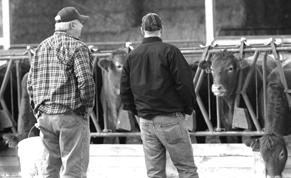
In our small towns and fields, it’s not just about the livestock— it’s about the people. At UPI, we’ve built a place where neighbors come together, stories are shared, and hard work is rewarded.
We’re here to make livestock marketing simple, fair, and personal—because that’s how business is done in agriculture.
Learn more about UPI Edge at uproducers.com/livestock-marketing
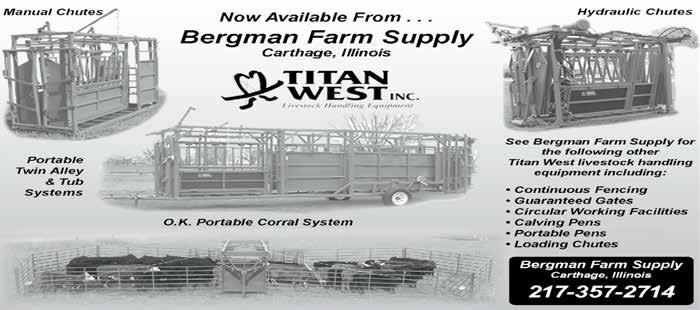
ILLINOIS STATE FAIRGROUNDS
FEBRUARY 20-23


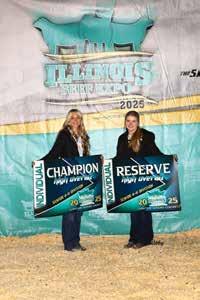



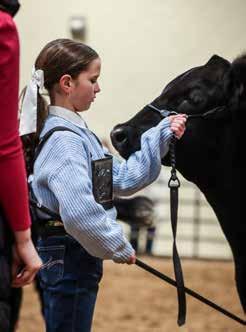







Strong tradition leads to strong results at the Illinois Performance Tested Bull Sale at the Illinois State Fairgrounds. The sale held during the Illinois Beef Expo averaged $7,096 on 33 lots, reaching an all-time record-high average for the sale.
“This sale continues to be one of the best sources for total performance genetics in the Midwest,” says Travis Meteer, IPT sale manager, commercial agriculture educator, and beef cattle specialist at University of Illinois Extension. “During the past 57 years, the sale has sold 5,030 bulls valued at over $10 million.”
The IPT Bull Sale is a multi-breed sale offering both older age-advantaged bulls and yearlings. Meteer said the high-selling bull was a yearling Angus bull, selling for $13,000. The bull, Kramer Farms Goalkeeper 2348, was sold by Keith and Brady






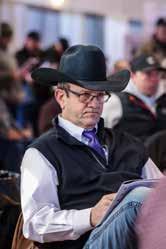
Kramer, Farina, Illinois, to Crosby Farms, Roachdale, Indiana. The high-selling senior Simmental bull consigned by Haven Hill Simmentals, Milan, Illinois, was sold for $11,000 to Kevin Hildebrand, Ohio, Illinois. The high-selling senior Angus bull, consigned by Joe Curtin Cattle Company, Stonington, Illinois, sold for $9,000. The high-selling yearling Simmental bull, consigned by Rincker Simmentals, Shelbyville, Illinois, sold for $10,500. The high-selling Polled Hereford bull, consigned by Lowderman Cattle Company, sold for $6,500.
Sale sponsors include University of Illinois Extension, the Department of Animal Sciences at University of Illinois Urbana-Champaign, and consigning breeders. Industry support included Axiota, Vita-Ferm, ABS, Zoetis, Dearwester Grain, FerAppease, Illinois Angus Association, and Illinois Simmental Association.
Producers interested in viewing a breakdown of all the prices can visit the IPT Bull Sale website at IPTBullSale.com. The site also includes individual bull prices from the 2025 sale and the numbers and averages from previous sale years.
Seedstock breeders interested in consigning to the 2026 IPT Bull Sale should contact Travis Meteer at 217-430-7030 or wmeteer2@illinois.edu to request a copy of the rules and regulations and nomination form. Nominations need to be made by Nov. 15.
For more information, visit Illinois Extension’s beef cattle site at go.illinois.edu/BeefCattle and featured articles from The Cattle Connection blog.
SOURCE/WRITER: Travis Meteer, commercial agriculture educator and beef cattle specialist, Illinois Extension
EDITOR: Jenna Braasch, media communications coordinator, Illinois Extension
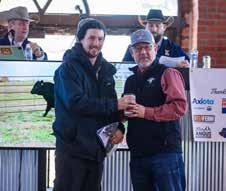

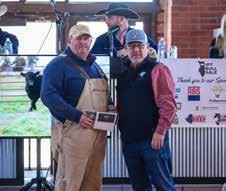

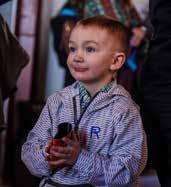
Forty-one head were consigned to this Friday, February 21 sale which took place at 11:00. The sale averaged $4,575/ head with a highest-selling lot of a $12,500 % Simmental consigned by Bramlet Simmentals of Harrisburg.
One-hundred and forty-seven lots were consigned to this Saturday sale. Embryos averaged $1,335 and semen averaged $1,305. The highest selling lot, going for $27,000, was an IVF cycle consigned by Bremer Show Cattle and Lucky Strike Show Cattle.
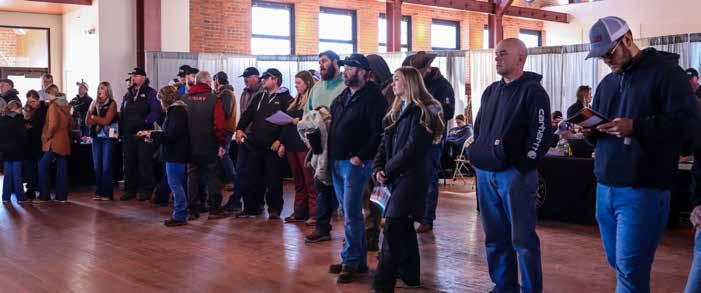

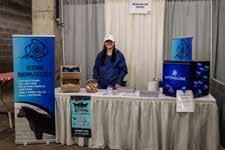
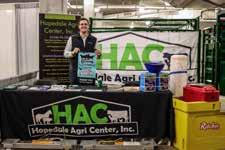
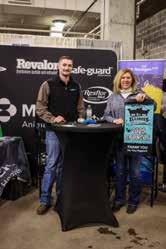



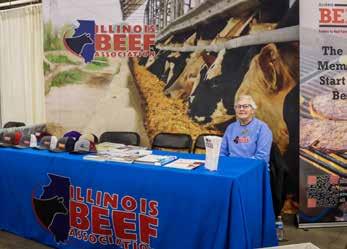
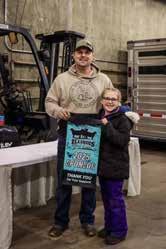

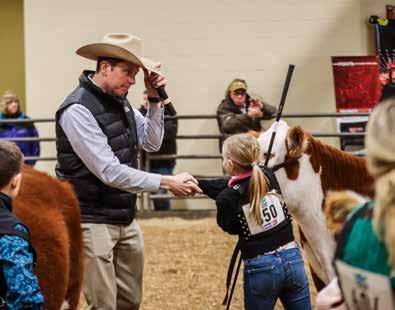

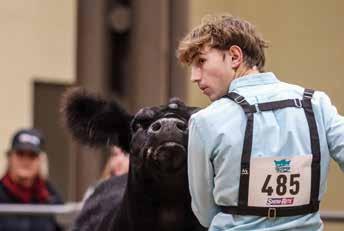
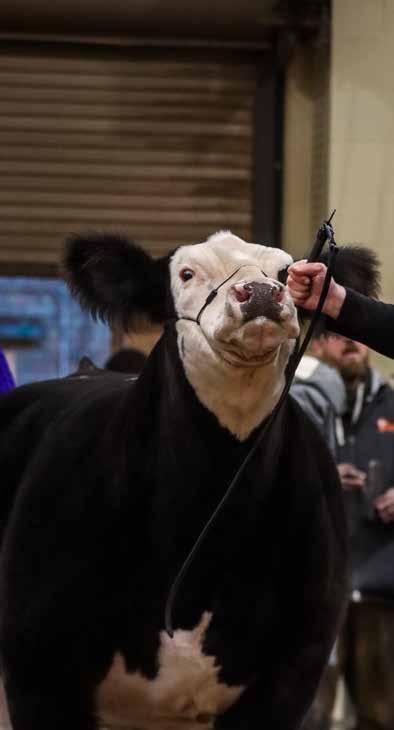
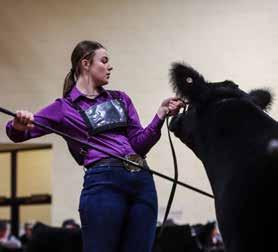

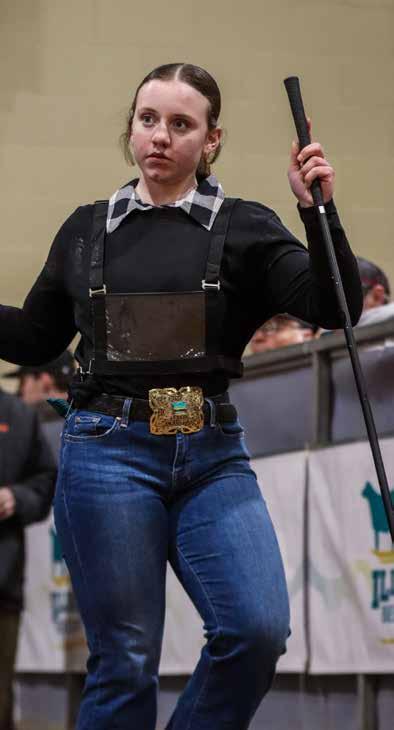
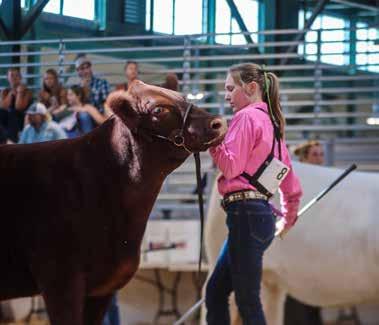


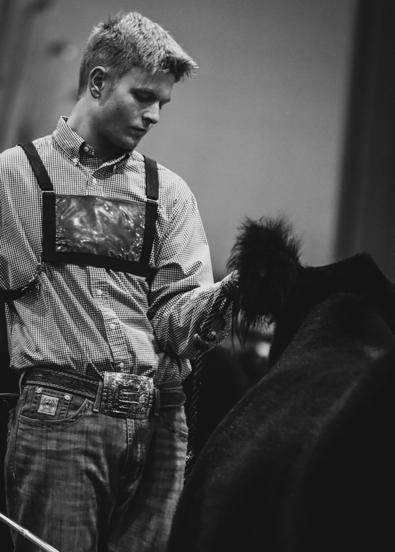
2025 ILLINOIS BEEF EXPO MARKET ANIMAL SHOW - RING A
Springfield | February 21-22 | Tyler Norvell, Oklahoma
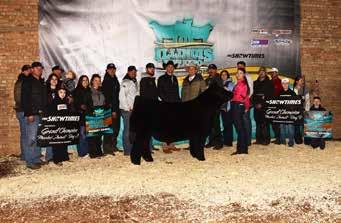
Grand Champion Market Animal
Champion Crossbred

3rd Overall Market Animal
Champion Chianina


Reserve Grand Champion Market Animal
Reserve Champion Crossbred
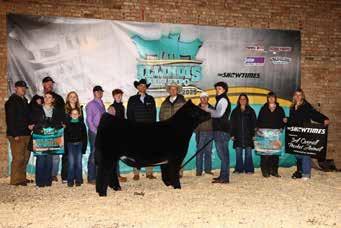
4th Overall Market Animal
Champion AOB
5th Overall Market Animal
Champion Maine


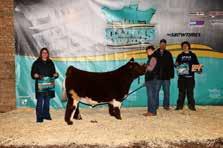
Champion Shorthorn
Shown by Casen Huls
Reserve Champion: Kesler Collins
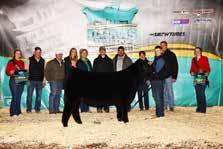
Champion Angus
Shown by Connor Suits
Reserve Champion: Colton Kies
Reserve Champion Chianina: Hadli Gabel
Reserve Champion Maine: McKlay Gensini
Reserve Champion AOB: Charli O’Donnell
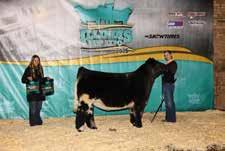
Champion Shorthorn Plus
Shown by Ainsley Link
Reserve Champion: Waylon Paulek

Champion Market Heifers
Shown by McKlay Gensini
Reserve Champion: Avery Seys

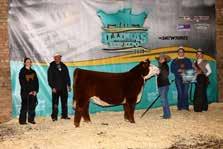
Champion Hereford
Shown by Brynlee Hodel
Reserve Champion: Makenzie Huls
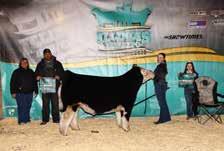
Champion Simmental
Shown by Maci Brooks
Reserve Champion: Brynlee Hodel

2025 ILLINOIS BEEF EXPO MARKET ANIMAL SHOW - RING B
Springfield | February 21-22 | Brady Jensen, Kansas

Grand Champion Market Animal
Champion Crossbred Steer

3rd Overall Market Animal
Champion AOB
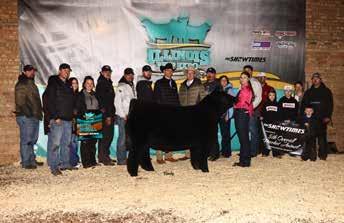

Reserve Grand Champion Market Animal
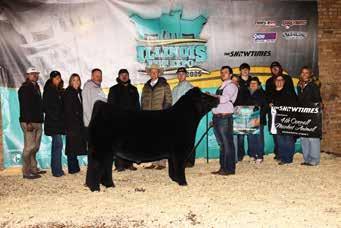
4th Overall Market Animal
Champion Maine
5th Overall Market Animal
Reserve Champion Maine Steer



Champion Shorthorn
Shown by Kesler Collins
Reserve Champion: Casen Huls

Champion Angus
Shown by Braxton Williams
Reserve Champion: Connor Suits
Reserve Champion Chianina: Myah Little

Champion Shorthorn Plus
Shown by Waylon Paulek
Reserve Champion: Ainsley Link
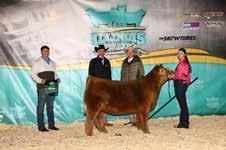
Champion Market Heifer
Shown by McKlay Gensini
Reserve Champion: Avery Seys
Reserve Champion Crossbred: Cole Caldwell
Reserve Champion AOB: Charli O’Donnell
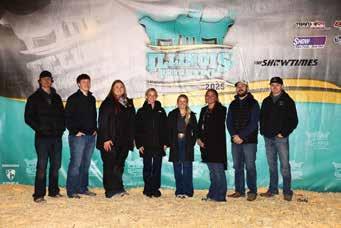
The Illinois Junior Beef Association helped throughout the event, as well as hosted a successful junior meeting.

Champion Hereford
Shown by Makenzie Huls
Reserve Champion: Kylie Gillespie

Champion Simmental
Shown by Maci Brooks
Reserve Champion: Brynlee Hodel
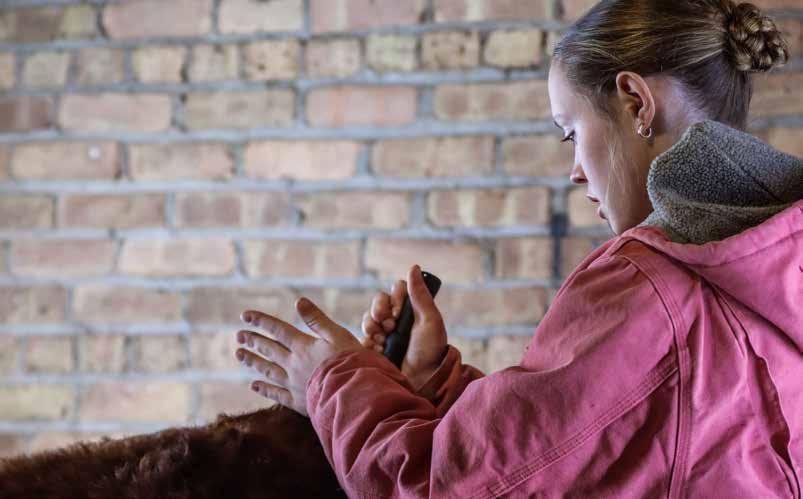
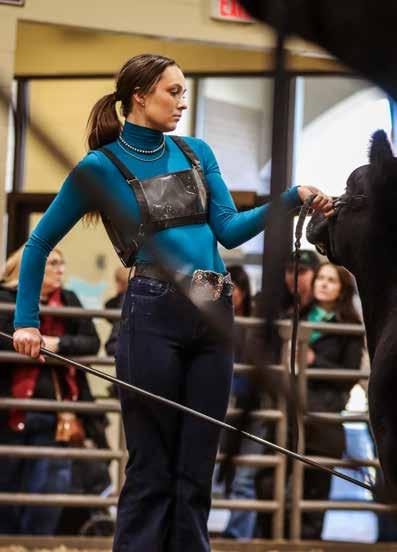

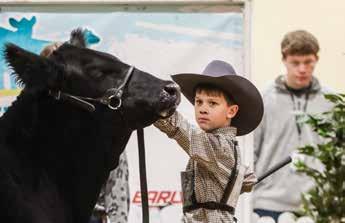

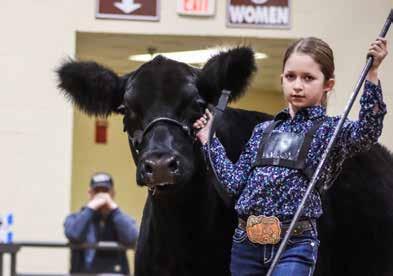





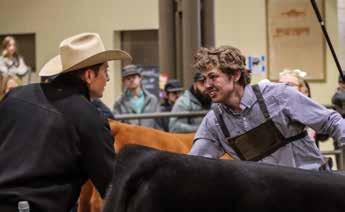
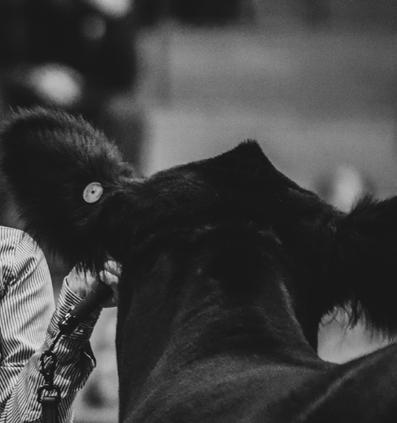



2025 ILLINOIS BEEF EXPO HEIFER SHOW - RING A
Springfield | February 22-23 | Brady Jensen, Kansas

Grand Champion Heifer
Champion Limousin/Lim-Flex
Shown by Keegan Bohnsack
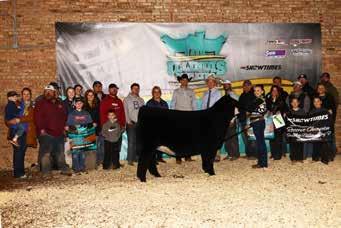
3rd Overall Heifer
Champion % Simmental
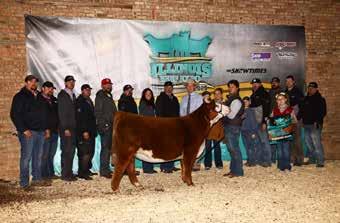

Reserve Grand Champion Heifer
Champion Commercial Heifer

4th Overall Heifer
Champion Chianina
5th Overall Heifer
Champion Horned Hereford



Champion Polled Hereford
Shown by Macy Michelini
Reserve Champion: Faith Benedict

Champion Red Angus
Shown by Macy Bartlow (Lauren Wolter)
Reserve Champion: Koby Kearns
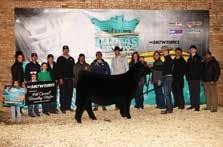
Champion Maine Anjou
Shown by Carter Hoge
Reserve Champion: McKlay Gensini
Champion Simmental: Avery Seys
Reserve Champion Simmental: Ellie Drach

Champion Angus
Shown by Breckyn Bloomberg
Reserve Champion: Macie Bartlow

Champion Shorthorn
Shown by Regan Head Reserve Champion: Alexa Turner
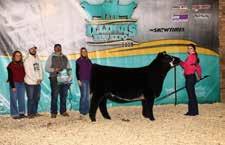
Champion Maintainer
Shown by Ella Eathington
Reserve Champion: Weston Lampe
Reserve Champion Horned Hereford: Abagayle Britton
Reserve Champion Chianina: Jemma Dorsey
Reserve Champion Limousin/Lim-Flex: Brody Barnard
Reserve Champion % Simmental: Harper Gabel
Reserve Champion Commercial: Reese Thoreson

Champion Charolais
Shown by Jackie Schertz
Reserve Champion: Avery Knupp

Champion Shorthorn Plus
Shown by Stetson Reedy
Reserve Champion: Ellen Klein
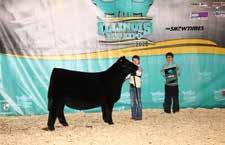
Champion AOB
Shown by Nash Lowderman
Reserve Champion: Riley Rhodes
2025 ILLINOIS BEEF EXPO HEIFER SHOW - RING B SPRINGFIELD | FEBRUARY 22-23 | TYLER NORVELL, OKLAHOMA
PHOTOS BY CINDY’S LIVESTOCK PHOTOS

Grand Champion Heifer Champion Limousin/Lim-Flex
Shown by Keegan Bohnsack

Reserve Grand Champion Heifer Champion % Simmental
Shown by Breckyn Bloomberg
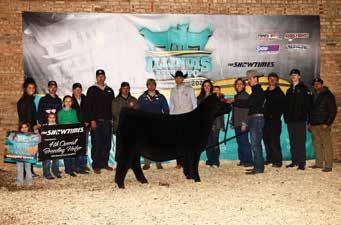
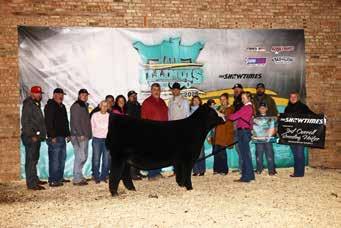
3rd Overall Heifer





Champion Horned Hereford
Shown by Ty Pezanoski
Reserve Champion: Abagayle Britton
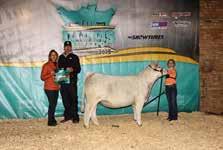
Champion Charolais
Shown by Nora Hoge
Reserve Champion: Jackie Schertz
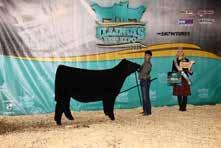
Champion Shorthorn Plus
Shown by Brayden Goodbred
Reserve Champion: Ellen Klein

Champion AOB
Shown by Nash Lowderman
Reserve Champion: Riley Rhodes

Champion Polled Hereford
Shown by Nolan Lee
Reserve Champion: Brenna Bartlow
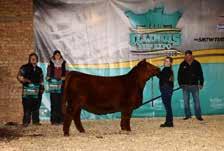
Champion Red Angus
Shown by Macy Bartlow (Lauren Wolter)
Reserve Champion: Koby Kearns

Champion Maintainer
Shown by Chace Riley
Reserve Champion: Koby Kearns
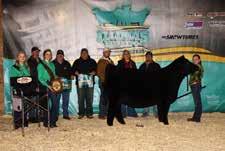
Champion Angus
Shown by Breckyn Bloomberg
Reserve Champion: Macie Bartlow

Champion Shorthorn
Shown by Maddox Reedy
Reserve Champion: Josie Turner

Champion Commercial
Shown by Jenna Setchel
Reserve Champion: Weston Lampe
Reserve Champion Chianina: Grace Lemenager
Reserve Champion Limousin/Lim-Flex: Brody Barnard
Reserve Champion Simmental: Avery Seys
Reserve Champion % Simmental: Addison Bartlow
Reserve Champion Maine: McKlay Gensini

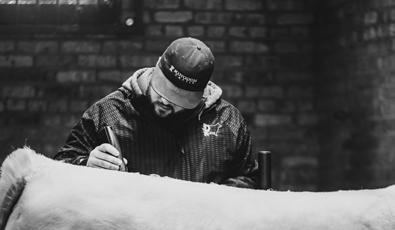
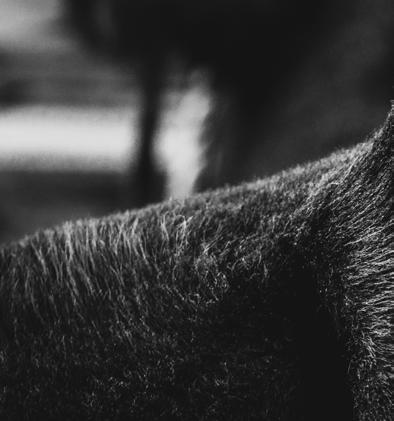
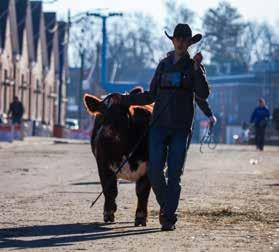
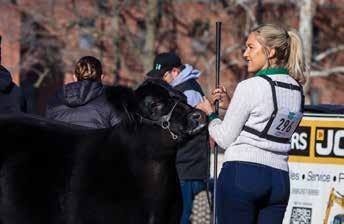



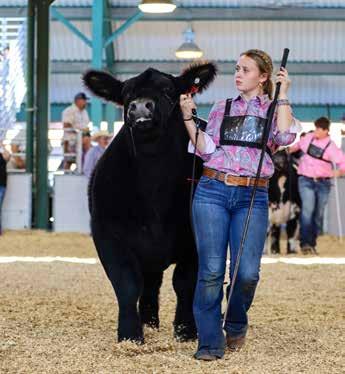


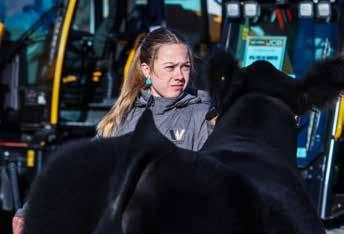
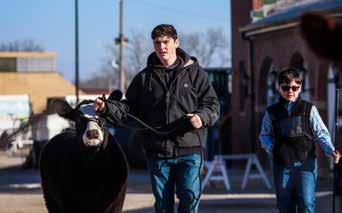
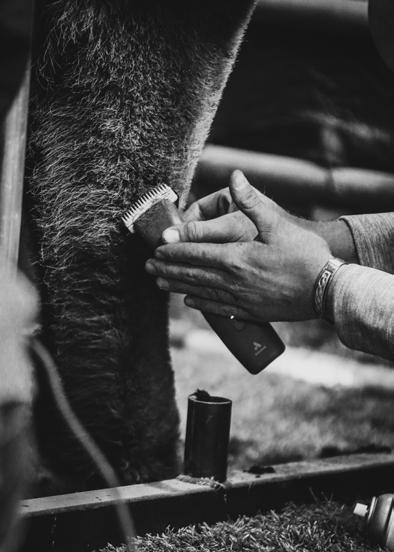
Illinois Beef Expo brought 4-H and FFA juniors from across Illinois to the Illinois State Fairgrounds to test their animal evaluation skills in the Livestock Judging Contest on February 21. More than 400 individual exhibitors competed this year and the contest was coordinated by Black Hawk College East-Campus Livestock Judging Team.

4-H High Junior Individuals
Chuck Thurman, Lucas Loschen, Breckyn Bloomberg, Alexis Main, Carson Beckman, Ryder Conrady, Maci Beckman, Levi Paulek, Addison Young, Wesley Sampson

4-H High Senior Individuals
Paisley Schick, AJ Wilkins, Thomas Vandeventer, Jay Peterson, Kendall Boatman, Addysen Link, Cash Meyer, Bayli Brown, Alex Barnard






FFA High Individuals
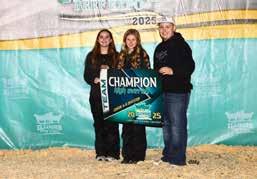
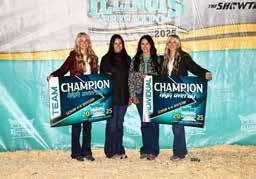
Top 4-H Junior Team - Knox
Alexis Main, Rowan Main, Chuck Thurman, Mya Tolley
Top 4-H Senior Team - DeWitt/ Piatt
Conley Schick, Emily Atten, Mabrey Schick, Paisley Schick


Nick Bierman, Peyton Wiegand, Luke Short, Lily DeAth, Ryker Beckmier, Brody Barnard, Ava Tate, Ashley Wiegand, Reed Tharp, Bayla Crouch

Top FFA Team -
Taylorville FFA
Ryker Beckmier, Kade Beckmier, Deacon Shanks, Luke Short
This year’s skill-a-thon contest, held on February 21, gathered youth from across Illinois to test their beef cattle knowledge.
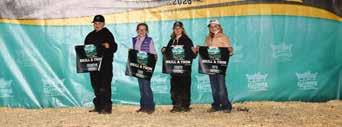

First place in the junior division was Brock Freed, followed by Maci Beckman, Scarlett Schleich, Clara Chappell, Blaklee Schwarze, Abraham Morrow, Jade Range, Cailyn Martin, Judson Shanks and Maylen Kramper.
The intermediate division top ten included Preston Howell in first, followed by Claire Kuipers, Chuck Thurman, Kalen Setterdahl, Macie Bartlow, Cash Meyer, Abby Wamsley, Isabelle Morrow, Reagan Shike and Breckyn Bloomberg.
Highest points in the senior division were awarded to Molly McCalla, followed by Ben Namsley, Callie Turner, Macie Bartlow, Preston Howell, Luke Short, Clay Wadlow, Olivia Mizeur, Alexa Turner and Ella Douglas.


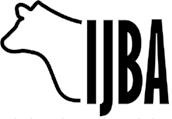
Junior showmen were recognized as the 2024 Illinois Beef Association Points Show Program winners at the 2025 Illinois Beef Expo in February. The IBA Points Show Program awards youth for success in the show ring at sanctioned cattle shows throughout the state. Jemma Dorsey of Moro was named the 2024 Overall IBA Points Show Program winner and won a custom-branded table with four directors chairs, all provided by IBA. The IBA Points Show Program is funded by Illinois Beef Association and the Illinois Beef Checkoff.
The Top Ten Heifer Points Show Program winners were Jemma Dorsey, Moro; Claire Dorsey, Moro; Maddox Reedy, Lovington; Ashton Dillow, Villa Ridge; Paige Lemenager, Hudson; Nalaney Guyer, Robinson; Kesler Collins, Flanagan; Ellie Drach, Pontiac; Natalie Dearwester, Camp Point; and Kinlynn Dryer, Merna.
The Top Ten Steer Points Show Program winners were Nalaney Guyer, Robinson; Kade Gensini, Hennepin; Brody Ingram, Winchester; Jared Bressner, Graymont; Cole Riemann, Raymond; Lilly Gillespie, Toulon; Dash Simpsen, Downs; Waylon Paulek, Stonington; Berklee Bedel, Saybrook; and Kinley Stolte, Nokomis.
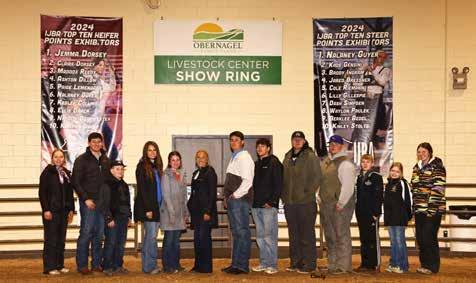
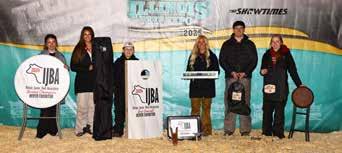
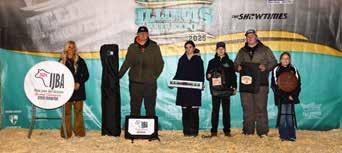
Earlybird Nutrition • Show-Rite
Stephens Trailer Sales • Trans Ova Genetics
Barnard Farms • Cross Creek Farms Inc.
Farm Credit Illinois • Purina
Brock, Kayla & Myah Little • Collins Cattle Company
Down Farms • Hopedale Agri-Center, Inc.
Jones Show Cattle • Olson Show Cattle
Paul Walker Family • Prairie View Farms
Sievers JCB/Sievers Equipment
Turner Family Shorthorns • Dearwester Grain
Hinshaw Show Cattle • Interglobe Sire Services
Keller Veterinary Service • Merck Animal Health
Ty Unger Country Financial/G&B Custom Plots
Agri-Pro Fencing • Bressner Farms • CJD Livestock Therapy
E&M Parr Cattle • GM Cattle • Hadden Farms • Kent Nutrition Group
Lemenager Cattle • Pike Feeds • ProHarvest Seeds
Schleich Cattle Services • Showbarn Creations
Toenyes Livestock • Reedy Farms


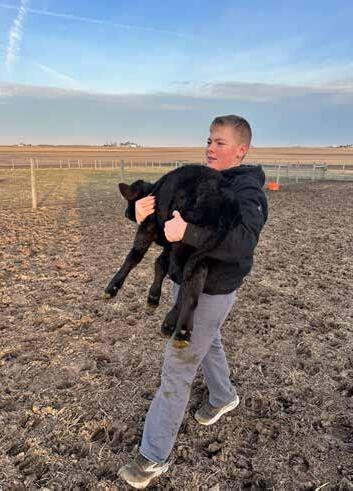
First Place




First Place
The Illinois Junior Beef Association hosted its first photography contest in conjunction with the Illinois Beef Expo. The purpose of this contest was to give IJBA members an opportunity to increase their photography skills through creativity behind the lens. With nearly 50 incredible entries, we were thrilled to see the talent and excitement the juniors had for this new contest, and were happy to award top three placings to winners in two separate divisions across three age divisions.


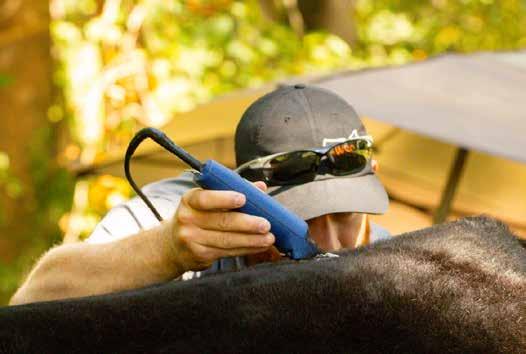





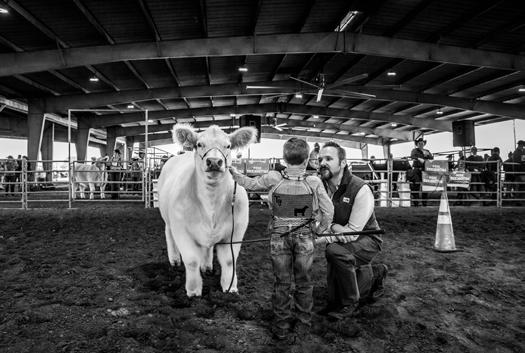





By Molly Biggs
Never quit at quitting time. Quit when the job is done.” A small, motivational sentiment from a close friend that 14-year-old Jemma Dorsey embraces. For many busy middle schoolers, quitting time comes when supper is ready or it’s time to head to sports practice. For Jemma, quitting early is not the way she earned the 2024 Illinois Junior Beef Association High Point Individual in the heifer division.
Jemma is from Moro, in Madison County, and is the daughter of Brad and Beth Dorsey, and sister to Drew DeClerk and Claire Dorsey. She is currently an eighth grader at Our Lady Queen of Peace where she stays active in soccer, basketball and volleyball.
Alongside her family, Jemma is actively involved in their operation, Homeland Farms, a diversified livestock and crop family farm. They focus on raising registered Simmental and Sim-Angus cattle and grow corn, soybeans, wheat and alfalfa, along with a bustling freezer beef business.
Like many youngest siblings, Jemma grew up going to shows, watching her siblings from ringside and participating in pee-wee showmanship contest any chance she could. From these initial moments, a young love for showing sparked. Jemma officially got to step into the ring as a junior member in 2020 and recalls her first heifer, Nikki J.
The heifer found her name with the help of Jemma’s teacher, after both her dam, Nicolette, and a third grader with a name that starts with a ‘J,” Nikki J stuck. Jemma reminisces on this first year and notes that she was the perfect first show heifer.
“During the year of COVID, I went to my first junior nationals,” she says. “I am not going to say she was the best heifer I have ever shown, but she was definitely a great heifer for any first-year showman. She was my buddy, and I just had fun with her. She was the first one that made me think, ‘I want to do this.’”
She adds, “The only time she would ever run is whenever you shook her feed pan. That was her weakness.”
As a young showman, many can relate to maybe not having the best heifer in the barn, especially compared to their older siblings. As an eight-year-old, this dynamic can be challenging to comprehend, especially for any good-hearted
sibling rivalry and a junior with a desire to achieve.
“I think when you are little and have an older sibling that show, it can be a challenge to understand who gets the better show heifers,” Jemma explains. “You do not realize yet, that they have more experience and fewer years to show, so that can be hard starting out.”
As she has gotten older and more experienced on the end of a halter, Jemma now realizes that her day is coming.
Although Jemma remembers starting out and perhaps not having the heifer to win it all, she looks back on her years of learning and growth as a showman with pride.
“I think my parents did a good job of picking who gets which heifer to show,” Jemma says, “When you are itty bitty you may not quite be there in showmanship or be able to show the heifer off to the best of your ability, but when you grow up you realize it was best for you to have a more mellow heifer to help you learn and become better.”
This period of patience and learning the tricks of the trade as a showman eventually led Jemma to one of her proudest moments—winning showmanship at the Illinois State Fair.
“It was a really cool moment because there are a lot of good showmen in Illinois,” Jemma exclaims. “It was just simply one of those ‘wow’ moments.”
She attributes consistency and practice to achieving these milestones — whether it’s rinsing and working with your heifer or practicing showmanship whenever possible. As she puts it, consistency is key.
Jemma often reflects on how she grew up watching her older siblings show, particularly her older sister, Claire. Jemma calls her the ‘main DJ in the barn,’ and her biggest role model. Crediting her wide variety of music to helping make the long hours pass by faster, while her mentorship — from working hair to showmanship — was crucial in helping Jemma reach where she is today in the ring.
Some of Jemma’s favorite memories are spending the summers in the barn, together. These special moments and hours of hard work paid off this summer when Jemma’s sister exhibited the Reserve Champion Female at the American Junior Simmental Association National Classic.
“It was really cool being a part of that and knowing that me and her, we push each other to be better,” Jemma says. “We are a team, and it is not just one of us winning, but both

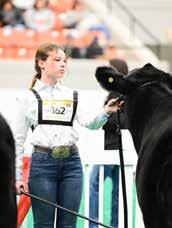
of us winning together.”
Although Jemma’s sister showed Dot, as they call her, Jemma emphasizes that it’s a team effort between the two of them. They work together on each other’s animals, learning each of their unique personalities.
“Though she (the heifer) can be a bit of a brat sometimes, she is really a sweet girl,” Jemma says. “We are really proud of her, but we are really excited to see her calve out and become a cow in our herd.”
It takes a village to show cattle at the highest level, and Jemma is no stranger to that, as she knows she would not be where she is today without those beside her. Earning the recognition as the 2024 IJBA Top Points in the heifer division is no small feat and most definitely would not be possible without many helping hands. Winning this award runs in Jemma’s family as both her brother and sister have won the award multiple times. This year Jemma adds her name to the list of recipients.
She says she always thought it was a unique award to win and was always a goal of hers in the back of her mind but was not necessarily her primary goal. It was not until this early summer when she checked in on the point standings that she realized she was in the top 10.
“This summer I checked the points and realized I might have a chance at winning,” Jemma says. “At that point, I wanted to go to more shows.”
She continued, “I think around fall time I looked online with my parents and saw that I was in first place and was just really proud of myself.”
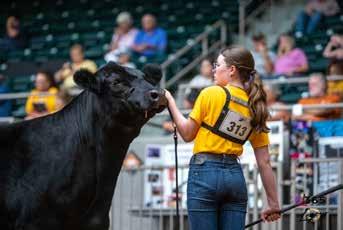


As Jemma reflects on her journey showing cattle, she always comes back to the quote, “Never quit at quitting time. Quit when the job is done.” This mantra resonates with her and is her biggest piece of advice to other junior members.
“Never quit, never give up,” she says. “One day, you are going to see your hard work pay off in the ring or at home when your heifer calves. The most rewarding part is seeing your hard work pay off in the ring or the pasture.”
Jemma makes it clear that it’s not just about personal success, but working together as a family or helping others along the way these moments are key.
“If anybody needs help, if their heifer is not moving or they need help getting to wash rack, just help everyone,” she says. “You’re not going to get anywhere in life if you have any enemies.”
In the end, Jemma’s story is one of teamwork and a belief that success doesn’t come from quitting early, but from pushing through until the job is done. For her, the real reward isn’t just the ribbons—it’s the satisfaction of knowing that hard work pays off and that she accomplished it with her family.
Q: What is your favorite show day product?
A: “Definitely Flare. At junior nationals, before everyone went into the ring, I sprayed them all with Flare for good luck.”
Q: Do you have any show day superstitions?
A: “Number cards in our harness. My sister needs a three in hers and I need a two in mine, or a sum of numbers because my sister’s lucky number is 13 and mine is 22”
Q: What is your favorite show to go to?
A: “The North American in Louisville, Kentucky.”
Q: What is your favorite breed to show?
A: “Simmis all the way. I love my Simmentals.”
Q: What is your favorite hobby when you are not showing?
A: “Playing sports. I love to play all different sports, but particularly either basketball or volleyball.”
Q: Do you have a favorite road trip snack?
A: “Dots Pretzels.”
Q: What are you most frequently found listening to in the barn?
A: “Whatever my sister plays, but she really likes rock.”
Nalaney Guyer’s road to top steer points in the IBA Points Program and other successes.
By Molly Biggs
For many, the show ring is not just a place of competition. It can be a safe place, a showcase of hard work and determination, a place that holds many happy memories and maybe a few letdowns along the way. For many, it is like a second home during the pivotal years of a young showman’s life.
Nalaney Guyer has been in a show ring since around the time she could take her first steps. She began her show career at the age of three and has spent nearly her whole life in a show ring from the sheep ring to pigs and cattle. With a passion for showing livestock and an impressive show career, Nalaney was recently named the 2024 Illinois Junior Beef Association High Point Individual in the steer division.
Nalaney is from Robinson, Illinois in Crawford County, and is the 21-year-old daughter of Dave and Lucy Guyer and younger sister to Ashtin Guyer Webster. Nalaney is a junior at Western Illinois University majoring in Agribusiness while working as the marketing coordinator for SC Online Sales.
Growing up, showing livestock was a way of life for the Guyer family, so it was inevitable that Nalaney would end up showing cattle, it was just a matter of time before you found her on the end of a pig whip or a show halter.
Her dad, Dave, was raised in the livestock industry, growing up raising sheep, he would eventually find his way to the cattle industry and has since become a nationally known steer trader. Her mom, Lucy, was involved in the cattle industry and the two would help to build the foundation for the sisters show career and passion for the industry.
As Nalaney rounds out her time as a junior she reflects on her time in the ring as a young exhibitor. She started out like many juniors learning the basics and practical applications like how to properly feed, fit and present one at a competitive level, a process she credits her dad’s guidance and patience. Though developing these skills at a young age was an important lesson to learn and led to her success in the ring at any age, Nalaney emphasizes that in the long run, the most important lessons were not washing and drying but understanding that winning wasn’t always the most important thing.
“The best thing I ever learned was how to lose,” Nalaney says. “Walking out of the ring with a smile, no matter the outcome is something I try to instill in younger kids now. There’s always another show, and that applies to life beyond the ring too.”
Nearing the end of your junior career symbolizes the end of an era for many exhibitors, this is typically a time in your life when something you have been doing since you were little ends. They often say, “Just because something changes doesn’t mean it’s over. It just means your role in it is different.” This is a sentiment that Nalaney has embraced fully, assuming her role as mentor to many younger exhibitors.
That love for mentoring younger exhibitors has become one of the most rewarding aspects for her, from teaching younger kids the fundamentals of showing to watching them succeed.
“We have customers who look up to Ash and me, so those kids are what I thrive on now,” Nalaney says. “Being able to teach kids what mom and dad taught us and what we learned showing is what gets me excited now.”
As she transitions from competitor to mentor, her passion for the industry remains the same. Though success may not look the same as walking out of the ring with a few banners, the greatest reward now comes from watching the younger exhibitors she mentors grow, improve and find their passion in the ring.
Securing the high-point steer title had been a longtime goal for Nalaney and achieving it in her final junior year made it even more meaningful. She had spent years competing at a high level and achieving success in the heifer ring while Ashtin had success in the steer ring. In a way, winning the high point steer title symbolized, both some fun-hearted sibling competition but also a culmination of a successful junior career.
“My sister and I were always happy for each other, but this felt really special to finally accomplish,” she says. “It was really exciting to achieve it when it was coming down to my last year, especially with a steer like Rick.”
As you can imagine, when you started showing cattle at age six, you have led quite a few through the ring, but Nalaney describes Rick as one of her favorite animals to show and was a key player in helping her secure this award. A

standout in the ring, he dominated at most shows he went to and held a special place in her family’s heart.
“Winning was exciting, but it was really about Rick,” she recalls. “He was one of those once-in-a-lifetime animals.”
Beyond her personal achievements, Nalaney remembers her family’s collective success as her proudest moment. This achievement came at the base of the Rocky Mountains when her sister, Ashtin, won the steer show at the National Western —a goal they had dreamed of since they started showing.
“When Ashtin and I were growing up and started showing cattle, we always told Dad we wanted to win the steer show in Denver,” Nalaney says. “And we would go every year, but never did it and never got quite there. It was the last year Ashtin could show, and we finally accomplished that goal.”
She continued “Being able to do that as a family and then getting to go to the Brown Palace and through the Sale of Champions and getting to talk to all the bidders and buyers and doing it all as a family is just one of the coolest experiences.”
As her time as both a student and a showman are winding down, Nalaney looks ahead to her future in the business. She currently works for SC Online Sales, managing marketing and social media and plans to remain in the livestock industry. Though her exact path is still forming, she knows she will continue supporting young exhibitors and stay involved in the family business.
As Nalaney reminisces on her time in the ring, she remembers what it was like for her younger self in the ring and thinks of what she would have told her six-year-old self, an encouragement she now tries to tell her younger mentees.
“Keep your head up. There are a lot of ups and downs, but don’t give up,” Nalaney says. “The most rewarding part is seeing the progress—not just in your own success, but in helping others find theirs.”
Nalaney’s show career captures the meaning of doing it as a family and valuing the relationships built along the way. Though her role as showman is ending, her new role as mentor will impact younger exhibitors, far and wide, whether it’s seeing them step in the ring for the first time or simply offering words of encouragement, she is an example of how success is measured not just by the wins, but by the support we give one another.
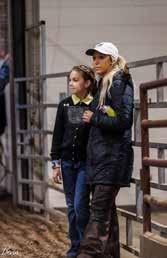
Nalaney and one of the
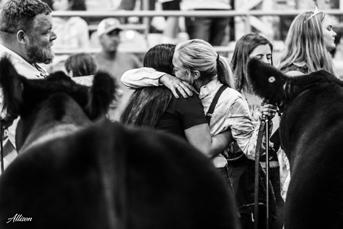


Q: What is your favorite show day product?
A: “Game Changer.”
Q: Do you have any show day superstitions?
A: “Not really any superstition, but when we go up to the ring, I have to have my show stick in my hand.”
Q: What is your favorite show to go to?
A: “Denver.”
Q: What is your favorite hobby to do when you are not showing cattle?
A: “Spending time with my family.”

Q: Do you have a favorite road trip snack?
A: “Honestly, the cups of pineapple of grapes.”
Q: What are you most frequently found listening to in the barn?
A: “Probably just Country music.”

The first program for IBA’s Illinois Beef Quality Showcase is in full swing, and participants and leaders recently had the opportunity to view the cattle on feed and receive an update at the University of Illinois Beef Research Farm in Urbana. During the open house event, IBA members and IBQS program participants toured the farm and saw the twenty-five head of cattle that have been part of the feeding trial since the end of November. These steers, donated by IBA member farms throughout the state, are being analyzed using state-of-the-art feeding technology that collects data on their feed and water in-take, real-time, along with periodic benchmarking of their performance with scale data and ultrasound evaluation.
This program also offers participating farms the shot at significant bragging rights – as it will highlight the most superior quality beef production in the state. Ultrasound data on cattle already shows potential for high choice and prime grade on most of the steers, but the final data set will also highlight which steers were most efficient with their feed intake and how gain and frame played a role in overall efficiency and profitability in the animals.
IBA introduced the program last fall as an opportunity to showcase superior beef production throughout the state, in a program modeled after similar cattle-on-feed studies in other cattle states. Through the partnership with Univ. of Illinois’ animal sciences faculty, IBA and program participants can gain insight into how cattle perform throughout a traditional feeding program, providing valuable data on rate of gain, feed efficiency, and other related live cattle performance metrics. Equally important to the program, though, is the data that will be collected when the cattle are harvested later this spring. IBA will be able to gather carcass data and yield information directly from the packer, giving a complete picture of performance through a review of the live cattle data and the metrics collected on the rail.

Some key data points shared at the open house include the average daily gain across the cohort at 5.1 pounds. The highest performing gainers in the group peaked at 6.3 pounds of growth per day. This is in contrast with the average dry matter intake coming in at 24.6 pounds per animal. However, the range on dry matter intake was 19.9-28.9 pounds per day depending on the animal being evaluated.
As a ratio of feed-to-gain, steers in the contest are showing an average F:G score of 4.9 pounds of feed per pound of growth, in a range of 3.7 to 8 pounds of feed. All this data is based on the first 75-days of the competition, so final outcomes are likely to shift given typical transitions in the later stage of finishing cattle. The average backfat, based on ultrasound data, is about .3 inches on the steers and the average live weight at the last time of data collection is right at 1200 pounds per steer.
IBA has planned a banquet for early June to announce the overall winners and celebrate the top performers in the IBQS program.
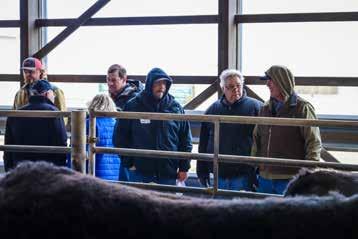

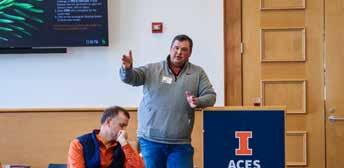
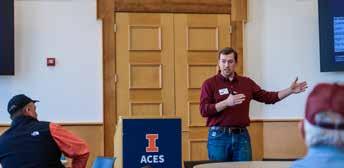
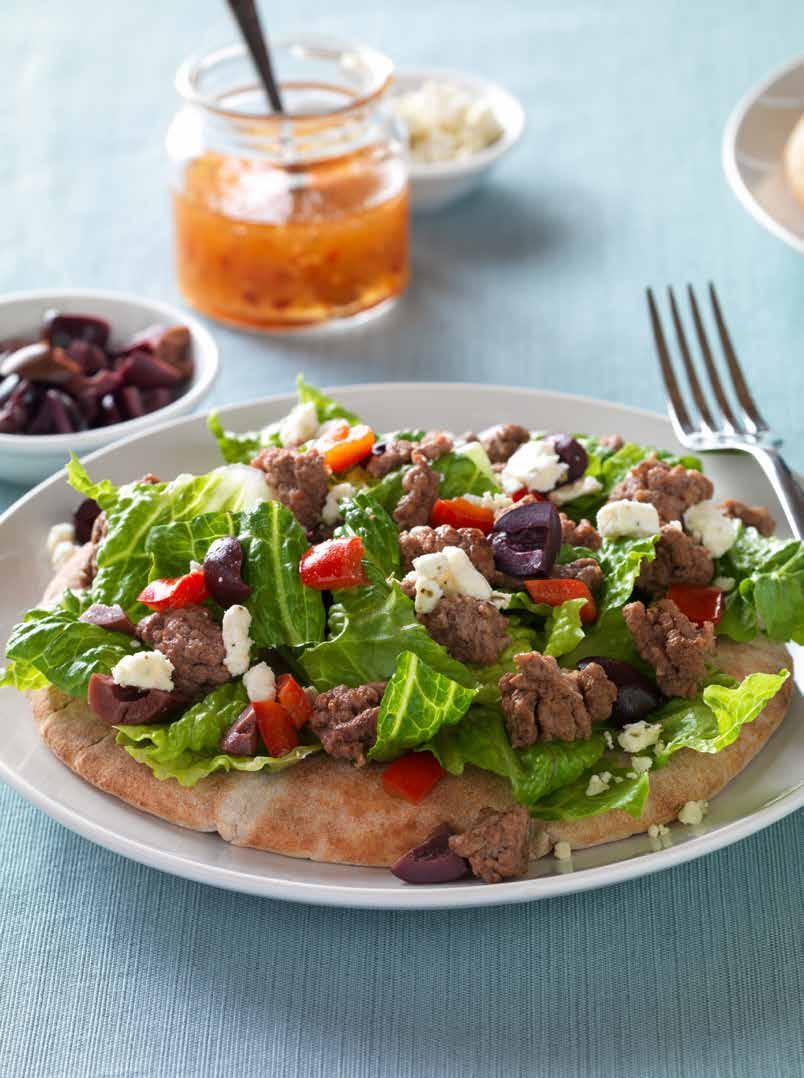



A versatile selection of beef-adorned salads to spice up your spring farm menu.

Ingredients:
• 1 pound Ground Beef
• 1 medium red bell pepper, chopped
• 4 cups chopped romaine lettuce
• 1/3 cup crumbled herb-flavored feta cheese
• 1/3 cup prepared regular or reduced fat non-creamy Italian dressing or other vinaigrette
• 1/4 cup Kalamata or ripe olives, chopped
• 4 pita breads, toasted
Cooking:
• Heat large nonstick skillet over medium heat until hot. Add Ground Beef and bell pepper; cook 8 to 10 minutes, breaking into 3/4-inch crumbles and stirring occasionally. Remove from heat. Pour off drippings.
• Cook’s Tip: Cooking times are for fresh or thoroughly thawed ground beef. Ground beef should be cooked to an internal temperature of 160°F. Color is not a reliable indicator of ground beef doneness.
• Add lettuce, cheese, dressing and olives to beef mixture; toss. Top pitas with equal amounts of beef mixture.
• 1 beef Top Sirloin Steak Boneless, cut 3/4 inch thick (about 1 pound)
• 2 cups fresh sugar snap peas
• 2 cups cooked gemelli or corkscrew pasta
• 1 cup grape or teardrop tomatoes, cut in halves
• 3 teaspoons minced garlic
• 1 teaspoon pepper
• Freshly grated lemon peel
• Chopped fresh parsley leaves (optional)
• 1/4 cup fresh lemon juice
• 2 tablespoons olive oil
• 2 tablespoons chopped fresh parsley leaves
• 2 teaspoons minced garlic
• 2 teaspoons freshly grated lemon peel
• 1/4 teaspoon salt
• 1/8 teaspoon pepper

1. Bring water to boil in large saucepan. Add peas; cook 2 to 3 minutes until crisp-tender. Drain; rinse under cold water. Combine peas, pasta and tomatoes in large bowl. Set aside.
2. Whisk Gremolata Dressing ingredients in small bowl until well blended. Toss 2 tablespoons dressing with pasta mixture. Set aside.
3. Combine 3 teaspoons minced garlic and 1 teaspoon pepper; press evenly onto beef Top Sirloin Steak. Place steak on rack in broiler pan so surface of beef is 2 to 3 inches from heat. Broil 9 to 12 minutes for medium rare (145°F) to medium (160°F) doneness, turning once.
4. Carve steak into thin slices; season with salt, as desired. Add steak slices and remaining dressing to pasta mixture; toss to coat evenly. Garnish with lemon peel and parsley, if desired.
Despite high retail beef prices and ongoing economic uncertainty, consumer demand for beef remains strong. In 2024, meat department sales hit new records, with fresh beef retail sales surpassing $40 billion and accounting for over 55% of all fresh meat sales. As we move into 2025, projections of tighter beef supplies and slightly higher prices, coupled with concerns about the future path of inflation, will continue to challenge consumers’ ability and willingness to pay for the superior beef eating experience they have come to value and appreciate.
While beef demand remains robust, consumers are cutting back on discretionary spending, dining out less, and enjoying more meals at home. They are also adjusting their budget priorities and finding ways to maximize their beef purchases. This includes seeking deals and using coupons more frequently, stocking up and freezing items, opting for store or private label brands, shopping at different stores like mass merchandisers and creatively using leftovers. These strategies align with the value and versatility demand driver and the focus on recipe development at www.beefitswhatsfordinner.com.
Looking ahead, emphasizing beef’s competitive advantages — such as being a top source of protein, superior in taste, nutritious, ideal for social gatherings and special occasions, and offering convenience and versatility — will remain crucial. Find the full report at https://www.beefresearch.org/Media/BeefResearch/Docs/16_pager_final_2025.pdf
GROUND BEEF
Grocery prices remain in the media spotlight due to inflation. Newsweek reported in January, the price for a dozen eggs is now higher than a pound of Ground Beef in some cities.2
DIET & COOKING TRENDS
More than 300 news outlets discussed the latest diet rankings from U.S. News & World Report. For the eighth year in a row, the Mediterranean diet took the top spot out of 38 diets ranked across 21 categories.1
RESTAURANTS
More than 150 news outlets discussed Steak ‘n Shake’s decision to use beef tallow to cook its french fries starting in February. The company says the change is to achieve the highest quality and best taste.1
ARMS #0133125-07
Consumers looking to stretch their food budget found recipe lists focused on Ground Beef in national outlets including Food Network, Southern Living and Delish.¹
518 news outlets posted the Top Food Trends of 2025 That Will Have You Choosing Beef with information from a release by the Issues Management & Public Relations team.1
More than 1,000 news mentions in the middle of January focused on Shake Shack’s plan to open nearly 1,200 new locations in the United States. Shake Shake currently has about 330 locations.1
1. National Cattlemen’s Beef Association. (2025). Traditional and social media listening dashboards. Retrieved from Meltwater: www.meltwater.com
2. https://www.newsweek.com/eggs-more-expensive-beef-some-places-prices-hit-newhigh-2010875
3. https://www.businesswire.com/news/home/20250114988756/en/Survey-Reveals-Majority-ofAmericans-Plan-to-Cook-at-Home-More-in-2025-To-Save-Money
4. https://www.cnn.com/2025/01/30/business/chilis-brinker-international-stock
GOOD NEWS FOR BEEF
More than 300 recipes with Ground Beef were detailed in the national outlets mentioned to the left. That is nearly one recipe for every day of the week.1
More than 200 news outlets mentioned a new Harris Poll that found consumers believe cooking meals at home is one of the best ways to save money on food.3
CNN and other media outlets reported sales at Chili’s increased 31% for the last three months of 2024. Executives said part of the increase is due to sales of Chili’s “Big Smasher” burger.4


State and National Beef Promotion and Research Programs Information is required by 7 CRF 1260.201. Failure to report can result in a fine. Information is held confidential per 7 CRF 1260.203.
Today’s Date ID Number (if known)________________________
Seller’s Name
Seller’s Signature
Buyer ’s Name
Buyer ’s Signature
Both the seller & the buyer are responsible for making sure that the $1.50 per head assessment is collected and remitted to the Illinois Beef Association.
Date of Sale
Total Number of Cattle Sold: X
*State of Origin
$1.00 per Head Federal Checko = Total Checko Payment for Federal and State
$0.50 per Head State Checko =
Person remitting form : Seller Buyer Phone Number:
*If the cattle purchased came from another state within the last 30 days, indicate from which state the cattle were purchased.
Send Report and Remittance to: Illinois Beef Association PO Box 19214
For additional information: call 217- 787- 4280or email olivia@illinoisbeef.com
The Illinois Beef Association (IBA) collects the Illinois Beef Checko in accordance with the Illinois Beef Market Development Act. IBA also collects the national beef checko ful lling its role as the Quali ed State Beef Council for Illinois as designated by the Cattlemen’s Beef Board.
The Beef Promotion and Research Act and Order authorizes Beef Checkoff funds to only be spent in the following program areas: beef promotion, research, consumer and industry information, foreign-market development and producer communications.
Each September, beef industry organizations present proposals – referred to as Authorization Requests, or “ARs” – to the Beef Promotion Operating Committee, comprised of members of the Cattlemen’s Beef Board and the Federation of State Beef Councils, to request funding for year-long marketing, education and research projects in these program areas. Those organizations approved for Beef Checkoff-funded work are referred to as Beef Checkoff contractors.
For FY25, the Beef Checkoff has eight contractors and two subcontractors. The contractors and their programs and projects are approved within each of the program areas for the fiscal year 2025 (October 2024 to September 2025).
Strives for an accurate understanding of the beef industry and helps maintain a positive cattle-marketing climate.
Meat Institute (MI): Administers the Veal Quality Assurance (VQA) program and fosters public awareness regarding VQA’s positive impact on animal well-being. 2025 Funding: $60,000
National Institute for Animal Agriculture (NIAA): Promotes responsible antibiotic use and combats antimicrobial resistance by maintaining consistent scientific collaboration between the animal agriculture and human health sectors. 2025 Funding: $95,000
National Cattlemen’s Beef Association (NCBA): Conveys the message that beef offers unparalleled taste and nutrition while dispelling myths about beef to consumer audiences. 2025 Funding: $2,800,000
Strengthens beef’s image by proactively sharing nutritional data and positive messages with influential stakeholders, including media, food editors, dietitians, physicians and other key figures who shape consumers’ food knowledge.
Meat Import Council of America (MICA) with subcontractor Northeast Beef Promotion Initiative (NEBPI): Builds beef consumption in highly populated Northeastern U.S. cities by working with restaurants and grocery store chains, marketing to specific consumer groups and garnering support from regional nutrition influencers. 2025 Funding: $900,000
American Farm Bureau Foundation for Agriculture (AFBFA): Provides science teachers with high-quality immersive experiences and materials to teach science through the lens of beef production. 2025 Funding: $600,000
NCBA: Increases consumer awareness of the Beef. It’s What’s For Dinner. brand campaign and positions beef as the number one protein with restaurants, culinary leaders, grocery stores and other markets. 2025 Funding: $6,000,000
Includes advertising, merchandising and new product development as well as training and promotional partnerships with restaurants and supermarkets that stimulate sales of beef and veal products.
MI with subcontractor New York Beef Council (NYBC): Empowers consumers with innovative approaches to access and purchase veal, elevating their veal-eating experiences through creative meal solutions that maximize taste, value and versatility. 2025 Funding: $220,000
NCBA: Connects directly with consumers to promote beef through the iconic Beef. It’s What’s For Dinner. brand. Through beef marketing and merchandising, Beef. It’s What’s For Dinner. educates and inspires consumers to purchase, prepare and enjoy beef. 2025 Funding: $8,900,000
Provides the foundation for virtually all Beef Checkoff-funded information and promotion by providing science related to beef nutrition, beef safety and pathogen resistance.
Meat Foundation (MF): Conducts post-harvest beef safety and science-based research on processed beef’s nutritional and health benefits. 2025 Funding: $600,000
NCBA: Works alongside universities and institutions to conduct high-quality scientific research on beef’s nutritional benefits, providing a sound factual basis to promote beef’s role in a healthy diet. 2025 Funding: $8,000,000
Informs producers and importers about how their Beef Checkoff dollars are invested through a variety of efforts and initiatives.
Cattlemen’s Beef Board (CBB): Communicates to producers where their Checkoff dollars are spent through The Drive newsletter (printed and electronic versions), media relations, attendance at producer meetings, social media and other tactics. 2025 Funding: $1,800,000
Develops international markets for U.S. beef through programs aimed at expanding market penetration, gaining new market access, improving global consumer perceptions and building trust.
U.S. Meat Export Federation (USMEF): Maximizes market access for U.S. beef around the globe, develops demand among new and existing buyers overseas and increases the value of the entire carcass through export support. 2025 Funding: $8,000,000
The Beef Checkoff program was established as part of the 1985 Farm Bill. The checkoff assesses $1 per head on the sale of live domestic and imported cattle, in addition to a comparable assessment on imported beef and beef products. States may retain up to 50 cents on the dollar and forward the other 50 cents per head to the Cattlemen’s Beef Promotion and Research Board, which administers the national checkoff program, subject to USDA approval.

Beef is a flavorful, versatile and popular food providing ten essential nutrients. In fact, beef's unique nutrient package contains high-quality protein and bioavailable essential nutrients making it well-suited to meet increased nutrient needs of adolescents during this stage of rapid growth and development. According to a recent NHANES analysis, adolescent beef consumers had a higher propensity for meeting nutrient requirements for iron, folate, riboflavin, thiamin, vitamins B12 and B6, zinc, calcium, copper, niacin and phosphorus, contributing significantly to nutrient adequacy during this life stage. Increased nutrient adequacy is particularly notable for female adolescent beef consumers who are exceptionally vulnerable to nutrient inadequacy.4 PROTEIN
Beef ’s Unique Nutrient Matrix: Cr itical Nutrients for Growth and Development During Adolescence
For healthy growth and development, a balanced healthful dietary pattern contributes to short- and long-term good health. Beef and other animal-source foods provide essential nutrients to adolescent diets. Key nutrients in beef for healthy growth and development during adolescence include Protein, Iron, Zinc, Vitamin B12, Vitamin B6, Riboflavin, Niacin, Choline, Phosphorus and Potassium.8
Protein
Beef is a flavorful, versatile and popular food providing ten essential nutrients. In fact, beef’s unique nutrient package contains high-quality protein and bioavailable essential nutrients making it well-suited to meet increased nutrient needs of adolescents during this stage of rapid growth and development. According to a recent NHANES analysis, adolescent beef consumers had a higher propensity for meeting nutrient requirements for iron, folate, riboflavin, thiamin, vitamins B12 and B6, zinc, calcium, copper, niacin and phosphorus, contributing significantly to nutrient adequacy during this life stage. Increased nutrient adequacy is particularly notable for female adolescent beef consumers who are exceptionally vulnerable to nutrient inadequacy.4

Dietary protein is a key nutrient for growth and development as it supplies amino acids necessary for processes such as tissue growth, energy production, immune function and nutrient absorption.9 In the U.S., dietary protein intake generally meets the Recommended Dietary Allowance (RDA) except for adolescent females age 14-18 years.3 It is reported that 7% of adolescent females age 9-13 years are below the RDA, while 23% of adolescent females age 14-18 years fall short. For their male counterpart, 2% of adolescent males age 9-13 years are below the RDA and 11% of adolescent males age 14-18 years are below the RDA.10
For healthy growth and development, a balanced healthful dietary pattern contributes to short- and long-term good health. Beef and other animal-source foods provide essential nutrients to adolescent diets. Key nutrients in beef for healthy growth and development during adolescence include Protein, Iron, Zinc, Vitamin B12, Vitamin B6, Riboflavin, Niacin, Choline, Phosphorus and Potassium.8
While the dietary recommendations were established based on preventing deficiency, there are no guidelines for an “optimal” protein intake in the pediatric population for promoting healthy growth and development.+ The Acceptable Macronutrient
Dietary protein is a key nutrient for growth and development as it supplies amino acids necessary for processes such as tissue growth, energy production, immune function and nutrient absorption.9 In the U.S., dietary protein intake generally meets the Recommended Dietary Allowance (RDA) except for adolescent females age 14-18 years.3 It is reported that 7% of adolescent females age 9-13 years are below the RDA, while 23% of adolescent females age 14-18 years fall short. For their male counterpart, 2% of adolescent males age 9-13 years are below the RDA and 11% of adolescent males age 14-18 years are below the RDA.10
While the dietary recommendations were established
based on preventing deficiency, there are no guidelines for an “optimal” protein intake in the pediatric population for promoting healthy growth and development.+ The Acceptable Macronutrient Distribution Range (AMDR) for protein is 10-30% of total calories for adolescents 9 to 18 years of age.12 Approximately 2% and 1% of adolescent females age 9-13 years and 14-18 years, respectively, consume protein below the AMDR (i.e., less that 10% of total energy intake), while 1% of adolescent males age 9-18 years are below the AMDR for protein intake.10 No adolescent age groups were reported to consume protein above the AMDR.10 Additionally, evidence-based reviews designed to establish dietary reference values for healthy children, adolescents and teens have considered the potential for adverse outcomes related to higher protein intake, and these studies consistently found insufficient evidence to establish an upper limit for protein intake.12,13 Given these findings, there appear to be no adverse effects for increased protein intakes, even intake above the RDA but within the AMDR, for adolescents.
Distribution Range (AMDR) for protein is 10-30% of total calories for adolescents 9 to 18 years of age. Approximately 2% and 1% of adolescent females age 9-13 years and 14-18 years, respectively, consume protein below the AMDR (i.e., less that 10% of total energy intake), while 1% of adolescent males age 9-18 years are below the AMDR for protein intake.10 No adolescent age groups were reported to consume protein above the AMDR.10 Additionally, evidence-based reviews designed to establish dietary reference values for healthy children, adolescents and teens have considered the potential for adverse outcomes related to higher protein intake, and these studies consistently found insufficient evidence to establish an upper limit for protein intake.12,13 Given these findings, there appear to be no adverse effects for increased protein intakes, even intake above the RDA but within the AMDR, for adolescents.
Beef is an excellent source of high-quality protein. One 3-ounce cooked serving provides about 51% of the Daily Value for protein.8,14 Beef is one of the top three food sources for protein in children and adolescents.15 Research has demonstrated that animal-based protein is more bioavailable than protein from plant food sources.16 With protein acknowledged to be a nutrient of public health challenge for adolescent girls, a nutrient-dense source of protein like beef is a food to highlight as it provides additional key nutrients like iron as a part of a balanced diet for this population.
Beef is an excellent source of high-quality protein. One 3-ounce cooked serving provides about 51% of the Daily Value for protein.8,14 Beef is one of the top three food sources for protein in children and adolescents.15 Research has demonstrated that animal-based protein is more bioavailable than protein from plant food sources.16 With protein acknowledged to be a nutrient of public health challenge for adolescent girls, a nutrient-dense source of protein like beef is a food to highlight as it provides additional key nutrients like iron as a part of a balanced diet for this population.
Iron plays a significant role in many functions because it helps the blood carry oxygen to the lungs, muscles, and all parts of our bodies. Because of this role, iron is also involved in brain function and helps keep the immune system strong. During adolescence, there are increased needs for iron in both males and females to sustain the rapid growth and
development including enlarging muscle mass, expansion of blood volume and increase in hemoglobin concentration.17 The recommended intake of iron during the years 9 -13, among both boys and girls, is about 8 milligrams of iron daily, while the recommendation jumps to 15 milligrams of iron daily for girls ages 14-18 years, and 11 milligrams daily for boys ages 14-18 years. The higher levels of iron overall are noted due to rapidly increased growth and development occurring during this life stage — in adolescent girls even higher requirements relate to menarche, menstruation and menstrual blood loss.17
Iron deficiency can impact physical growth, endurance and cognitive performance, and can also lead to depressed immune function in adolescents.17,18 Iron deficiency is especially problematic among adolescent girls and women of reproductive age, given that approximately 20% of this population subgroup is at risk of inadequate dietary iron based on biomarker data.19 In a recent analysis of U.S. females ages 12-21 years, iron deficiency affected almost 40%, and iron deficiency anemia affected 6%.20
Physically active adolescents are further at increased risk of iron deficiency due to iron losses through sweat, urine, foot-strike hemolysis, and inflammatory responses. In an assessment of youth athletes (8-16 years), poor iron status was prevalent, with anemia reported in 46% of the males and 53% of the females.21
Beef is a good source of iron with one 3-ounce cooked serving providing about 14% of the Daily Value.8,14 Beef is one of the top five food sources for iron in children and adolescents.15 Additionally, beef is a source for heme iron, which is more easily absorbed or bioavailable in the body compared to non-heme iron found in plant foods and is critical to reversing iron deficiency.3,22,23
Iron is identified as a nutrient of public health concern for adolescent females. Dietary guidance recommends that women and adolescent girls consume foods containing heme iron, such as lean meats including beef, poultry and seafood, which is more readily absorbed by the body, to help improve iron status.19 It is estimated that 420,000 fewer adolescent females would fall below the Estimated Average Requirement (EAR) for iron if they incorporated an average of 1.7 ounces of beef into their dietary pattern.4 Similarly, 160,000 fewer adolescent males would fall below the EAR for iron if they consumed 2.0 ounces of beef per day.4
Zinc is essential for growth and sexual maturation.17 Zinc deficiency can delay growth and development as well as impair brain function by affecting attention, learning, memory, and motor development and may contribute to possible development of neuropsychological diseases.17,24,25
Beef is an excellent source of zinc, with a 3-ounce cooked serving providing about 53% of the Daily Value.8,14 Beef is the top food source for zinc in children and adolescents.15
It is estimated that 1.4 million fewer adolescent females and 890,000 fewer adolescent males would fall below EAR for zinc by incorporating 1.7 and 2 ounces of beef per day into their dietary patterns, respectively.4
B vitamins like vitamins B12, B6, and niacin are critical for various important functions for body growth and maintenance, including supporting brain function and energy metabolism.
Beef is an excellent source of vitamins B6, B12, and niacin (B3), with one 3-ounce cooked serving providing about 28%, 101%, and 31%, respectively, of the Daily Value.8,14 Additionally, beef is a good source of riboflavin (B2), and a 3-ounce serving provides about 19% of the Daily Value.8,14 Beef is in the top 5 food sources for niacin, B6 and B12 in children and adolescents,15 and it is important to note that vitamin B6 and B12 are identified as nutrients of public health challenge for female adolescents. Animal-source foods, such as beef, are the only food sources of vitamin B12. By incorporating an average of 1.7-2 ounces of beef in their daily dietary pattern, it is estimated that 600,000 fewer adolescent females and 200,000 adolescent males would fall below EAR for vitamin B12, respectively.4
Choline is an essential nutrient in brain development, cell signaling, nerve impulse transmission, and lipid transport and metabolism.
Beef is a good source of choline; with one 3-ounce cooked serving providing about 13% of the Daily Value.8,14
The adequate intake (AI) for choline is 375 mg/d for adolescents age 9-13 years, 400mg/d for females 14-18 years and 550mg/d for males 14-18 years.26 In general, choline intake is suboptimal across the population with no exception for adolescents, with 14% and <3% of males and females aged 9–13 years, respectively, meeting the AI. Similarly, 5% and <3% of males and females age 14-18 years, respectively, meet the AI for choline.26 Animal-source products typically contain higher levels of choline than most plant foods.
Phosphorus helps build bones and teeth and is needed for the body to make protein for the growth, maintenance, and repair of cells and tissues.
Beef is a good source of phosphorus, with one 3-ounce cooked serving providing about 16% of the Daily Value. Beef is in the top five food sources for phosphorus in children and adolescents.8,14,15 It is estimated that 730,000 fewer adolescent females would fall below EAR for phosphorus if they incorporated an average of 1.7 ounces of beef into their dietary pattern.4 Similarly, it is estimated that 440,000 fewer male adolescents would fall below the EAR for phosphorus by incorporating an average of 2.0 ounces of beef into their dietary pattern.4 With phosphorus acknowledged as a nutrient of public health challenge for both female and male adolescents, food sources like beef can play an important role toward achieving improved nutrient adequacy in this age group.
Potassium is involved in muscle contractions, heart function and water balance.
One 3-ounce cooked serving of beef provides about 6% of the Daily Value and is one of the top 10 food sources of
potassium in children and adolescents.8,14,15 With potassium identified as a nutrient of public health concern for all Americans, food sources of potassium are important to identify and encourage as part of healthy dietary patterns.
slowly declined between children and adolescents (2-18 beef on any given day, range, the usual intake which is within the DGA Eggs subgroup.2 Of the research, processed beef among beef consumers.2 adolescent beef consumers (2-18 ground beef on any given beef consumers had adolescent beef consumers nutrients compared to those in consume beef, particularly including iron, niacin, vitamin B6, and zinc. (21) beef had an average total When compared to consumers, the beef consumers out of the 20 vitamins and these, statistically higher reported nutrients (i.e., phosphorus, potassium, riboflavin, choline, vitamin B12, and zinc).
Beef consumption in adolescents has slowly declined between 2001–2018.2 Approximately half of children and adolescents (2-18 years of age) are reported to consume beef on any given day, and among beef consumers in this age range, the usual intake of total beef was 2.2 ounces per day, which is within the DGA recommendation for Meat, Poultry, and Eggs subgroup.2 Of the beef types analyzed as a part of this research, processed beef was the least consumed type of beef among beef consumers.2 One quarter of the children and adolescent beef consumers (2-18 years) in this study reported consuming ground beef on any given day.
consumers had a 24% females, with intake of adolescent male non-beef minerals reported in the study greater nutrient adequacy statistically higher (i.e., potassium, selenium, sodium, zinc) for the beef eaters.4


the inclusion of animaldietary patterns to provide protein, iron, choline, which are not always easily and vegan diets. contain less bioavailable require significantly more nutrients.27,28 Over one-third of adolescent diet is derived from
A recent study found that adolescent beef consumers had better nutrient adequacy (i.e., fewer adolescent beef consumers fell below the EAR) for numerous nutrients compared to those in the same age group who did not consume beef, particularly for nutrients inherently found in beef, including iron, niacin, phosphorus, riboflavin, vitamin B12, vitamin B6, and zinc. (21) Female adolescents who consumed beef had an average total beef intake of 1.7 ounces per day. When compared to adolescent female non-beef consumers, the beef consumers had numerically higher intakes of 19 out of the 20 vitamins and minerals reported in the study. Of these, statistically higher intakes were reported for 13 of the reported nutrients (i.e., calcium, folate, iron, niacin, phosphorus, potassium, riboflavin, selenium, sodium, thiamin, total choline, vitamin B12, and zinc).
Male adolescent (14-18 years) beef consumers had a 24% greater beef intake when compared to females, with intake of 2.0 ounces per day.4 Compared to adolescent male non-beef consumers, all 20 vitamins and minerals reported in the study were
to significant challenges in growth, overall development, and learning, such as delayed physical development, poor academic performance, and depressed immune function. In addition, health-promoting dietary habits and lifestyle behaviors are established in adolescence, having both short- and long-term health consequences. The inclusion of beef and other nutrient-
numerically higher, representing greater nutrient adequacy of the beef consumers, with 11 nutrients statistically higher (i.e., calcium, iron, niacin, phosphorus, potassium, selenium, sodium, thiamin, total choline, vitamin B12, and zinc) for the beef eaters.4
There is strong evidence supporting the inclusion of animal-source foods, such as beef, in healthy dietary patterns to provide essential nutrients such as high-quality protein, iron, choline, vitamins B6 and B12, and zinc, some of which are not always easily obtained with plant-based vegetarian and vegan diets. Additionally, plant protein foods often contain less bioavailable forms of these needed nutrients or require significantly more calories to get the same amount of nutrients.27,28 Over one-third of protein consumed in the average adolescent diet is derived from lower-quality protein sources such as grains, legumes, nuts and seeds.29 A systematic review of children and adolescents following vegetarian and vegan or omnivore (meat-containing) diets concluded that the vegetarian and vegan children and adolescents were at risk for inadequate vitamin B12, iron, and zinc intakes.30
Compared to all other age groups, adolescents have the largest discrepancy between recommended and current nutrient intakes.3 Poor nutrient intake during adolescence can lead to significant challenges in growth, overall development, and learning, such as delayed physical development, poor academic performance, and depressed immune function. In addition, health-promoting dietary habits and lifestyle behaviors are established in adolescence, having both short- and long-term health consequences. The inclusion of beef and other nutrient-dense animal-source foods in a healthful dietary pattern can help improve nutrient adequacy among adolescents. Emerging research indicates beef intake can help improve diet quality in adolescents, can help promote satiety and is associated with increased mental well-being. Future research is necessary to ensure adolescents not only have the resources, education, and support to choose healthful, nutrient-dense foods and dietary patterns but also are equipped with behavioral strategies that help promote healthful habits and behaviors throughout the life span.
1. Murphy MM, Anderson MM, Bi X. Analysis of nutrient contribution of beef sandwiches in the United States (NHANES 20132016). Front Nutr, 10 June 2024 (11). https://doi.org/10.3389/ fnut.2024.1355490.
2. Lau CS, Fulgoni VL, 3rd, Van Elswyk ME, McNeill SH. Trends in Beef Intake in the United States: Analysis of the National Health and Nutrition Examination Survey, 2001-2018. Nutrients 2023; 15(11): 2475.
3. U.S. Department of Agriculture and U.S. Department of Health and Human Services. 2020. Dietary Guidelines for Americans, 2020-2025. 9th Edition. https://www.dietaryguidelines.gov/.
4. Fulgoni K, Fulgoni VL. Beef Intake Is Associated with Higher Nutrient Intake and Nutrient Adequacy in U.S. Adolescents, NHANES 2001-2018. Nutrients 2023; 15(23): 4996.
5. Black LI, Terlizzi EP, Vahratian A. 2022. Organized sports participation among children aged 6–17 ayears: United States, 2020. NCHS data brief ; no. 441 https://dx.doi.org/10.15620/ cdc:119026.
6. Smith JJ, Eather N, Morgan PJ, Plotnikoff RC, Faigenbaum AD, Lubans DR. The health benefits of muscular fitness for children and adolescents: a systematic review and meta-analysis. Sports Med 2014; 44(9): 1209-23.
7. Raiten DJ, Allen LH, Slavin JL, Mitloehner FM, Thoma GJ, Haggerty PA, Finley JW. Understanding the Intersection of Climate/Environmental Change, Health, Agriculture, and Improved Nutrition: A Case Study on Micronutrient Nutrition and Animal Source Foods. Curr Dev Nutr 2020; 4(7): nzaa087.
8. U.S. Department of Agriculture FoodData Central. 2019. Available at fdc.nal.usda.gov (Beef composite, cooked – NDB Number 13364).
9. Joint FAO/WHO/UNU. 2007. Expert Consultation on Protein and Amino Acid Requirements in Human Nutrition (WHO Technical Report Series 935).
10. Berryman CE, Lieberman HR, Fulgoni, VL 3rd, Pasiakos SM. Protein intake trends and conformity with the Dietary Reference Intakes in the United States: analysis of the National Health and Nutrition Examination Survey, 2001-2014. Am J Clin Nutr 2018; 108(2): 405-13.
11. Garcia-Iborra M, Castanys-Munoz E, Oliveros E, Ramirez M. Optimal Protein Intake in Healthy Children and Adolescents: Evaluating Current Evidence. Nutrients 2023; 15(7).
12. Institute of Medicine, 2005. Dietary Reference Intakes for Energy, Carbohydrate, Fiber, Fat, Fatty Acids, Cholesterol, Protein, and Amino Acids. The National Academies Press, Washington, DC. https://doi. org/doi:10.17226/10490.
13. European Food Safety Authority (EFSA). Scientific Opinion on Dietary Reference Values for Protein. EFSA Journal 2012; 10(2): 2557.
14. U.S. Food and Drug Administration. Daily Value on the New Nutrition and Supplement Facts Labels. https://www.fda.gov/food/new-nutrition-facts-label/daily-value-new-nutrition-and-supplement-factslabels.
15. Keast DR, Fulgoni VL, 3rd, Nicklas TA, O’Neil CE. Food sources of energy and nutrients among children in the United States: National Health and Nutrition Examination Survey 2003-2006. Nutrients 2013; 5(1): 283-301.
16. Phillips SM, Fulgoni, VL 3rd, Heaney RP, Nicklas TA, Slavin JL, Weaver CM. Commonly consumed protein foods contribute to nutrient intake, diet quality, and nutrient adequacy. Am J Clin Nutr 2015; 101(6): 1346S-52S.
17. American Academy of Pediatrics Committee on Nutrition, 2019. Pediatric Nutrition, 8th Ed. Kleinman RE & Greer FR (Ed.) American Academy of Pediatrics, Itasca, IL.
18. Norris SA, Frongillo EA, Black MM, Dong Y, Fall C, Lampl M, Liese AD, Naguib M, Prentice A, Rochat T, Stephensen CB, Tinago CB, Ward KA, Wrottesley SV, Patton GC. Nutrition in adolescent growth and development. Lancet 2022; 399(10320): 172-84.
19. Dietary Guidelines Advisory Committee. Scientific Report of the 2020 Dietary Guidelines Advisory Committee: Advisory Report to the Secretary of Agriculture and the Secretary of Health and Human Services. https://www.dietaryguidelines.gov/2020-advisory-committee-report.
20. Weyand AC, Chaitoff A, Freed GL, Sholzberg M, Choi SW, McGann PT. Prevalence of Iron Deficiency and Iron-Deficiency Anemia in US Females Aged 12-21 Years, 2003-2020. JAMA 2023; 329(24): 2191-93.
21. Shoemaker ME, Gillen ZM, McKay BD, Koehler K, Cramer JT. High Prevalence of Poor Iron Status Among 8- to 16-Year-Old Youth Athletes: Interactions Among Biomarkers of Iron, Dietary Intakes, and Biological Maturity. J Am Coll Nutr 2020; 39(2): 155-62.
22. Institute of Medicine, 2001. Dietary Reference Intakes for Vitamin A, Vitamin K, Arsenic, Boron, Chromium, Copper, Iodine, Iron, Manganese, Molybdenum, Nickel, Silicon, Vanadium, and Zinc. The National Academies Press, Washington, DC. https://doi.org/doi:10.17226/10026.
23. Piskin E, Cianciosi D, Gulec S, Tomas M, Capanoglu E. Iron Absorption: Factors, Limitations, and Improvement Methods. ACS Omega 2022; 7(24): 20441-56.
24. Black MM. The evidence linking zinc deficiency with children’s cognitive and motor functioning. J Nutr 2003; 133(5 Suppl 1): 1473S-6S.
25. Nyaradi A, Li J, Hickling S, Foster J, Oddy WH. The role of nutrition in children’s neurocognitive development, from pregnancy through childhood. Front Hum Neurosci 2013; 7: 97.
26. Wallace TC, Blusztajn JK, Caudill MA, Klatt KC, Natker E, Zeisel SH, Zelman KM. Choline: The Underconsumed and Underappreciated Essential Nutrient. Nutr Today 2018; 53(6): 240-53.
27. Petersen KS, Flock MR, Richter CK, Mukherjea R, Slavin JL, Kris-Etherton PM. Healthy Dietary Patterns for Preventing Cardiometabolic Disease: The Role of Plant-Based Foods and Animal Products. Curr Dev Nutr 2017; 1(12): cdn.117.001289.
28. Wolfe RR, Baum JI, Starck C, Moughan PJ. Factors contributing to the selection of dietary protein food sources. Clin Nutr 2018; 37(1):130-38.
29. Hoy MK, Clemens JC, Moshfegh AJ. 2021. Protein Intake of Adolescents in the U.S.: What We Eat in America, NHANES 2015-2016. Food Surveys Research Group Dietary Data Brief no. 30.
30. Neufingerl N, Eilander A. Nutrient Intake and Status in Children and Adolescents Consuming Plant-Based Diets Compared to Meat-Eaters: A Systematic Review. Nutrients 2023; 15(20): 4341.

Major League Baseball opening day is March 27, and spring sports are on the horizon at home too. Our juniors are not only the next generation of beef consumers but classmates, teamates, friends and carpool buddies too! What ways are you sharing the story and tastiness of beef with your friends?
Recipes you can make to show your friends the versatility of the beef you raise!

Use the camera app on a smart phone to scan the QR code and try these three recipes. There is one for all three daily meals!





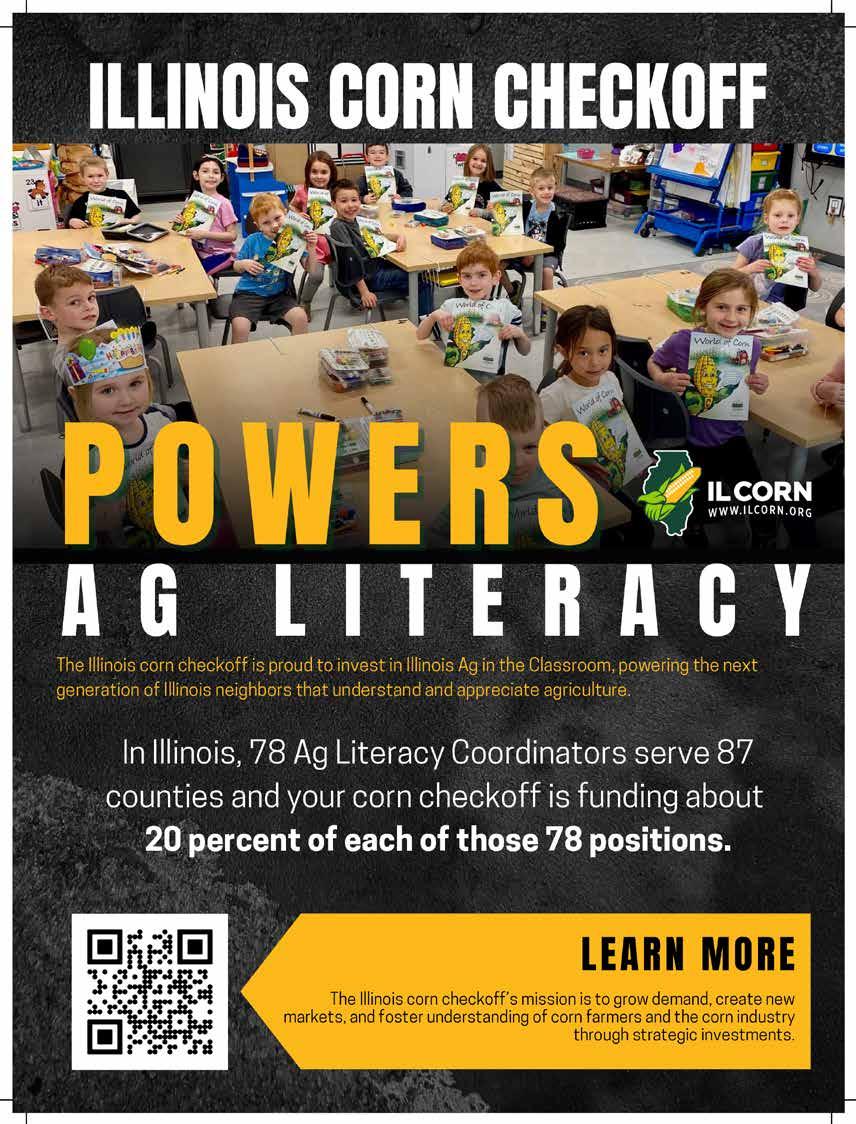

Multi-Species
Jackpot show
Day 1: Hogs & Goats
Day 2: Cattle & Sheep
IBA Points
ICPA Points Series
ICLA Points
ILWS Points & IMGP
Top 5 will be chosen for each species, breeding and market animals.
Breed/Division Awards
Cash Payouts
Top 2 Showman in each age division for each species.
June 28-29, 2025
LaSalle County Fairgrounds 1578 4-H Rd, Ottawa, IL 61350
Saturday June 28:
Gates open: 4am
Check in: 5-7:30am
Hog show: 9:30am
Goat show: 10am
Hog/Goat Showmanship: 15min after their Market Drive
GENERAL RULES & INFORMATION:
• Health Papers required
• Must have readable tattoos & papers on registered animals
• Limited barn space - show off trailer encouraged
• Generators encouraged
• Cattle - Heifers shown by breed and age
- Commercial heifers shown by age/weight
- Steers shown by breed and weight
• Hogs - Gilts shown by breed and age
- Barrows shown by breed and weight
• Sheep - Market ewes shown by weight
- Market wethers shown by weight

Sunday June 29:
Gates open: 4am
Check in: 5:30-8am
Cattle show: 9am
Sheep show: 9:30am
Cattle/Sheep Showmanship: 15min after their Market Drive
• Exhibitors must f0llow age requirements for their species point rules and reside in Illinois.

• Goats - Market does, Commercial does & Market wethers shown by weight
- Percentage/Fullblood does & Fullblood/Commercial bucks shown by age
Cattle
Nate Suttles, IL
Hogs
Will Taylor, IA
Sheep
Craig Benoit, IL
Goats
Evan McCleary, IA


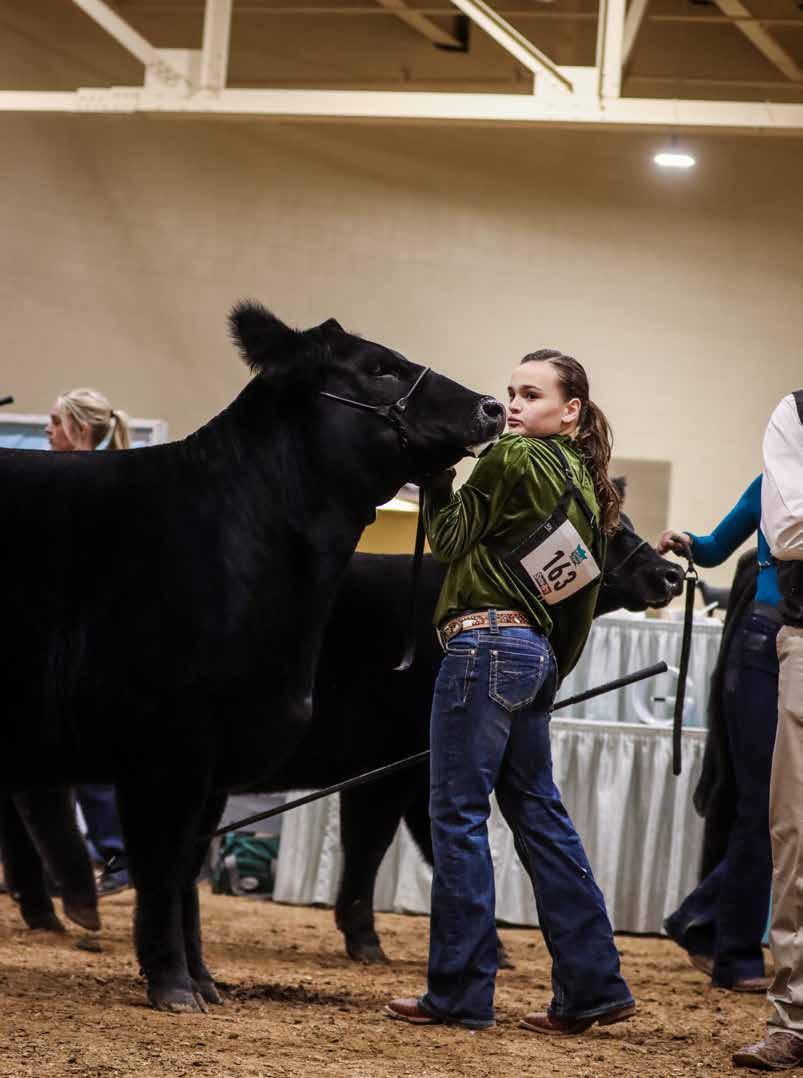

March/April 2025

President: Carla Jurgenson
Vice President: David Mool
Secretary: Clay Sellmeyer
Business Manager: Doug Turner
Past President: David Jenkins
Bureau County: Vaughn Kiner
Central Illinois: Luke Lemenager
Logan County : Carla Jurgenson
Northern Illinois: Jarad Carroll
South Central: Richard Hurst
Wabash Valley: Shaye Harre
Directors at Large:
Sam Brumleve
Brent Hinkle
T.J. Curtin
Brian Hutchins
Kyle Buetke
Jeff Dameron
Chris Cassady
Clay Sellmeyer
Dan Naughton
Eric McClure
David Mool
Bodee Schlipf
Brad Evans
Tracey Rawlings
To place advertisements or your latest Angus news contact: Olivia Hoots Illinois Beef Editor Illinois Beef Association 217-787-4280 olivia@illinoisbeef.com www.illinoisbeef.com
by Devin Bollman of Breckyn Bloomberg exhibiting her Angus heifer at the 2025 Illinois Beef Expo.
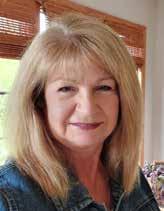
This will be the last message I will be writing as the current president of our association. It has been very gratifying serving the association over the last two years. The Board of Directors have stepped up to the challenges of change and have offered alternatives to the loss of our Futurity Show & Sale in the very successful Bred Female Sale in December and offering a mini conference prior to our annual meeting and association banquet on March 8. This board has made it a goal to offer events that meet the needs of the show side and the commercial side of our members.
It looks like this year is getting off to a great start beginning with our partnership with the Illinois Beef Association. The Illinois Beef Expo was a great opportunity to showcase our breed. Angus were well represented in the Illinois Performance Tested bull sale. The high selling bull was a yearling Angus bull, selling for $13,000. The bull, Kramer Farms Goalkeeper 2348, was sold by Keith and Brady Kramer of Farina. The high selling senior Angus bull consigned by Joe Curtin Cattle Company, Stonington, sold for $9,000. The 21 Angus bulls in the sale averaged $6,807. Congratulations to all the consignees.
The Angus junior show continued to show the quality of our breed and the superb youth that are actively promoting Angus through their hard work and perseverance. Congratulations to Brecklyn Bloomberg on her Champion Angus Heifer and Macie Bartlow on her Reserve Angus Heifer. All the juniors should be applauded for their efforts in showing and preparing their animals for a great show. Continue the hard work and we look forward to seeing you all in other rings throughout the show season. At the same time, we want to tell the juniors who work with cattle everyday but may not show them, thank you for your stewardship in raising cattle to be offered as breeding stock and food for the masses. It takes a village….
Best regards,

imcntry1@aol.com | (217) 737-6160
Angus fieldman draws on experience for new role.

A deep respect for the history of the Angus breed, paired with a passion for the future – Casey Jentz, recently named chief operating officer of the American Angus Association®, will bring to his new role.
“Angus is the heartbeat of the beef industry,” Jentz said. “The people before us have done a great job of leading Angus and positioning the breed as a leader in the industry. We can build on that and push forward into the future.”
For more than 10 years, Jentz has served as an Angus regional manager in Indiana, Illinois, Michigan and Wisconsin. During that time, he worked directly with Association members helping them understand Association programs, market their cattle with Angus Media services and answer their questions.
In his new role, Jentz will be responsible for direction and strategy of several departments, including member and field services, communications, performance programs, commercial programs, and events and junior activities.
“We are thrilled to promote Casey to this new role,” said Mark McCully, chief executive officer for the Association. “Not only does he have years of experience working with Angus breeders in the field, but his knowledge of the Association and its programs will also be invaluable as COO. In particular, I love Casey’s unwavering commitment to the breed.”
It’s the Angus family that drives Jentz. “The Angus business is a combination of great people and great cattle where great things can happen,” he said.
Jentz is a fourth-generation Angus breeder who was a National Junior Angus Association board member from 2004 to 2006. His daughter, Sydney, is following in his footsteps with excitement for the breed. This is her third year as an NJAA member and his younger daughter, Savannah, is not far behind.
“There are a lot of things that get me excited with possibilities for the future,” he said. Whether that’s seeing a great Angus cow, meeting a new member or seeing the future through the eyes of a junior, Jentz is looking forward to his new role.
Prior to working for the Association, Jentz was the general manager of a farm in Wisconsin and managed a multi-state sales territory for an animal health company.
Jentz will assume his new role on March 3 and will continue to work sales and serve breeders in his region through the transition. He and his wife, Kayla, and their two daughters will be relocating to St. Joseph, Missouri in the coming months. A position for a new regional manager in Jentz’s territory has been posted on Angus.org/careers.
“I am really looking forward to continuing to work with the great members of this Association in a new way,” Jentz said.
For more information about the American Angus Association, please visit angus.org.
Youth can apply for Angus Foundation scholarships until May 1.
Since 1998, the Angus Foundation has championed the success of Angus youth by investing in their education. In the past 27 years, the Foundation has awarded more than $4.9 million in scholarships including $388,500 in 2024 alone. These scholarships help support students in their educational endeavors—whether pursuing undergraduate, graduate or trade degrees. Applications opened February 1 and are due by May 1, offering an opportunity for Angus youth to receive financial support for their education.
“Thank you to the Foundation for your unwavering commitment to supporting our aspirations and for fostering an environment that promotes growth and opportunity,” said Addison Cotton, a past Angus Foundation scholarship recipient. “Your generosity has not only given me the resources to pursue my educational goals but has also inspired me to strive for excellence in everything I do. While it may seem unconventional to aspire to be a registered nurse that raises cattle, I am excited to combine these passions into a fulfilling future where I can work hard at what I love.”
For many junior members, like Addison, the impact of the Angus Foundation extends beyond financial support; it helps to
shape young leaders in the Angus breed. Whether it is exposing youth to unique career paths or exploring new opportunities, the Foundation’s support is felt far and wide.
“Raising the Bar and LEAD have allowed me to experience agriculture in different regions and form friendships with Juniors from all over the country,” said Allison Davis, a past Angus Foundation scholarship recipient. “The Foundation scholarships are allowing me to attend an out-of-state university. I know that I would not be able to attend an out-of-state school and have the experiences I have without the support of the Foundation and its donors.”
The Angus Foundation undergraduate and graduate scholarship applications are available to National Junior Angus Association (NJAA) members through their American Angus Association® login.
In addition to offering scholarship opportunities to National Junior Angus Association members, the Foundation also offers opportunities to youth from a commercial cattle operation background, through the Commercial Cattlemen’s scholarship program.
The Foundation’s Certified Angus Beef®/National Junior Angus Association and commercial cattlemen scholarships can be accessed at angus.org/foundation and submitted through email. The website also offers more information about the scholarship program.
“This scholarship program is designed to support students with a commercial cattle background in the beef industry,” said Jaclyn Boester, Angus Foundation executive director. “Supporting youth in their education is an important part of the Foundation’s mission.”
Boester elaborated on the scholarship program noting, “The Angus Foundation scholarship are one of the most prominent and consistent ways our donors support Angus youth. Our scholarships pave the way for a bright future for our industry by ensuring young people can reach their full potential.”
Applicants for undergraduate and graduate scholarships must have, at one time, been a member of the NJAA and currently be an active junior, regular or life member of the American Angus Association®. The following documents are required to be considered for a 2025 undergraduate or graduate scholarship: the 2025 scholarship application; three letters of recommendation; a copy of current high school/college/university transcript; and the applicant’s Association member code.
Access to Application: AAA login (www.angusonline.org/Account/Login), “Programs” tab Submission: Through AAA login
Since 1990, the NJAA has teamed up with Certified Angus Beef® (CAB) to help Angus youth pursue their higher education goals. The selected applicant will receive a $1,500 scholarship. A separate application from the Angus Foundation scholarship application is required for the CAB/NJAA scholarship.
Access to Application: Download application at angus.org/foundation Submission: Email to scholarships@angus.org
The Angus Foundation will award five $1,500 scholarships to undergraduate students who use Angus genetics in a commercial cattle operation’s breeding program or whose parents use Angus genetics. Emphasis will be placed on applicants’ knowledge of the cattle industry and perspective of the Angus breed. The applicant or their parent/guardian must have transferred or been transferred an Angus registration paper in the last 36 months (on or after May 1, 2022) and must be considered commercial and not seedstock in their operation. The scholarship applies to any field of study.
Access to Application: Download application at www.angus.org/foundation/apply-for-scholarships/commercial-scholarships Submission: Email to scholarships@angus.org
Henry C. Gardiner scholarships have been awarded to elite undergraduates since 2012. This year, 28 applicants competed for six scholarships. The applicants represent diverse interests throughout animal science and industry, production agriculture and the beef industry.
The applicants are academically elite undergraduates enrolled at K-State planning to continue careers in agriculture. In addition to written applications, applicants compete in an intense, in-person interview with a panel of K-State faculty and industry leaders. Academic excellence, work ethic, community service, written and verbal communication skills and future goals are considered. Dr. Dave Nichols, Professor Emeritus, Dept. of Animal Sciences and Industry, and a faculty representative on the selection committee since 2012, recently offered, “The Henry Gardiner Scholarships are the largest scholarships we give in the department. The students that have received the scholarships are the who’s-who in their collegiate endeavors and have become young industry leaders. It is a strong selection process, but the rewards are phenomenal.”

The 2025-2026 Henry C. Gardiner Scholars are Kenedy DeVoe, Justin, Texas; Elizabeth Schafer, Owaneco, Illinois; Lauren Wolter, Aviston, Illinois; Skyler Ward, New Paris, Ohio; Weston Schrader, Wells, Kansas; and Cambree Schmaltz, Bayard, Nebraska.
When asked to comment on the Henry C. Gardiner scholarship winners, Mark Gardiner said, “As agriculture is challenged to provide viable options for the next generation of decision makers, these students are embracing the challenge by taking advantage of every opportunity. Their curiosity, critical thinking, community service and extensive resumes, even before they launch their careers, is remarkable. Henry Gardiner believed in hard work. But he also believed in curiosity, lifetime learning and using those skills to improve, leaving his sphere better than he found it. The 2025-2026 Henry Gardiner scholars are examples of his perpetual pursuit for excellence.”
The Henry C. Gardiner Scholarship is made possible through the generous contributions of Gardiner customers, friends and family continuing the legacy of Henry Gardiner. To date, 60 undergraduate students have received $286,500 in scholarships.
Gardiner Angus Ranch is a family-owned ranching operation that produces registered and commercial Angus cattle. The original ranch was homesteaded near Ashland, Kansas, in 1885 by Henry Gardiner’s grandfather. Today, the ranch encompasses more than 48,000 acres. The Gardiner operation sells approximately 2,500 bulls and 2,000 registered and commercial females each year. One hundred percent of the sale offering each year is the result of artificial insemination or embryo transfer.
Gardiner Angus Ranch is a founding member of U.S. Premium Beef, the producer-owned limited liability corporation with minority ownership in National Beef, the nation’s fourth largest beef processing company. By providing access to a proven, value-added processing system through GAR delivery rights, Gardiner Angus Ranch customers have received more than $15.2 million in premiums and dividends.
2024 NAILE Super Point Roll of Victory Angus Show
Louisville, Ky. | November 18
Photos from American Angus Association
Reserve Sire of the Year (no photo)
PVF Blacklist 7077
Owned by Tim Schaeffer Show Cattle and Prairie View Farm, Gridley, Ill.
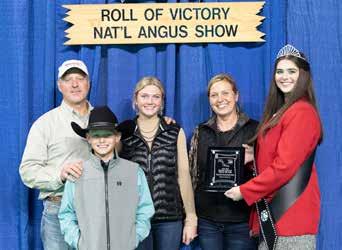
Reserve Senior Bull Calf Champion of the Year Destinys Back in Black 320
Owned by Morgan Hutchins, Ill., and Sawyer Eastridge, Ind.
Pictured: Brian, Talon, Sienna and Lora Hutchins; and Miss American Angus Rosalind Kidwell.
2025 Cattlemen’s Congress Super Point Roll of Victory Angus Show
Oklahoma City, Okla. | January 8-11 | Judges: Abdres Foster and Scott Foster, Michigan
Photos by Next Level Images

Junior Heifer Calf Champion Division 1
SSF Proven Queen 4048
Owned by Breckyn Bloomberg

Tied for Intermediate Champion Bull of the Year W G A Maverick 12K
Owned by Holly Marsh, Ill., and Jbell Angus Genetics LLC, Mo.
A reliable business partner is difficult to come by. Contact the American Angus Association® to locate Angus genetics, select marketing options tailored to your needs, and to access programs and services. Put the business breed to work for you.
Contact American Angus Association: Direct: 816-383-5100 angus@angus.org
2025 National Western Stock Show’s Junior Angus Show
Denver, Colo. | January 16 | Judge: Parker Henley, Okla.
Photo by Legacy Livestock Imaging

Reserve Grand Champion Bred & Owned Female PVF SFA Blackbird 3303
Owned by Ashton Dillow, Villa Ridge, Ill.
2025 National Western Stock Show’s Super Point Roll of Victory Angus Show
Denver, Colo. | January 17 | Judge: Jake Scott, Neb.
Photo by Legacy Livestock Imaging

Reserve Senior Heifer Calf Champion SCC Phyllis 3110
Owned by Ella Brooks, Prophetstown, Ill.
2025 Illinois Beef Expo Junior Show
Springfield, Ill. | Feb. 21-23 | Tyler Norvell & Brady Jensen
Photos by Cindy’s Livestock Photos
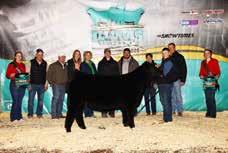





Division 1 Champion Angus
Heifer Rings A & B
Shown by Macie Bartlow

Division 3 Champion Angus
Heifer Rings A & B
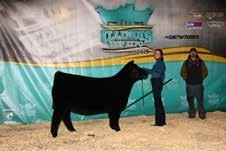
Division 1 Reserve Champion
Angus Heifer Rings A & B
Shown by Addison Bartlow
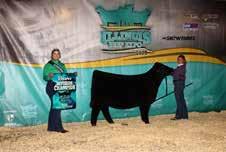
Division 3 Reserve Champion
Angus Heifer Rings A & B
Shown by Kaylie Shelton
Division 2 Reserve Champion
Angus Heifer Rings A & B
Shown by Addison Bartlow

Division 4 Reserve Champion
Angus Heifer Rings A & B
Shown by Conley Schick




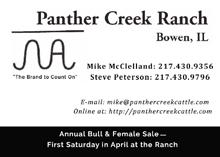
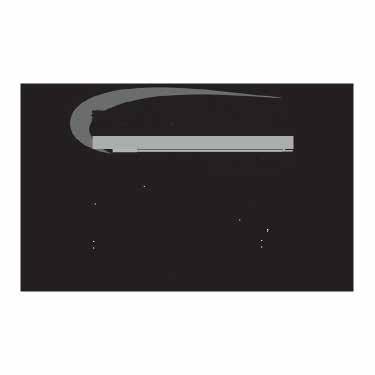


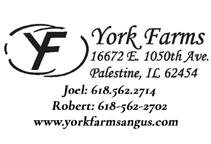





PRESIDENT
Craig Crutcher
815-289-2855
VICE PRESIDENT
Travis Meteer 217-430-7030
MEMBERSHIP SERVICES
Noah Benedict 217-372-8009
nojo1132@gmail.com
TREASURER
Buddy Edenburn 217-649-0108
BOARD OF DIRECTORS
Matt Anderson - 309-267-1410
Dave Biggs - 815-285-0227
Andrew Spinazola - 309-313-2191
Jimmy Bernard - 779-771-4687
Kim Carney-Rhodes - 217-899-4104
Chad Crane - 815-712-5739
Yale Young - 815-867-7333
Lucas Stumpf - 618-830-0971
Tammy Boatman - 770-354-4195
Mark Stephens - 217-825-7913
Matt McCaskill - 217-779-0775
Corey Perry - 217-294-2934
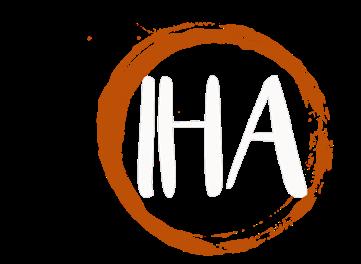
the 2025
As I sit down to reflect on the past year of being the president of the Illinois Hereford Association I realize that I am blessed in so many ways. I will tell you the last thing I wanted, or needed was to be the president of our Association but as my time winds down and the election of a new president nears I could not be more satisfied that I had this opportunity. It is amazing to realize that I have friends, family and fellow breeders that share the same dreams and most have the same passion and vision that I have towards the livestock business and the Hereford breed.
Speaking of the Livestock business, we are in some uncharted territory in the prices of cattle. This surge in prices continues to push to levels we have never seen and some of us might not have a chance to ever see again. They say what goes up must come down and that is so true, but it looks like we could enjoy some good prices for a little while longer. I know the demand for Hereford genetics continues to be at an all time high. There will be several opportunities to support your fellow Hereford breeders this spring with in-person and online sales throughout Illinois.
I would like to congratulate all the consignors and the sale manager, Noah Benedict, on yet another great Illinois Winter Classic sale. This sale is definitely one we as breeders can support and be proud to call our own. Check in with the Illinois Hereford website or the Illinois Hereford Bulletin for the exciting details for next year’s sale.

In closing, I would like to thank the entire board of directors for your help in making 2024 a great and exciting year. I would like to thank Noah Benedict, the membership services manager, for the endless tasks that you have taken on in your new position. Last but not least, Buddy Edenburn you have been the one constant throughout both my tours of duties on the board and as Jr. Advisor. I can not thank you enough as the president or as a member for what you have done for our association over the years.
If you did not have a chance to attend the 2025 Annual Meeting/Banquet which was held during the Illinois Beef Expo at the IBA office in Springfield on February 22, 2025. I would encourage you to pay your dues and become a member of the Illinois Hereford Association so you can share the enthusiasm and momentum that we have created and to also be a part of the great things yet to come.
Never forget that faith, friends, family and Hereford Cattle are what motivates us everyday to be better, do better, and to provide more for everyone.
Thank you,
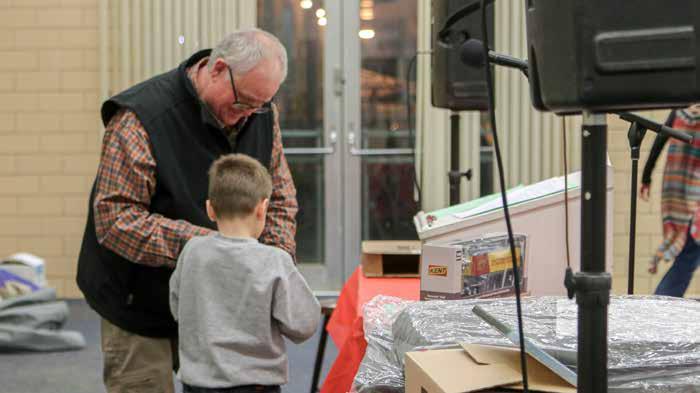
Greetings,
I hope the start to the new year has been promising and the weather pleasant for each of you as we work through Q1 of 2025. After extended time spent in Oklahoma City and Fort Worth, we are off to the races in Territory 5 and are preparing for what looks to be a stellar spring sale season.
As you could imagine, I field a variety of questions in this role. Second to the question of “How long will this trend of prices last?”, one of the most frequent topics of conversation seems to be centered around the “What is a good bull worth these days?” While I won’t put a number on it, let me provide some context as we look towards the impending sale season. In Fiscal Year 2024, the AHA field staff reported 7,182.3 bulls sold for an average price of $6,751 nationwide. Taking this baseline, we add in the unprecedented demand for Hereford-influenced genetics in the commercial sector and a record low national cow herd that has resulted in a shortage of available cattle to feed. I’d suspect it’s safe to say each of you cashed the biggest check you have ever received for your commercial calves at the yards. All these factors are things to consider when selecting your next herd bull this spring.

Our field staff is here to assist you with anything you may have questions about. If there are cattle in sales that peak your interest anywhere in the country or Canada, please reach out to myself and my counterparts if we can put eyes on the cattle and provide an appraisal for you. Our contacts are all listed on the AHA website. Additionally, you can find a current list of all upcoming sales and events on our calendar on the AHA website as well.
Thank you all for a tremendous 2024. We are excited to press forward and elevate the enthusiasm for the Hereford breed into the new calendar year!
All the best,

President Kevin Babbs called the meeting to order – 135 people were present, representing 42 memberships, constituting a quorum. The Secretary’s minutes from the 2024 meeting and the Treasurer’s Report for 2024 were circulated and opened for discussion. Luke Lemenager moved to approve the IHA’s minutes from the 2024 Annual Meeting. Kent Burns seconded. Motion passed unanimously. Corey Perry moved to accept the IHA’s Treasurer’s report. Chad Benedict seconded. Motion passed unanimously.
Tracie Sayre, President, gave the Illinois Hereford Women report. Introduced the IHW Board, Anette Crane Vice President, Melissa Bernard Secretary, and Lisa Edenburn Treasurer. The IHW had some silent auction items with all funds going to support the state queen and princess program along with other IJHA programs.
Kade Boatman, President of IJHA addressed the membership and updated on the recent activities of the Illinois Junior Hereford Association and National Junior Hereford Association. Preview Show 2024 is in Belvidere hosted by the Boatman and Richardson Families, JNHE is in Louisville, KY. Kade also discussed 3 Illinois members who are attending the Bold conference. Also, updated information on the Fed Steer shootout.
Buddy Edenburn, committee chair for the Junior Scholarship committee, recapped the Junior Scholarships and Awards programs. Award programs available in 2025 will include the Sam Taylor and Wayne Sage Scholarship, Junior Prospect Award, and the Faces of Leadership Scholarship.
Noah Benedict updated the membership on plans for the 2025 Illinois Hereford Tour and announced that it will be in northern Illinois. Stops will be Storey Show Cattle, Thousand Hills Herefords, Perks Ranch, Richardson Farms and Mud Creek Farms. The tour is on August 23rd and 24th. There is a hotel block at Holiday in Rockford under Perks Ranch.
Noah next discussed the new website hosted by Ranch House Designs is up and running. This is a new look and provider. More changes and additions are coming.
Finally, Noah discussed the highlights of the 2024 Winter Classic. A total of 35 lots were sold averaging $4,450. The sale went well despite an ice storm the morning of, which showed the strength of Hereford genetics. Anyone wishing to participate in the 2025 sale should contact Noah. The association is looking for high quality Hereford and Herford influenced commercial females.

Award Presentations:
• Yale Young honored Crane Herefords, LaSalle IL as the IHA Breeder of the Year.
• Scott Torrance honored Dave and Susan Anderon, IL as the IHA Hall of Fame Inductee.
• Craig Crutcher also recognized Kevin Babbs, Matt Anderson, David Biggs and Kim Carney-Rhodes as outgoing IHA board members and officers.
Craig Crutcher presented the Director Nominating Report and recommended the following individuals to serve a three-year term:
• Region 1 – Tammy Boatman, Rockford, IL
• Region 2 – Matt McCaskill, Timewell, IL
• Region 3 – Mark Stephens, Taylorville, IL
• At Large – Corey Perry, Tower Hill, IL
Randy Kline moved to accept the nominations. Luke Lemenager seconded, and the motion passed unanimously.
Seeing no further business, Kent Burns moved to adjourn the meeting and Jimmy Bernard seconded. Motion passed unanimously.
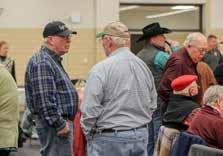
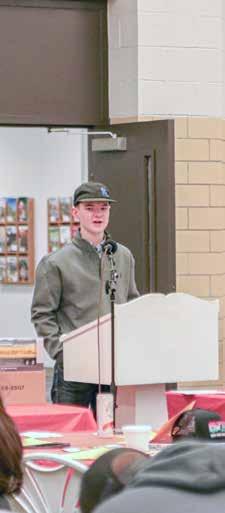



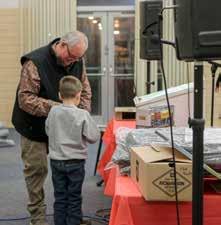

Dave Anderson grew up on a dairy farm in Gibson City and became a Hereford enthusiast early in life, purchasing a Horned Hereford for a 4-H project from a local breeder. Out of high school, he went to work for Beau Brehm L Ranch in Belle Rive, Illinois, then began working breed sales. In 1967 Dave started working at Tjardes Farms part time, then full time around 1971. Loving his work, Dave was awarded Herdsman of the Year in 1975 at the National Polled Hereford Show in Kansas City. That year Tjardes Farms had the Grand Champion Female and Reserve Champion Bull.
In 1977 Dave judged the Showmanship contest at the Junior National in Oklahoma City, where he met his future wife Susan. They were married in 1979 and George and Harry gave Dave and Susan a heifer for their wedding gift. While at Tjardes Farms, interns were Scott Torrence, Tom Wall, Ron Springer and others, with Donny Golden and Ken Heaton a part of the “crew”. Dave remained a close friend of George and Harry until their passing and continues the friendship with Phil and Jeremy. Son Matthew was born in 1981. They then moved to Morton in 1982 and son Paul was born in 1983. Dave and Susan owned 6 cows when they moved to Morton to begin farming. In 1985 they hosted the Illinois Field Day and in 1986 they exhibited at the newly formed International Polled Hereford Futurity in Louisville and were awarded Grand Champion cow/ calf with a natural calf as well as Grand Champion cow/calf with an embryo calf. Dave also showed many champions over the years at national and state shows, primarily Illinois and lowa State Fairs. Dave was a founding member of the Illinois Beef Expo that started in 1988 and continues today as one of the premier Junior Shows in the country. Dave and Susan feel so blessed that Matthew and his wife Tammy and Paul and his wife Lara continue their love of cattle, particularly the Hereford breed, and are also so thankful for the love their grandchildren Allie, Lilly, Ty and Griffin have for showing Herefords. It has been a true gift to serve and show with so many wonderful friends. Congratulations to the newest members of the Illinois Hereford Association Hall of Fame!
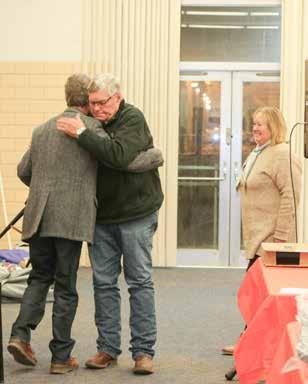

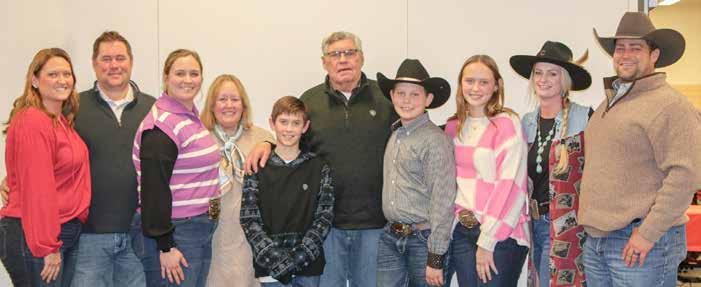
Crane Herefords started raising dairy cattle and purchased their first Hereford in 1956. Soon after the herd began to grow as father and son shared a love for Hereford cattle. One year, a Hereford boy met a dairy girl and their family would grow and continue to show at county fairs all over the state. The third generation of breeders soon began exhibiting and in the late 1990’s showed either the grand champion or reserve champion Horned Heifer three consecutive years at the Illinois State Fair Junior Show. They decided it was time for something more and in 1998 they traveled to their first junior national
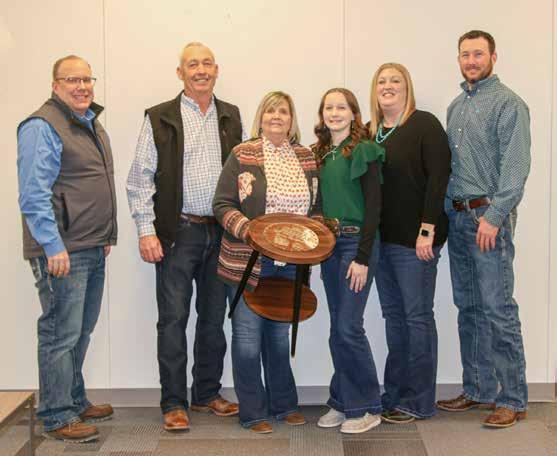
in Springfield, Illinois. The Crane family got last in class, a far cry from those county fair champion days. After a lot of hard work and a few learning curves, they exhibited their first class and division winner at JNHE in Tulsa in 2000. From then on Crane Herefords has raised cattle that have won at both the state and national level, including champion bred and owned and Horned Hereford at the 2004 Illinois Preview Show, raising the 2010 Reserve Champion Hereford female in Louisville exhibited by the Behrends family, all while serving many years as IJHA advisors. They also have continued to raise the fourth generation of exhibitors, as all seven grandchildren exhibit at the state and national levels. Crane’s have raised some dominant breed influencers that include CH Enuff Profit, a bull that they sold to the Hawk family and went on to sire multiple national champions, and Crane Style Points, the dam of multiple national champions for Buck Cattle and influential piece in the Hawk and Happ breeding programs. In 2021 they exhibited a reserve division bred and owned heifer with Crane Nevaeh, who soon proved to be influential in their program. In 2024 Crane Herefords had a memorable Illinois Preview Show as they exhibited champion junior showman, champion Bull with Crane The Boss 233, champion bred and owned heifer with Crane Nirvana 2317, and bred the reserve champion steer. They also exhibited the champion horned bull at Illinois State Fair and had the champion Hereford Bull and 3rd overall bull at World Beef Expo. To end 2024, Crane Herefords topped the Illinois Hereford Association Winter Classic Sale with another Nevaeh daughter. As this family closes in on 60 years of raising Herefords there is a bright future continuing on the tradition. Congratulations to Crane Herefords on being named the 2024 Illinois Hereford Association Breeder of the Year!

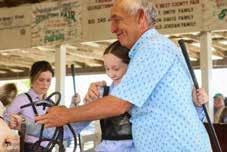


Polled Division 1 Champion
CFCC HPH Marley 26M ET
Owned by Hadley and Olivia Eubank

Polled Division 2 Reserve Champion
RGR PURPLE Lilibet 34M ET
Owned by Riley Rhodes
Polled Division 1 Champion
HAWK GKB Bearhunter 19M ET
Owned by Hawk Livestock
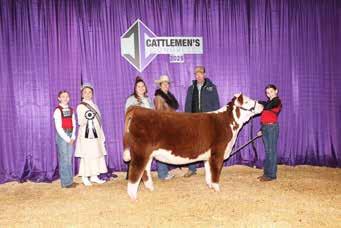
Polled Division 1 Reserve Champion
PURPLE HB Lainey 101M ET
Owned by Hadley and Olivia Eubank
Polled Division 2 Champion
RGR PURPLE Lilibet 34M ET (Pictured left)
Owned by Riley Rhodes

Horned Division 2 Champion
HAWK Priya 11M ET
Owned by Macy Michelini
JUNIOR SHOW

Horned Division 2 Reserve Champion
PERKS 1503 Candice 4001 ET
Owned by Alexsys Hammond
OPEN BULL SHOW

Polled Division21 Reserve Champion
BK River 9182M
Owned by Humphrey Cattle Company
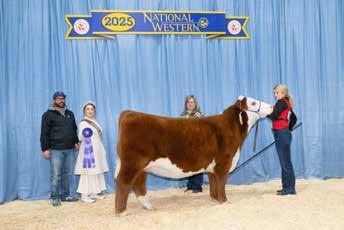
Polled Division 3 Champion
KJ 746D Coco Carmel 321L ET
Owned by Paige Lemenager
OPEN HEIFER SHOW
Polled Division 3 Champion
KJ 746D Coco Carmel 321L ET (Pictured above)
Owned by Paige Lemenager
PEN SHOW
Reserve Champion Pen of 3 Spring Bull Calves
Owned by Lorenzen Farms

OPEN HEIFER SHOW
Horned Division 2 Reserve Champion
BP SP EF 2296 REN 4M ET
Owned by Bailey and Shelby Pearl
2025 Illinois Beef Expo Junior Show
Springfield, Ill. | Feb. 21-23 | Tyler Norvell & Brady Jensen Photos by Cindy’s Livestock Photos

Champion Hereford Steer Ring A
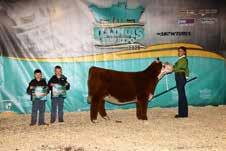
Reserve Champion Horned Hereford Heifer Rings A & B
Shown by Abagayle Britton

Champion Polled Hereford Heifer Ring A Shown by Macy Michelini

Champion Hereford Steer Ring B, Reserve Champion Ring A Shown by Makenzie Huls

Reserve Champion Hereford Steer Ring B Shown by

Fifth Overall Heifer Ring A Champion Horned Hereford Heifer Rings A & B Shown by Ty Pezanoski
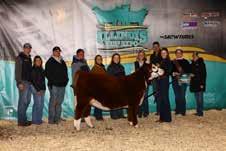
Reserve Champion Polled
Hereford Heifer Ring A
Shown by Faith Benedict

Champion Polled Hereford
Heifer Ring B
Shown by Nolan Lee
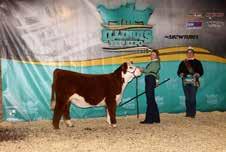
Reserve Champion Polled
Hereford Heifer Ring B
Shown by Brenna Bartlow
3/25/2025 May/June Hereford World Ad Deadline
4/3-4/6/2025 BOLD Leadership Conference - GKB Hi Point Ranch, Desdemona, Texas
4/12/2025 NJHA Fed Steer Shootout Field Day - HRC Feed Yard, Scott City, Kansas
4/15/2025 HYFA Spring Scholarship Deadline
4/15/2025 Young Breeder’s Competition - Team USA Application Deadline 5/15/2025 JNHE Earlybird Entry Deadline
GENERAL INFORMATION
When: Friday June 13 – Sunday June 15, 2025
Where: Boone County Fairgrounds, 8847 IL-76, Belvidere, Illinois
Entries: SHOWMAN.APP Open May 1 and Close June 1— NO Late Entries
Show Hosts: Tom Boatman and Jamie Richardson families Rule Change: All shows will be no-fit, voted on by the IJHA Board of Directors
Thursday
6:00 p.m. - Grounds open for set up. PLEASE DO NOT ARRIVE BEFORE 6p.m.
Friday
• CHANGE: 1:00-3:00 p.m. - Check-in & Hereford Bowl Test
• NEW: 3:00-4:00 p.m. - Fitting Demonstration
• 4:30 p.m. - Fitting Contest
• 6:00-7:30 p.m. Hereford Homeroom
ο All juniors are invited to attend, Pizza will be provided Saturday
• 9:00 a.m. - Opening Ceremonies
• 9:15 a.m. - Showmanship (youngest to oldest, Pre PeeWee at the end)
• Bred and Owned Show begins at the conclusion of showmanship.
ο Show Order: Cow/Calf, Bulls, B&O Heifers, Steers (All Non-Fit)
• Scholarship Interviews (Sam Taylor Memorial Scholarship, Wayne Sage Memorial Scholarship), Speeches (Illustrated Speech, Advanced Speech, Individual Sales & Sales Academy)
ο Approximately 30 minutes after the conclusion of the show
• 5:30 p.m. - Junior Meeting (in the show ring, board meeting to follow)
• 7:00 p.m. - Banquet (in the show ring)
Sunday
• 7:45 a.m. - Group photo at photo backdrop with IJHA T-Shirts prior to the beginning of the show. T-Shirts must be worn during the show.
• 8:00 a.m. - Owned Heifer Show (Non-Fit)
Headquarter Hotel Block
• Holiday Inn, 7550 E State St, Rockford, IL
• (815)398-2200
• Ask for IL Junior Hereford Preview Show Group
• Reservations must be made by May 22, 2025 to receive $119 rate
Camping
$45 per night, 30 or 50 AMP, covers water & electric Reserve and pay through Showman.app
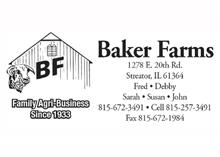

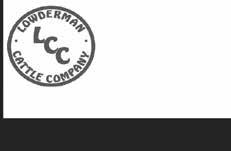

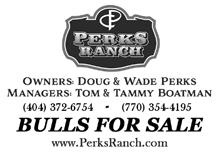











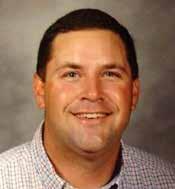
Last week we enjoyed the Illinois Simmental Association Banquet at the Illinois Beef Expo. We had a nice crowd, but there is always room for more at our table! We continue to work to make the organization worth your time and effort to be involved. I shared the following story in my President’s remarks and wanted to share it here as well.
My Simmental Story started with two bred heifers for a 4-H project in 1983. It was my first year of 4-H, and a neighbor had recently begun raising and marketing purebred Simmental cattle. Of course, the heifers were red and white and yellow and white and were horned. Dad was a pig guy, we didn’t know anything about show cattle except for mom’s cousins who showed Herefords. I got to help them show in a group class at our local county fair and was hooked! Our first venture with my own cattle to a show was in a ‘77 Chevy pickup with stock racks and a yellow January bull calf named “Thunder”. The local insurance salesman took a Polaroid picture of us and we thought we were really getting it done!
We showed at the local county fairs for a few years, before venturing off to our first every American Junior Simmental Association Regional Classic in Lincoln, Illinois, in 1987. In preparation, the association had sent out a gigantic three-ring binder full of information that young people should be learning about the breed and the industry. I poured over that binder for hours, learning about good stockmanship and the history of the breed. Once we got to Lincoln, we realized that we were not ready for “Prime Time” and probably weren’t ready to show at such a high level. While it would have been easy to have been embarrassed and not want to participate again, the people there welcomed us with open arms, and made us feel part of the group. They showed us how to improve, and what we could do to be more competitive in the future. There were lots of people there to make sure the event ran smoothly and that the participants had a great experience.
Fast forward to adulthood, and I’ve always prided myself on raising Simmental cattle, and raising my kids with the opportunity, should they want, to participate in this breed and develop their own Simmental story. I’m so proud of the opportunities that they have taken advantage of that I never took as a kid. Today, my daughter has the opportunity to serve on the AJSA board, and I see her and her fellow board members making sure that kids who show up to events feel that same sense of belonging and are welcomed. In Fact, people have always “stepped up” to make things happen for our breed, our kids, and our industry. Now it’s my turn to return the favor.
As President and as a board, I think we have challenges and opportunities in front of us. Like any organization, we’re challenged to look at our program of work and ask ourselves if we are doing something just because that’s how it’s always been done or is there a better way to consider.
As a Breed Association, I believe we are challenged by the evolution of the Purebred Livestock Industry. Technology advancements make it so that a wider number of people can access elite genetics and compete. As a result, I think we can agree that there are fewer true seedstock producers to serve as an association. The breeding flexibility of the Simmental creates a situation where there just aren’t a lot of operations with pastures full of only purebred Simmental cows. What do we do as an association to serve those people who are dabbling in Simmental, and what do we do to serve those whose sole purpose of the operation is to breed and market Simmental Genetics. Often those are two different things.
One thing that we are absolutely great at is supporting our young people. Without hesitation, I will declare from the highest mountain that we have the best Junior Association in the Simmental breed. Our kids are prepared and competitive at any AJSA activity that they participate in. They put on a great showing at all facets of the national and regional classics, they are well represented in AJSA Merit Awards, and we’ve had representation on the AJSA National Board of Trustees by some great kids, and I expect that to continue. That’s a credit to great kids, fantastic Junior Advisors, and parents that support all the kids like they do their own.
I’m proud of the board I have an opportunity to serve with, and I assure you we are looking at these challenges and opportunities and working on how to best serve the needs of the breed and give people a reason to believe that it’s worth their time and money to be a member of the Illinois Simmental Association.
Thanks for your time-




Member of the Year
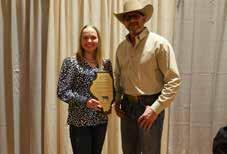
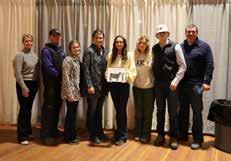
2024 Illinois Simmental Association Annual Banquet and Awards Presentation
February 23
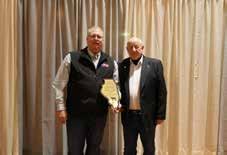
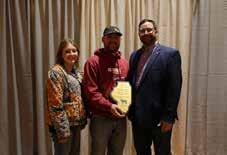

Junior Achievement
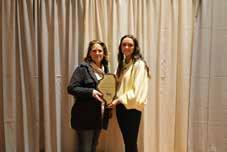
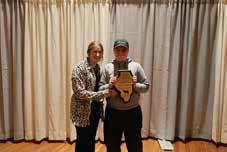
Junior Leadership



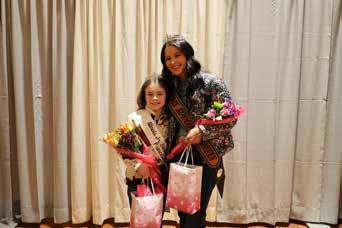
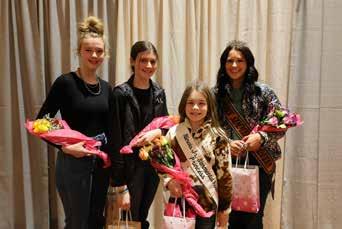
Springfield, Ill. | Feb. 21-23 | Tyler Norvell & Brady Jensen
Photos by Cindy’s Livestock Photos

Champion Simmental Steer Rings A & B
Shown by Maci Brooks

Third Overall Heifer, Champion Simmental Heifer Ring B& Reserve Champion Ring A
Division 3 Champion Simmental Heifer Rings A & B
Shown by Ellie Drach

Reserve Champion Simmental Steer Rings A & B
Shown by Brynlee Hodel

Division 1 Simmental Heifer Rings A & B
Shown by Jolie Johnson
Champion Simmental Heifer Ring A, Reserve Champion Ring B, Division 2 Champion Simmental Heifer Rings A & B: Avery Seys
Division 1 Reserve Champion Simmental Heifer Ring A: Gracie Lashmett
Division 2 Reserve Champion Simmental Heifer Ring A: Glennys McGurk
Division 2 Reserve Champion Simmental Heifer Ring B: Addison Bartlow
Division 3 Reserve Champion Simmental Heifer Ring A: Lilian Unger
Division 3 Reserve Champion Simmental Heifer Ring B: Carter Hoge
Division 3 Champion Simmental Heifer Rings A & B: Quinten Frederick
Division 4 Reserve Champion Simmental Heifer Rings A & B: Curt Lemenager
Reserve Champion % Simmental Heifer Ring A, Division 3 Reserve Champion Ring A: Harper Gabel
Division 3 Champion % Simmental Heifer Ring B: Gracyn Welsh
Division 4 Reserve Champion % Simmental Heifer Ring A: Colin May
Division 4 Reserve Champion % Simmental Heifer Ring B: Trevor Hale

Division 1 Reserve Champion Simmental Heifer Ring B
Shown by Abagayle Britton

Grand Champion Heifer Ring B & Third Overall
Ring A, Champion % Simmental Ring A & B
Division 3 Champion % Simmental Heifer
Shown by Breckyn Bloomberg

Reserve Champion %
Simmental Heifer Ring B,
Division 1 Rings A & B
Shown by Addison Bartlow
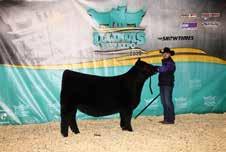
Division 2 Champion %
Simmental Heifer Ring B,
Reserve Champion Ring A
Shown by Tyler Miller


Division 1 Reserve Champion %
Simmental Heifer Rings A & B
Shown by Anna Webel
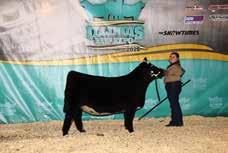
Division 2 Reserve Champion % Simmental Heifer Ring B
Shown by Grace Lemenager

Division 2 Champion %
Simmental Heifer Ring A
Shown by Paisley Schick
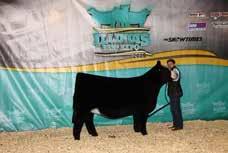
Division 4 Champion %
Simmental Heifer Rings A & B
Shown by Carson Beckman

Illinois Charolais Association O cers
President: SharleneBullard- 815-343-9381
Vice President: Marla Todd- 217-840-5949
Secretary/Treasurer: Robb Creasey- 309-255-7799
Members:
LaFraise Farms, Flanagan
Dale - ehcstreB 5-67 4-4419 5932-476-518Steve - ehcstreB
Bertsche Farms, Flanagan Troy Bertsche- 815-67 4-1244
Bewely Farms, Yates City Beau Bewely - 309-358-143 4 / 309-208-0786
Bullard Cattle Co., Cornell Paul Bullard- 815-343-9380 Sharlene Bullard- 815-343-9381
Creasey Charolais, Macomb Robb Creasey- 309-255-7799
D-Mar-Mac Charolais, Warsaw Sam Zumwalt- 217-256-4619
Tom Engel, Flanagan815-674-5140
Grusy Bros., Gridley Frank Grusy- 309-747-2696
K&D Cattle, Elizabeth Kelley- 815-275-8904 Devin- 815-858-2318
Nord Farms, Bloomington Ron Nord - 309-275-0409

Barnard Farms, Foosland Matt Barnard217-417-7699
Michael Potthast, New Douglas217-456-1266
Joseph Potthast, Sorento - 217-456-1266
Christine Potthast, New Douglas217-456-1266
Roger Elliot, Greenview - 217-416-8981
Marla Todd, Foosland - 217-840-5949
Steve Hoag, Illinois City - 563-506-0544
Link Livestock, Rio 309-297-0293
2025 Illinois Beef Expo Junior Show
Springfield, Ill. | Feb. 21-23 | Tyler Norvell & Brady Jensen
by Cindy’s Livestock Photos

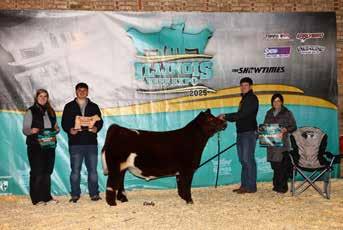
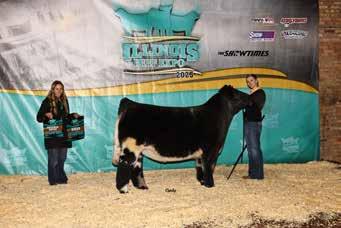
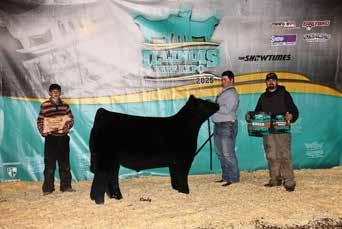
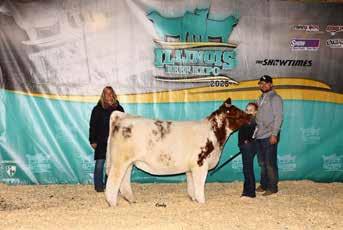











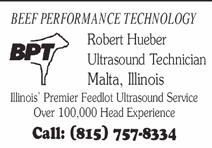

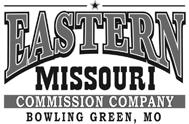

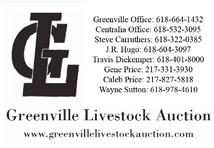




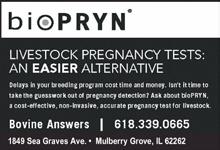


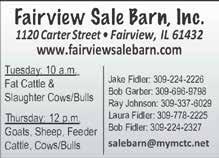














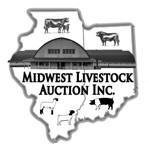

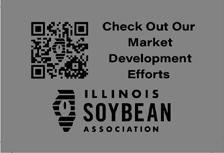






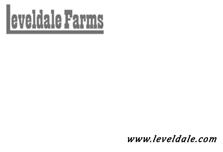


Illinois Beef, printed bi-monthly, is the official publication of the IBA. It serves as the voice of Illinois’ 12,000 beef producers.


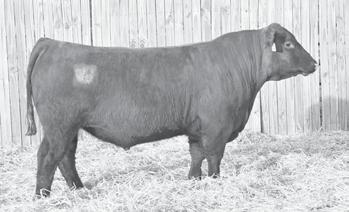
WPRA Andras Madison H047 #4379123
Andras Keynote J150 #4587391
Andras Deep End ET K010 #4648459
Andras Executive Order J038 #4479341



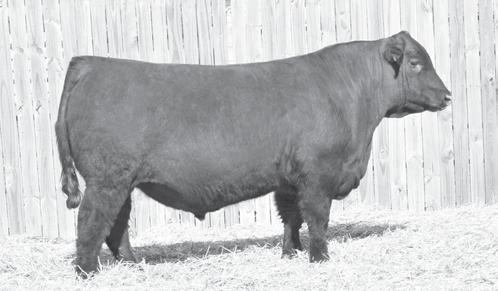
EGL Guidance 9117 #4208972
ALC Infinity H26 #4916242
WSM Playmaker 1080J #4468115
BB Propulsion L176 #4169122
Andras TN Flat Top Box J174 #4589869
BB Security M020 #4457695
Andras Upstream J142 #4589915
Andras Peyweight J210 #4582591



